- 15 Best Places to Visit in China (2024)
China, a captivating blend of history and natural beauty, beckons travelers with its incredible destinations.
From ancient wonders to modern marvels, there is no shortage of incredible places to explore in this vast nation.
These 15 places we've selected are great ideas for your annual family trip, birthday trip, anniversary trip, bucket list trip, or any other big milestone trip.

Content Preview
- 1. The Great Wall
- 6. Zhangjiajie National Forest Park
- 8. Shanghai, Hangzhou & Suzhou
- 9. Huangshan
- 10. The Silk Road
- 11. The Greater Bay Area
- 13. Jiuzhaigou
- 14. The Yangtze River
- 15. Inner Mongolia
1. The Great Wall — Top Landmark of China
The Great Wall is an absolute must-see when visiting China, particularly for first-time travelers. This ancient and magnificent military defense project, spanning tens of thousands of kilometers, continues to emanate a distinct allure.
Aside from the option of visiting the Great Wall via cable car, embarking on a hike along the Wall would also serve as a fantastic means of exploration .
For those with ample time and a penchant for adventure, camping on the Great Wall could be an exhilarating experience.
During summertime visits, it is highly recommended to explore the Great Wall at night to escape the heat. Alternatively, witnessing the sunset and indulging in a prepared picnic would make for a delightful experience.
If you are planning a trip to China and want to make an itinerary based on your interests and requirements, feel free to contact us . Our tour services are personalized .
2. Beijing — The Ultimate Destination for First-Time Explorers
Beijing, the capital of China, is the most popular tourist destination in China every year. You could get the maximum experience of Chinese culture and history from one destination.
There you could learn some stories about Chinese emperors by walking in the Forbidden City, which was once their home.
For foodies, Peking Duck is not to be missed, and there are plenty of hidden snack bars in the hutongs.
If you want to experience the bustling (or leisurely retired) life of Beijingers, you could visit a Beijinger family in the hutongs or walk around a local community with markets and parks.
3. Xi'an — Embrace the Essence of Culture in a City Steeped in History
One of the most popular China destinations among foreign travelers, Xi'an particularly attracts tourists on their first trip to China.
The Terracotta Army in Xi'an is considered one of the most significant archaeological sites in the world. More than 6,000 life-size terracotta warriors and horses have been unearthed, all with different expressions and poses. Many remain interred.
For a richer experience and better understanding, we would arrange a hands-on experience of making your own clay warriors. Here you could get more ideas for your China trip on Top 10 Unique Experiences in China You Won't Miss
If you are looking for outdoor activities with your kids, we recommend a bike ride along Xi'an's 600-year-old Ancient City Wall where you could have a good all-around view of the city.
Hanging out and snacking on the Muslim Streets could also be a wonderful choice.
4. Chengdu — A Captivating Haven for Panda Enthusiasts
To make your first trip to China complete with a panda encounter, Chengdu cannot be missed.
Chengdu is the best place to see pandas in China. You could also take part in volunteer programs to take care of giant pandas.
During the program, you would break bamboos and wash some bamboos shoots, clean the glass of their enclosures, make their favorite cakes, watch them being fed, and get a souvenir certificate. See more on How Long to Spend in Chengdu .
5. Tibet — A Bucket List Favorite
Tibet is a sacred place for Buddhists as well as a bucket list destination for many travelers.
It is overflowing with rich Tibetan culture, characteristic Tibetan architectural structures, and unspoiled plateau scenery. Read more on How Long to Spend in Tibet .
There you could explore the Potala Palace, which is an iconic landmark in Tibet, travel to Everest Base camp and stand in front of the "Apex" of the Roof of the World, and gaze at the beauty of Yamdrok Lake and Namtso.
If you are traveling with kids and want to have some special experience, we recommend an interesting camp experience with a nomadic family on their pasture and working together with them. All our tours are customized.
- 5-Days Lhasa Classics and Lake Yamdrok Tour
- 8-Days Lhasa to Everest Base Camp Tour
6. Zhangjiajie National Forest Park — Nature Lover's Paradise
Zhangjiajie National Forest Park, featuring precarious peaks, limpid streams, dense forests, large karst caves, and biodiversity, is one of the must-see scenic areas in China.
It was thrust into foreign travelers' eyes via the movie Avatar. The Hallelujah Mountains were inspired (in part) by peaks like Heavenly Pillar in the park.
Experience the breathtaking beauty of a sea of clouds by taking a cable car to the mountaintop. Walk along the steps, and you'll witness spectacular views unveiled before your eyes, offering a unique perspective from various angles.
Additionally, the cool and refreshing air will rejuvenate your mind, making it an ideal summer retreat. See our popular China tour with Zhangjiajie: 14-Day China Natural Wonders Discovery
7. Guilin — A Family Adventure Awaits in Nature's Playground
Guilin's idyllic scenery draws millions of tourists from near and far every year. Its marvelous limestone scenery is renowned as "the most beautiful on earth". The fresh air and countryside scenery make it an ideal place to escape industrial pollution.
Relax on a Li River cruise and enjoy its stunning karst landscapes. Go to Yangshuo, the tourism-magnet town near Guilin. You could also enjoy some time relaxing on a bamboo raft ride, bicycle, and/or sidecar tour to explore the countryside.
If you are seeking an adventurous experience with your kids, explore a wild limestone cave or discover a beautiful valley that is still mostly unknown, even to locals.
Going kayaking to enjoy the cool water and appreciate the karst scenery along the river could also be a wonderful family activity, especially in the summer.
8. Shanghai, Suzhou, and Hangzhou — 1 Hour by Bullet Train
High-speed rail gives you some new comfortable and convenient China tour options. Suzhou and Hangzhou are now only an hour's travel by bullet train from Shanghai!
In Shanghai, explore the Bund in-depth and its historical buildings and visit the world's biggest Starbucks and see how AR (augmented reality) is used in the store.
In Hangzhou, you could visit a tea plantation to see how farmers pick tea leaves and discover the process of making tea.
A trip to Suzhou will let you appreciate the charm of traditional Chinese gardens and water towns. See more on How to Plan a Trip to Shanghai, Hangzhou, and Suzhou .
9. Huangshan — Where Majestic Mountains Paint an Unforgettable Landscape
The legendary natural scenery is the highlight of Huangshan. It has "the most beautiful mountains in China". The Yellow Mountains, with their seas of clouds, oddly-shaped rocks and pines, and hot springs at the mountain foot, attract many many visitors.
Besides the enchanting mountains, you could also see the beautiful surrounding countryside. Escape to a rural utopia in Bishan village and see how artists have turned this small area into a rural paradise.
- 3-Day Ancient Villages and Yellow Mountains Tour
- 12-Day Shanghai, Huangshan, Hangzhou, Guilin, and Hong Kong Tour - Selected Picturesque China
10. The Silk Road — Embark on an Unconventional Journey Through History
The Silk Road would show you a different China. It was once the most prosperous trade route in China. Even if it is no longer as prosperous as before, it is still proud to show its unique charm, waiting for every visitor to find its brilliance.
You would see marvelous landscapes with unique Danxia landforms, pristine deserts, and crystal lakes. Visit the old Mogao Caves to see fine murals and learn about how Buddhism entered China. See more on How Long to Spend on the Silk Road .
Feel its exotic culture in Xinjiang by visiting its lively bazaars, and mosques, and meeting friendly locals.
- 7-Day Xinjiang Highlights Tour
- 13-Day Beijing–Xi'an–Dunhuang–Urumqi–Shanghai Tour - Silk Road Highlights and China's Gateway Cities
11. The Greater Bay Area (Guangdong, Hong Kong, and Macau) — Unveiling a Visa-Friendly Paradise
With its unique blend of cultures, this vibrant region offers many attractions.
From exploring the bustling streets of Hong Kong and admiring the skyline, to experiencing the glamorous Portuguese architecture in Macau and indulging in delicious Cantonese cuisine in Guangdong, there is something for everyone.
Besides, you could explore more in Guangdong to discover its Lingnan culture, such as watching amazing lion dancing and learning the Wing Chun style of kung fu in Foshan .
Hong Kong and Macau offer visa-free access to numerous international tourists, while Guangdong province also allows visitors to make use of the 144 visa-free transit policy .
12. Yunnan — Where Outdoor Adventures Meet Serene Natural Beauty
Located in Southwest China, Yunnan enjoys pleasant weather, warm in winter and cool in summer.
It is the most diverse and colorful area in China. There you could hike across Tiger Leaping Gorge, which is one of the deepest gorges on the planet, visit the majestic Jade Dragon Snow Mountain, enjoy a lazy time in the old towns, visit a non-public dormitory of Songzanlin Monastery, bike with the refreshing breezes of Erhai Lake...
All our tours can be customized. Contact us to create a trip according to your group size, time, budget, interests, and other requirements.
- 8-Day Kunming, Dali, Lijiang, and Shangri-La Tour - Meet the Amazing Beauty of Yunnan
- 9-Day Yunnan Family Tour - Kunming, Dali, Lijiang, and Shangri-La
13. Jiuzhaigou — Immerse in the Serene Splendor of Lakes and Natural Beauty
Jiuzhaigou, located in Sichuan province, is a must-visit destination in China, especially for nature enthusiasts.
Its colorful lakes, cascading waterfalls, snow-capped peaks, and unique ecosystem make it a fairyland.
Take leisurely walks along the wooden boardwalks, immersing yourself in the serenity.
14. The Yangtze River — Embrace Serenity and Rekindle Your Affinity as Couples
The Yangtze River, the longest river in China and Asia, would offer stunning and diverse landscapes along its course.
A cruise offers leisurely couple time and provides several typical China-culture-related onboard activities.
Embarking on a cruise along the Yangtze, you would be amazed by the majestic Three Gorges, featuring towering cliffs, misty mountains, and serene waters.
The mesmerizing scenery of the Gorges changes with the seasons, from vibrant greenery in spring and summer to enchanting autumn foliage. As the river continues, picturesque countryside and terraced fields unfold, showcasing the rural charm of China.
Along the way, cultural and historical sites such as Fengdu Ghost City and Shibaozhai Pagoda provide insightful glimpses into China's rich heritage.
15. Inner Mongolia — Uncover Extraordinary Landscapes and Adventures
Inner Mongolia, a vast region in northern China, is also a destination that should not be missed.
The grasslands, stretching as far as the eye can see, offer a unique opportunity to experience the nomadic way of life. You could also stay overnight in a traditional Mongolian yurt to experience their traditional lifestyle .
Adventure out into Kubuqi Desert's hinterland to escape crowds and enjoy all kinds of interesting desert activities.
If you want to explore Mongolian culture, don't miss the Naadam Festival.
Tour China with Us
Below are recommended China tour itineraries for you, including the most popular places from the list above.
For a different combination of China cities, or to tour more of China your way, contact us with your favorite China highlights and we'll tailor-make your dream tour. All of our tours can be tailor-made.
- 11-Day Beijing- Xi'an-Guilin/Yangshuo- Shanghai Tour
- 2-Week Beijing- Xi'an-Zhangjiajie-Guili-Shanghai Tour
- Find some inspiration from our popular China tours
You Might Like
- How to Plan Your First Trip to China
- How to Plan Your First-Time Family Trip to China
- China in 10 Days: 5 Perfect Itinerary Options for First-Timers
- 11-Day China Classic Tour
- 9-Day Beyond the Golden Triangle
- 12-Day Beijing, Xi'an, Guilin, Shanghai Tour for Your Summer Vacation
- 8-Day Beijing–Xi'an–Shanghai Private Tour
- Best (& Worst) Times to Visit China, Travel Tips (2024/2025)
- How to Plan a 10-Day Itinerary in China (Best 5 Options)
- 8 Days in China: Top 15 Tours and Itineraries (2024/2025)
- China Weather in January 2024: Enjoy Less-Crowded Traveling
- China Weather in February 2024: Places to Go, Costs, and Crowds
- China Weather in March 2024: Destinations, Crowds, and Costs
- China Weather in April 2024: Where to Go (Smart Pre-Season Pick)
- China Weather in May 2024: Where to Go, Crowds, and Costs
- China Weather in June 2024: How to Benefit from the Rainy Season
- China Weather in July 2024: How to Avoid Heat and Crowds
- China Weather in August 2024: Weather Tips & Where to Go
- China Weather in September 2024: Weather Tips & Where to Go
- China Weather in October 2024: Where to Go, Crowds, and Costs
- China Weather in November 2024: Places to Go & Crowds
- China Weather in December 2024: Places to Go and Crowds
Get Inspired with Some Popular Itineraries
More travel ideas and inspiration, sign up to our newsletter.
Be the first to receive exciting updates, exclusive promotions, and valuable travel tips from our team of experts.
Why China Highlights
Where can we take you today.
- Southeast Asia
- Japan, South Korea
- India, Nepal, Bhutan, and Sri lanka
- Central Asia
- Middle East
- African Safari
- Travel Agents
- Loyalty & Referral Program
- Privacy Policy
Address: Building 6, Chuangyi Business Park, 70 Qilidian Road, Guilin, Guangxi, 541004, China
The ultimate guide to things to do in China

Oct 29, 2021 • 11 min read
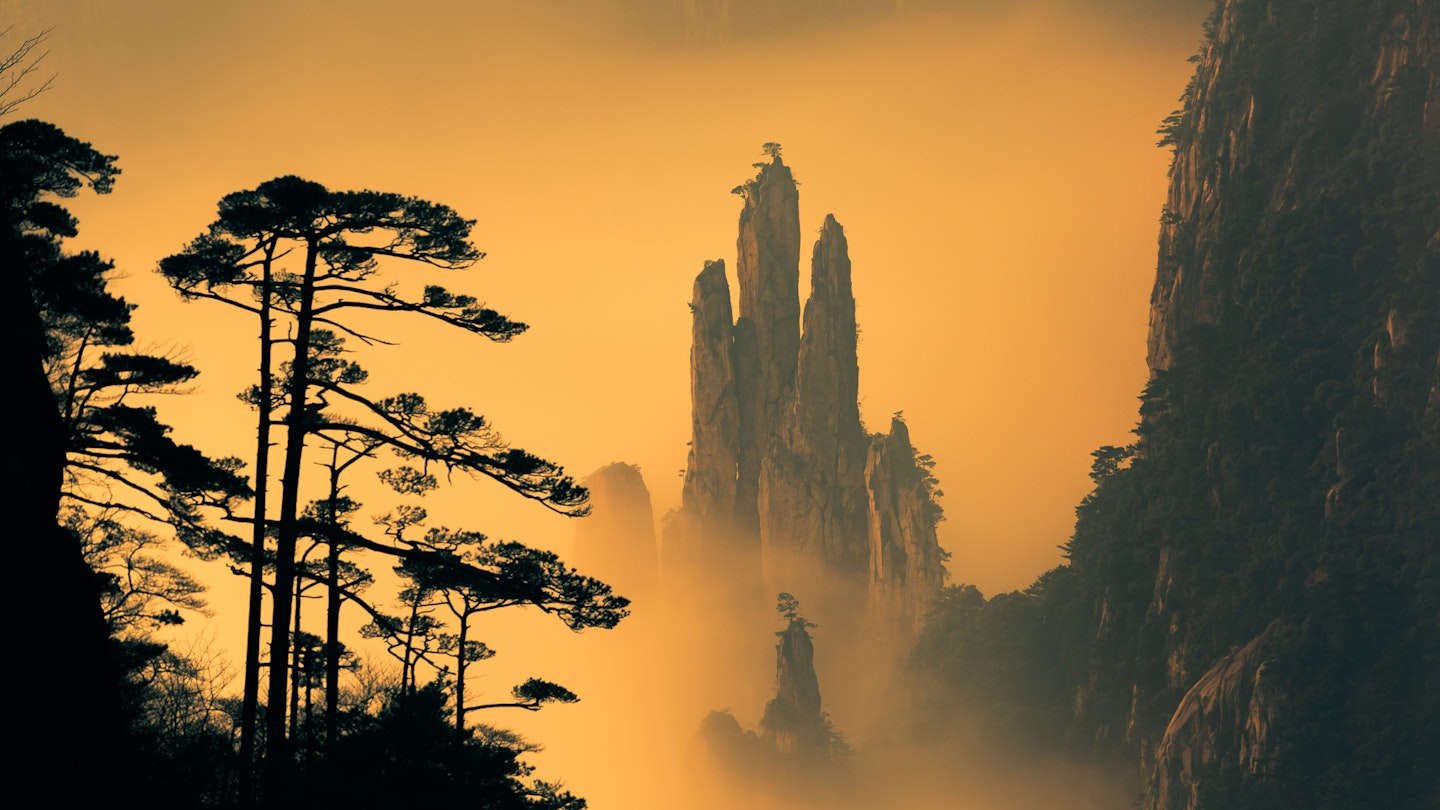
Despite racing modernization, hints of the old China remain © Nattapon / Getty Images
One of the world’s most vast and ancient civilizations, China is not just one region, cuisine or culture. It's a giant and complex patchwork of cultural groups, histories, cuisines and languages. As you might expect, there's a lot to see.
China’s big-hitting sights are no secret, and Chinese domestic tourists do a fine job of filling them up, particularly during national holidays such as the Spring Festival. But there are still untouched corners. While every traveler may want to tick "walked on the Great Wall" off their bucket list, this is a country where you can literally spend a lifetime and still never see it all.
One of the joys of China is its diversity, and most visitors find a friendly and warm welcome almost anywhere they go. Exploring is made abundantly easier by China’s vast high-speed rail network – the world’s biggest. By all means, put the big hitters on your list – ascending the Great Wall is, indeed, spectacular – but try to explore China’s lesser-visited corners, too.
Rather than a list of famous tourist sites, we’ve rounded up the top things to do in China as themes so you can explore China according to your own travel style and interests. Yilu shunfeng! (Have a great trip!)
Tick off China’s ‘Golden Triangle’
China’s most famous (and therefore most over-touristed) sights are situated in a triangle of three mighty cities: Beijing , Xi’an and Shanghai . The three are connected by high-speed trains making it easy to whip between the big sights. Most first-time visitors aim for China’s three best-known icons: the Great Wall near Beijing, the Army of Terracotta Warriors near Xi’an and the historical Bund and skyscrapers of Shanghai.
You can get a little off-the-beaten-path by avoiding the most popular sections of the Great Wall, especially Badaling (opt for Mutianyu or an unrestored section like Jiankou ), and by visiting during the shoulder- or off-season. Winter is a great time to climb the Great Wall under a dusting of snow and you’ll face fewer crowds as you line up to see the surreal faces of the Terracotta Warriors or snap a photo of Shanghai’s futuristic skyline.
Feast on China's fabulous food
In Mandarin, a common greeting is “ ni chifan le ma? ” – meaning “have you eaten?” – which says a lot about China’s dedication to food. One of the greatest joys of traveling here is discovering the vast world of cuisine that lies beyond what you may have experienced in a Chinese restaurant abroad. There are eight major cuisines in China, and these are further divided up into countless local and regional styles of cooking, so you'll find something new to taste in every corner of the country.
Typically, rice and stir-fried dishes are more common in southern China, where rice is cultivated, while buns, dumplings and noodles are the staples in the wheat-growing north. Don’t miss xiaolongbao , or soup dumplings – a favorite breakfast food in Shanghai – and crispy Beijing roast duck. For delicate dim sum, go to Guangdong province. Try the halal, Central Asian-influenced cooking in far northwest Gansu , or head to Sichuan or Hunan provinces for super spicy foods.
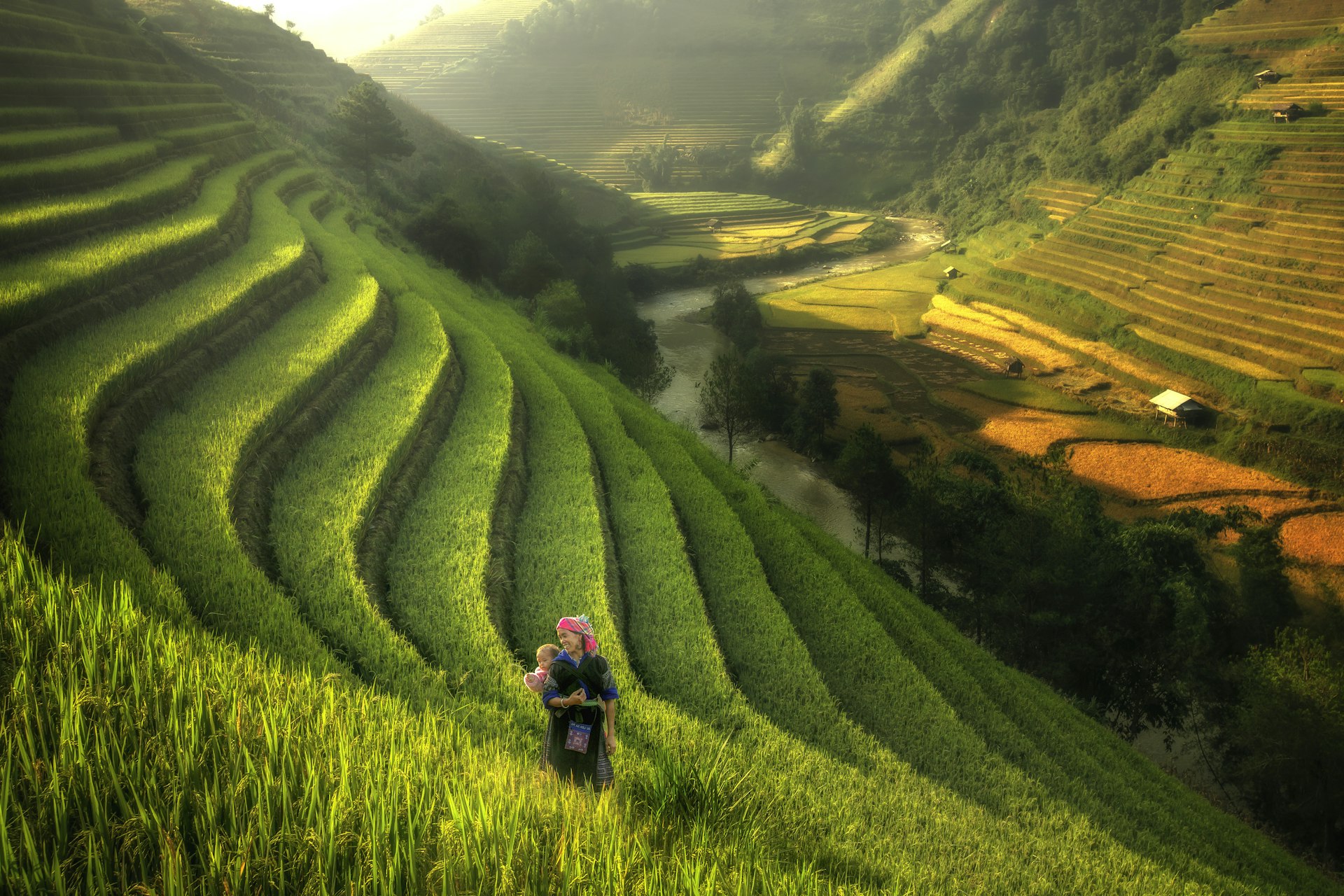
Learn about China’s many minority cultures
The people of China represent a diverse group of communities, cultures and languages. Though the dominant majority (90%) are Mandarin-speaking Han Chinese, across the country there are 55 recognized minority groups. The Miao and Dai of the southwest, the Hui of northwestern Gansu, Qinghai and Ningxia, and the Tibetans are among the most well-known, but there are dozens more groups, languages and identities that are not officially recognized.
While tourism has undoubtedly helped these groups maintain their cultural identities, it has often commodified them, too. To avoid cultural exploitation, seek out homestays or cultural immersion programs that are run by members of the community. The Linden Center in Xizhou, Yunnan , i s an excellent place to start – set in a restored heritage building, it's part boutique hotel, part cultural center, part spiritual retreat and part classroom, offering the chance for deep immersion into three local communities, with profits directly benefiting those groups.
See the Imperial sights
The splendor of Imperial China is proudly on display in Beijing and a string of other former capital cities. The best place to start is in Beijing's Forbidden City , China’s imperial palace since the Ming dynasty (between 1406 and 1420). This Unesco World Heritage Site comprises a series of stunning halls and nested courtyards that get smaller as you progress toward the inner sanctum, which only members of the emperor’s inner circle were permitted to enter.
Further afield in Beijing are the Temple of Heaven , where the emperor performed rites and sought divine guidance, and the lakes and breezeways of the Summer Palace , a sprawling complex that provided the court with respite during Beijing’s hottest months.
There are three other major historical capitals of China: Nanjing , Luoyang and Xi'an, all of which have numerous imperial sights and tombs. In Nanjing, the Ming-dynasty Xiaoling Mausoleum is one of the biggest imperial tombs in China, and the Presidential Palace was home to royal princes before it housed China's first republican president, Sun Yat-sen.
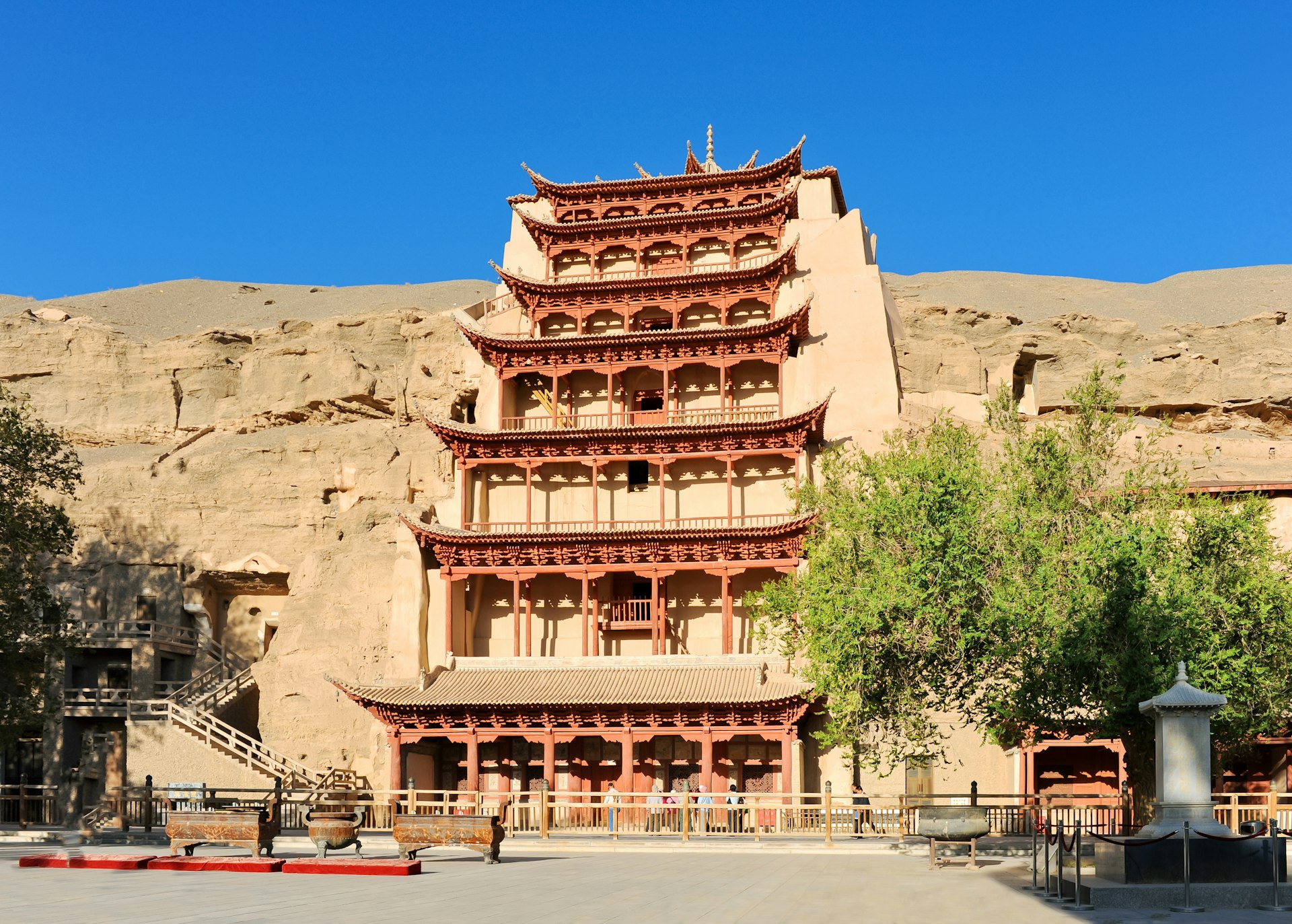
Travel the Silk Road
Long sections of the historical trade routes that make up the Silk Road run through northwestern China, ending at Xi’an, which was considered the eastern terminus of the Silk Road. The townships along the route are rich in cultural heritage, especially of Hui Muslim groups and ethnically Kazakh, Uyghur and Uzbek communities. Although Muslim culture dominates today, part of the delight of traveling China’s section of the Silk Road is discovering traces of the Buddhist culture that traders transport east to China from India.
Some of the most splendid Buddhist sites in China are dotted along the Hexi Corridor in Gansu province, including the celebrated Mogao Grottoes , which are considered one of the most important treasure troves of Buddhist art in the world. Gone are the days of dusty camel rides or even bumpy buses – a high-speed train line now runs the entire length of the Chinese Silk Road, meaning you can travel in speedy, environmentally friendly comfort.
Contemplate life in Suzhou’s gardens
The city of Suzhou is renowned for its 69 classical Chinese gardens, which together form a remarkable Unesco World Heritage Site. The gardens range in size from the huge Humble Administrator's Garden – the biggest and most crowded garden – to the petite and perfectly formed Garden of the Master of the Nets .
The gardens were designed as private getaways for officials, academics and artists. Every detail within, from the winding stone pathways and round moon gates to ponds and bonsai trees, was painstakingly planned to create a suitable atmosphere for pondering and creative pursuits.

Hit the town in Hong Kong & Macau
Though they are very different on almost every level, Hong Kong and Macau are often paired as travel destinations thanks to their geographical proximity and easy transport links between the two city-states via fast ferries or the world’s longest sea bridge. Hong Kong is in many ways the perfect city: bursting at the seams with swanky banquet restaurants and tiny hole-in-the-wall food joints, great nightlife and sparkling skyline views (best appreciated from the top of Victoria Peak ).
You can tour the filming locations for popular movies such as Enter the Dragon and Transformers , or plan your trip in March to coincide with Art Basel Hong Kong , the city's biggest art bash. When things get that little bit too bustling, head to one of the laid-back islands, hike the trail known as the Dragon’s Back or kayak around Hong Kong Global Geopark .
The old-world fishing villages that once made Macau a quiet cousin to Hong Kong are giving way to an encroaching blaze of casinos built on reclaimed land. But Macau still has a wealth of heritage architecture and its own brand of fusion cuisine built on Macanese specialties and dishes influenced by its former colonizers, the Portuguese. If you only do one thing in Macau, make it a visit to Lord Stow's Bakery for the local custard tarts.
Glimpse an adorable panda
It’s tough to escape the national animal in China. Images of real and cuddly cartoon pandas appear on adverts, school signboards, metro trains and products all over the country. You'll even find Panda Brew beer in Beijing. In 2021, China's 67 panda reserves were integrated into one Giant Panda National Park, providing shelter for the 1631 wild pandas living within China's borders. Conservation efforts are paying off – China recently moved the giant panda off the endangered species list to less severe threatened status.
As pandas are notoriously shy animals (and not prone to getting loved-up, hence the extensive worldwide breeding program), travelers wanting to set eyes on a panda usually head to the Giant Panda Breeding and Research Base in Chengdu – home to more than 200 giant pandas and a sizeable population of the smaller, fox-like red pandas. While the animals live in enclosures and the infrastructure is admittedly zoo-like, the Center exists purely for conservation and breeding, so pandas here receive excellent care.
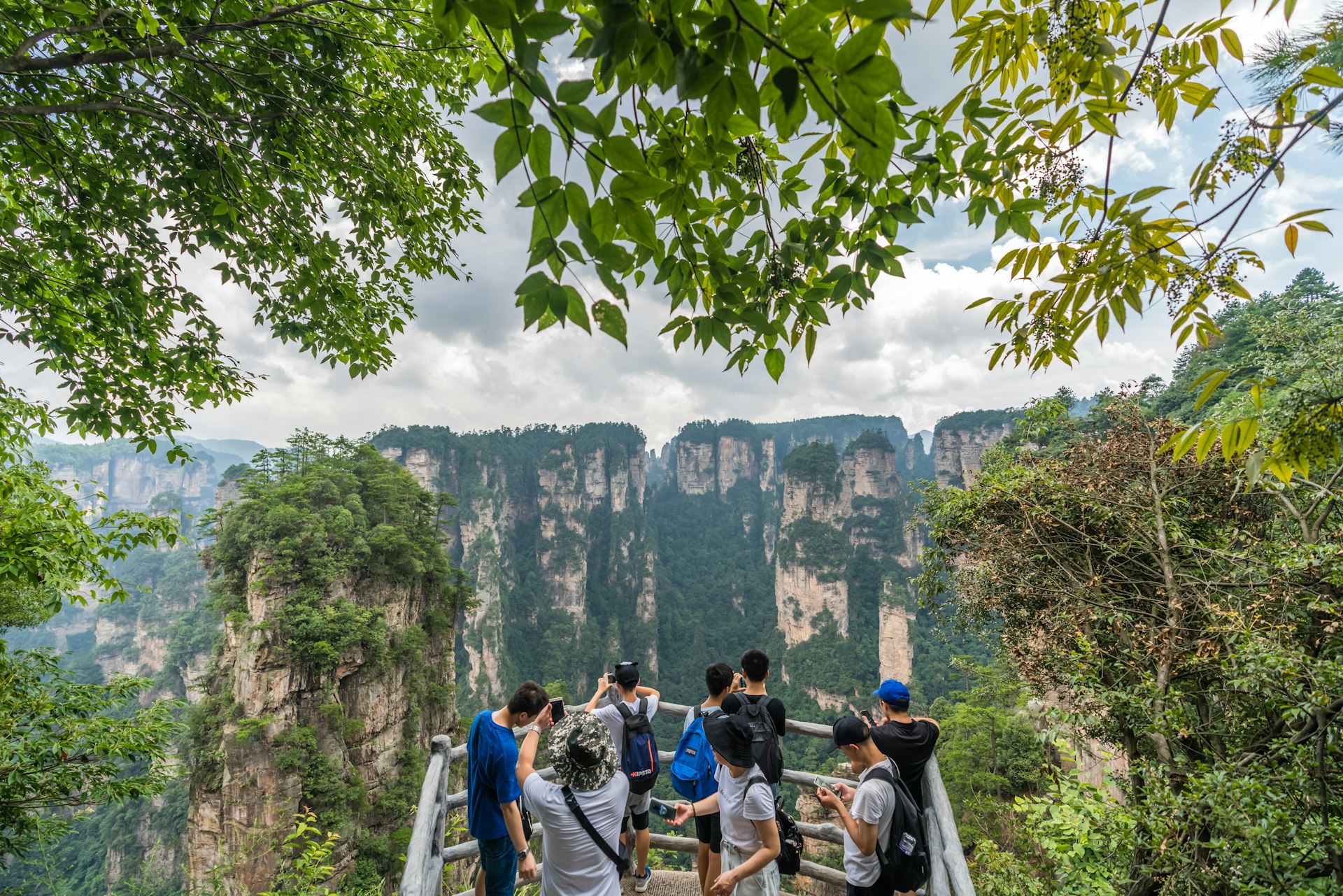
Hike rice terraces & misty peaks
China’s mystical mountain landscapes have been celebrated and commemorated in art for thousands of years. Iconic images of craggily, karst peaks shrouded in mist were the subject of landscape paintings dating back to the 6th century. In fact, there is mountainous terrain all over China, but splendid views of cloud-capped peaks are best found at Huangshan (Yellow Mountain) or one of the sacred Daoist peaks, such as Hua Shan or Tai Shan .
The ethereal, column-like mountains of Zhangjiajie in Hunan province were the inspiration for the film Avatar , and a great destination for easy hikes. And there's serious hiking at Tiger Leaping Gorge , and in the Himalayan borderlands of Yunnan and Sichuan.
One of the most popular images of China is of the sunset reflecting in the staggered waters of a rice terrace. Longsheng county in Guangxi province is a sprawl of rice terraces, the most well-known being the Longji (Dragon’s Back) terraces near Zhuang village. Hiking paths lead between terraced fields and the villages of several minority communities. From here, it’s easy to reach Guilin for a trip down the Li River, whose bizarrely shaped karst peaks have become one of the country’s most iconic images.
Get wintery in Dongbei
China shows a different side in winter, and the country has developed its cold-weather offerings, particularly infrastructure for skiing and snowboarding in preparation for the 2022 Winter Olympics. The best slopes and facilities can be found at Yabuli in Heilongjiang province and Changbaishan in Jilin province.
For something less active but still full of wintery wonder, the Harbin Ice and Snow Festival is held every year in the city of Harbin beside the iced-over Songhua River. It’s the world’s biggest ice sculpture festival, with dozens of ice-formed buildings and giant sculptures made of ice and snow, many shaped like well-known world landmarks.
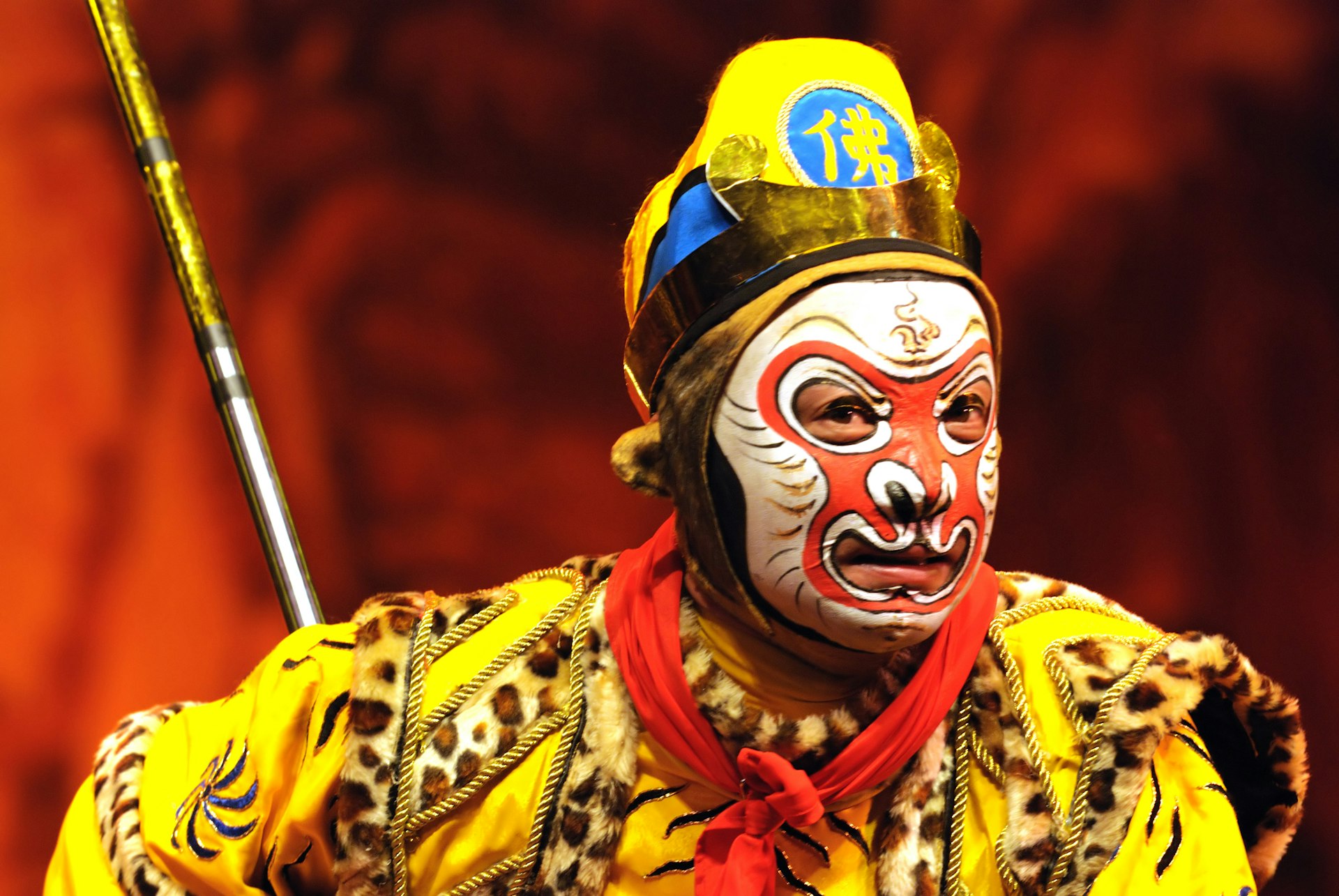
Experience traditional arts & architecture
China has a rich musical and architectural heritage that spans centuries and hundreds of cultural traditions. Admiring dynastic architecture through the ages is a highlight of any trip to China, whether getting a close-up view of a Tang-dynasty pagoda in Xi'an or standing in the imposing open space of Tian’anmen Square .
Dramatic modern architecture has sprung up across the country, from the oddly-shaped CCTV Headquarters (aka the "pants building") in Beijing to the incredible Baoxi ‘bamboo town’ in Zhejiang province, where every building is eco-friendly and made from sustainable bamboo.
In arts and music, too, China has flourished through the ages. There are plenty of places around the country to experience traditional Chinese opera – one good spot is Suzhou’s Shantang Kunqu Opera House , which has intimate opera performances each evening accompanied by a traditional tea service.
One of the most charming experiences in China is getting up early in the morning to visit local parks, where people practice sword-play, fan-dancing, taichi, singing, square dancing, water calligraphy and other folk artforms.
See beautiful art in China’s museums
China is brimming with excellent museums cataloging everything from ancient ritual objects to stimulating and surprising modern art. Each province in China has its own provincial museum with locally found objects, but for a broad overview of national arts and artifacts, head to the excellent Shanghai Museum or the National Museum of China in Beijing.
China's thriving contemporary art scene is best explored at Shenzhen’s Museum of Contemporary Art & Planning Exhibition and Hua Art Museum , the 798 Art District in Beijing and a whole collection of museums and galleries in Shanghai’s revitalized West Bund district, including Tank Shanghai , ShanghART and the Yuz Museum .
There are also plenty of more specialized museums such as the Sanxingdui Museum near Chengdu, dedicated to a mysterious ancient civilization. More quirkily themed museums include the Shanghai Museum of Glass , the China Watermelon Museum and the Gaoligong Museum of Handcraft Paper in Yunnan province.
You may also like: 5 epic train journeys to take in China These top hikes in China are sure to take your breath away Incredible places in China to challenge your preconception
Explore related stories
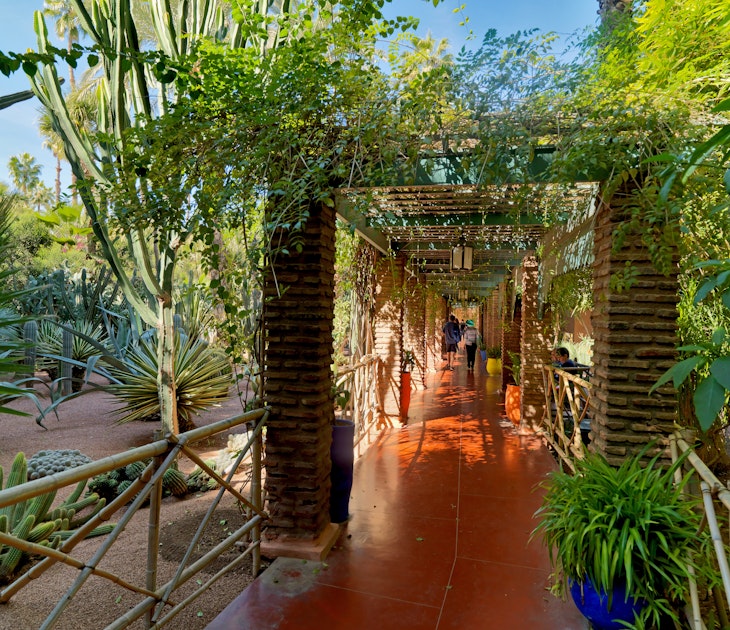
Wildlife & Nature
Apr 24, 2024 • 11 min read
We’ve selected 11 gardens around the world that offer beauty, serenity, a connection with nature and a sense of place.

Apr 2, 2024 • 10 min read
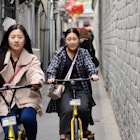
Feb 23, 2024 • 6 min read
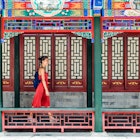
Feb 23, 2024 • 8 min read
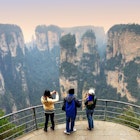
Feb 21, 2024 • 5 min read

Feb 18, 2024 • 7 min read

Feb 16, 2024 • 6 min read

Dec 27, 2023 • 8 min read

Dec 26, 2023 • 5 min read

Nov 7, 2023 • 5 min read
- Group Enquiry? NEW
- 55 Places to Visit in China
China Tourist Places
Quick navigation, must places to visit in china, the great wall of china.

Forbidden City
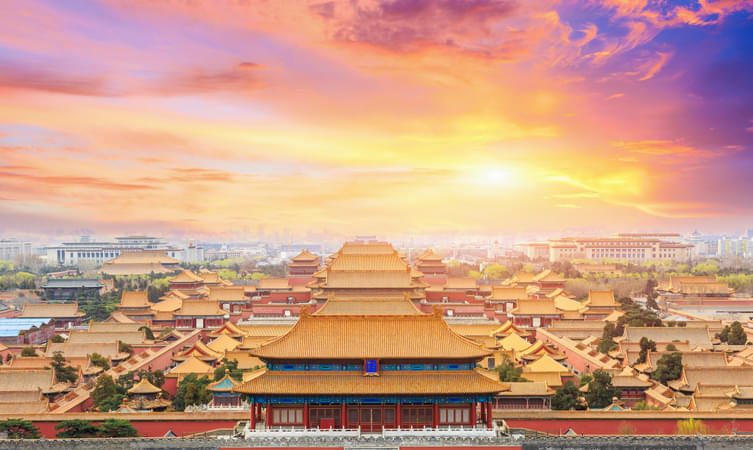
Imperial Palace
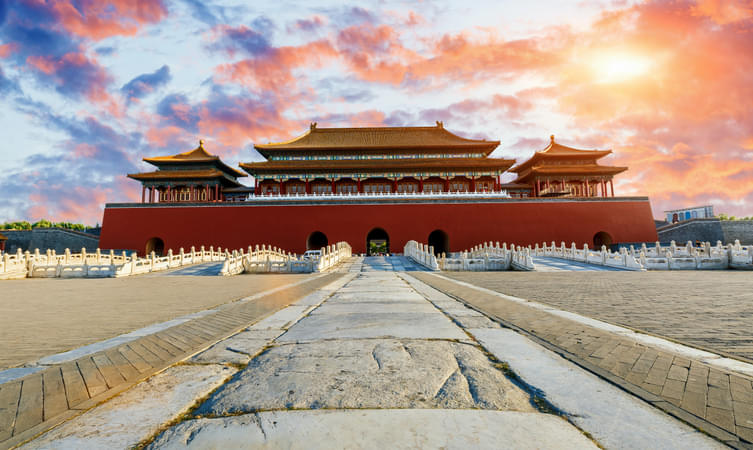
The Terracotta Army, Xi'an
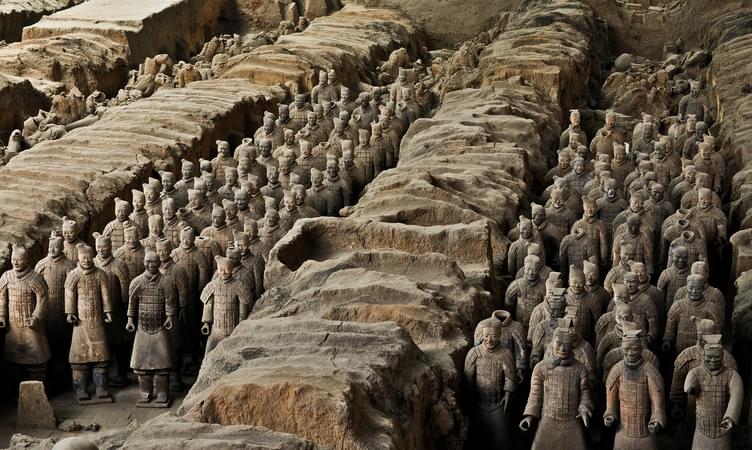
The Summer Palace
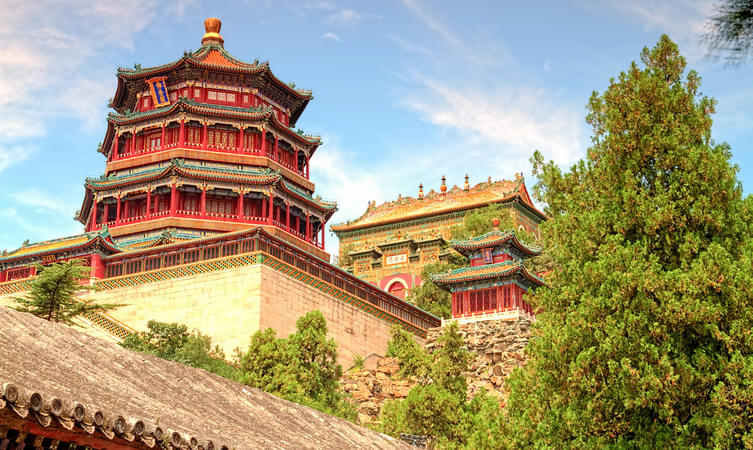
Li River, Guilin
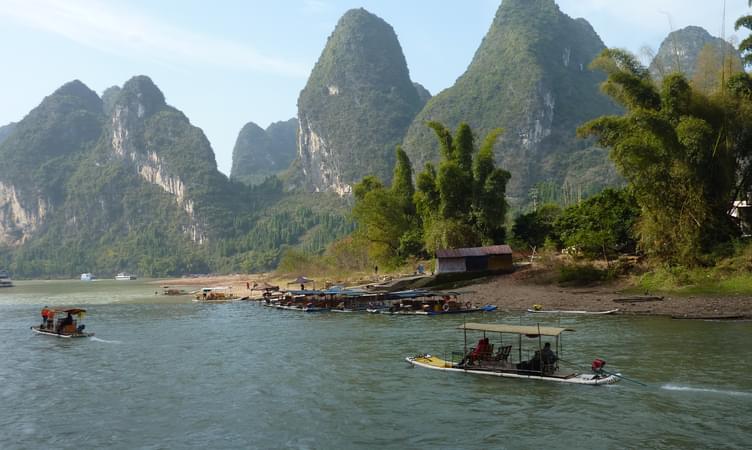
Chengdu Research Base of Giant Panda Breeding
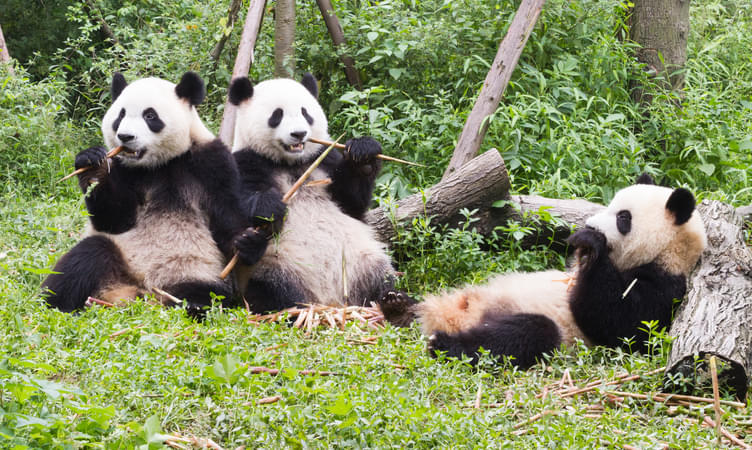
Yangtze River and the Three Gorges

Best of Malaysia
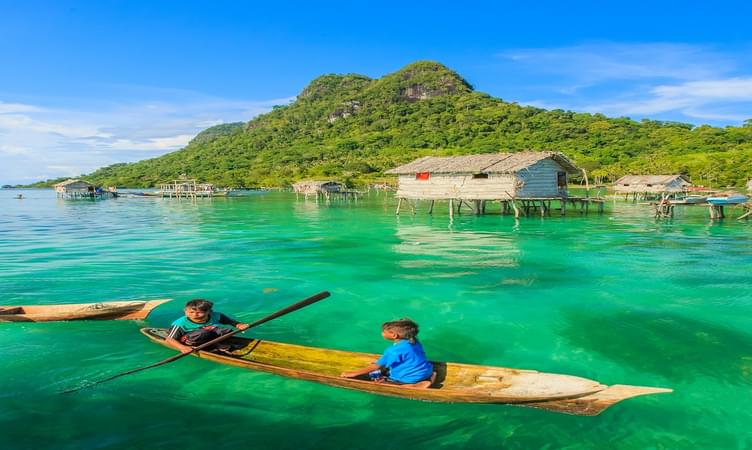
Potala Palace
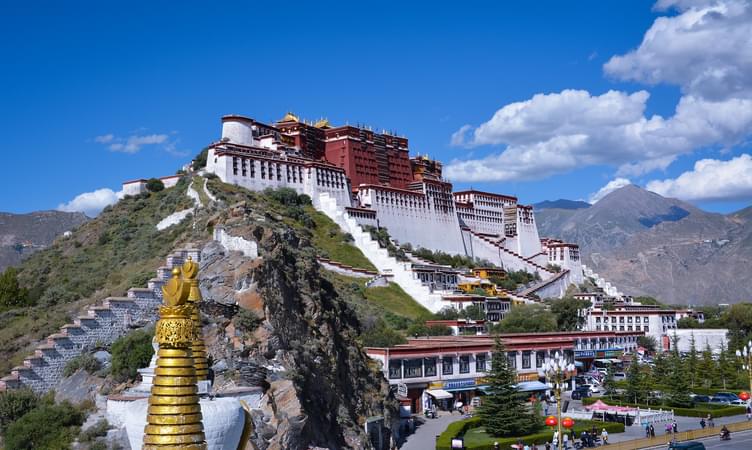
Hangzhou's Historic West Lake
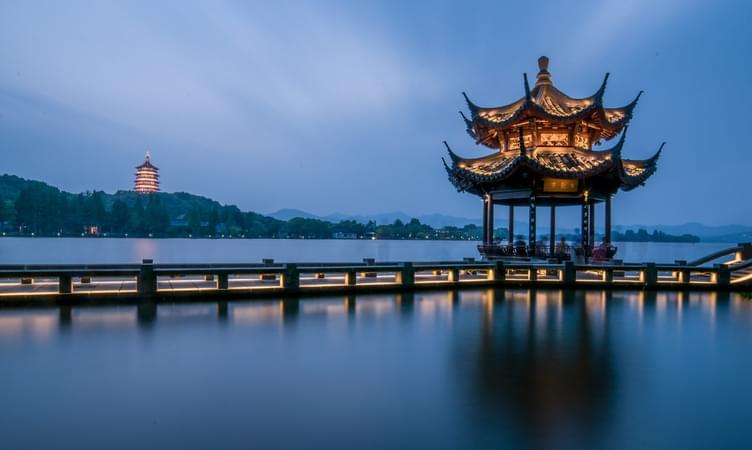
The Mausoleum of Light
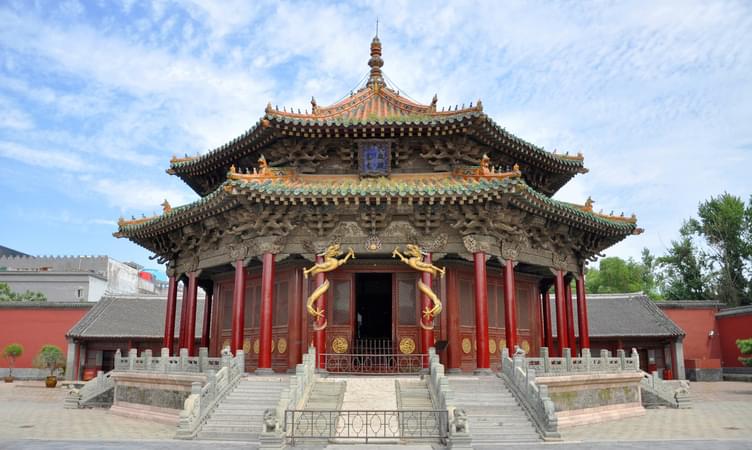
Leshan Giant Buddha
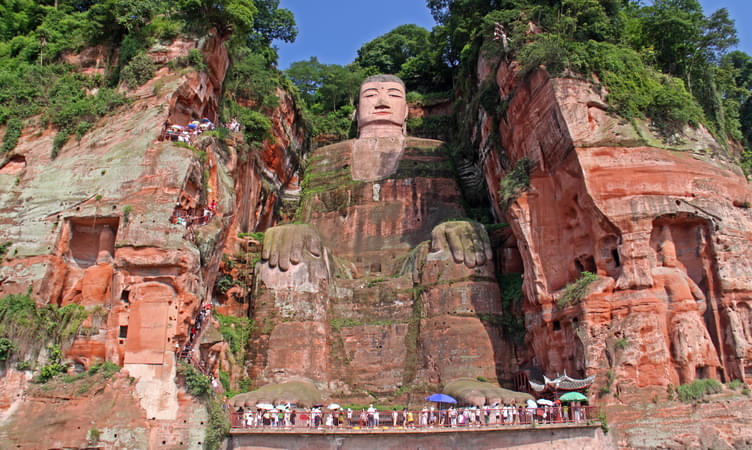
Hong Kong Skyline
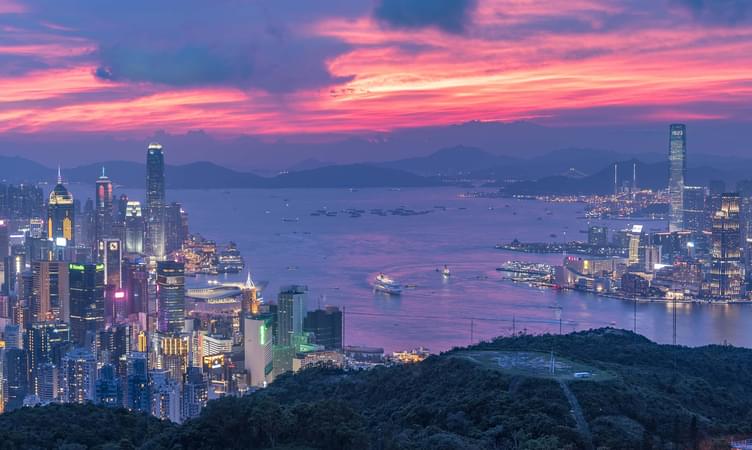
Zhangjiajie National Forest Park
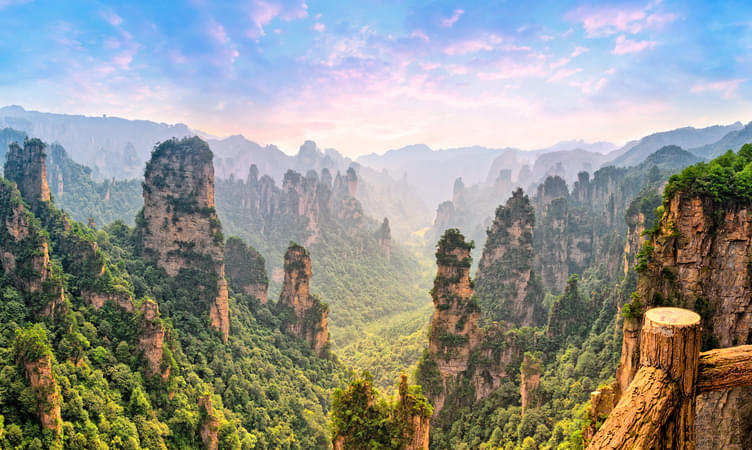
Places to Visit in Beijing
Tiananmen square.
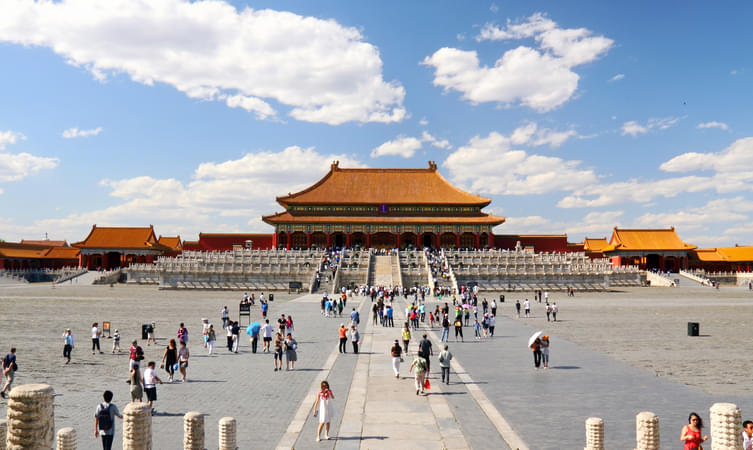
Best of Hong Kong

Beijing Capital Museum And The National Centre For The Performing Arts
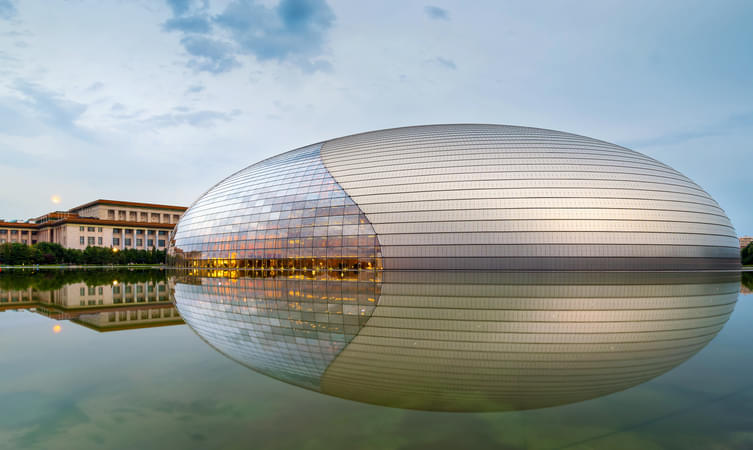
Beijing Ancient Observatory
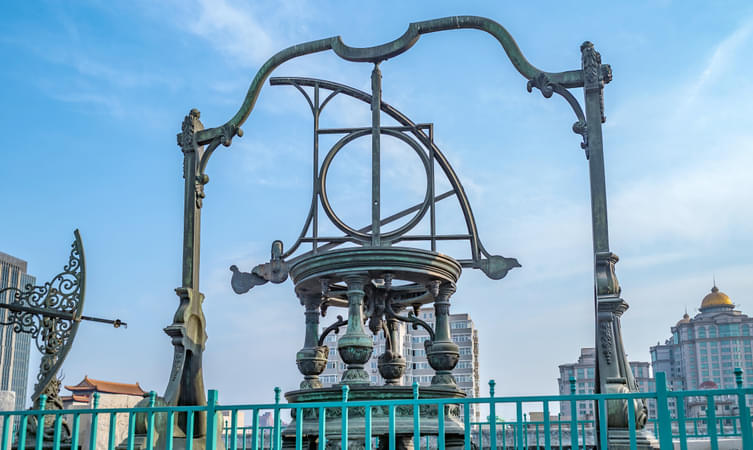
National Museum Of China
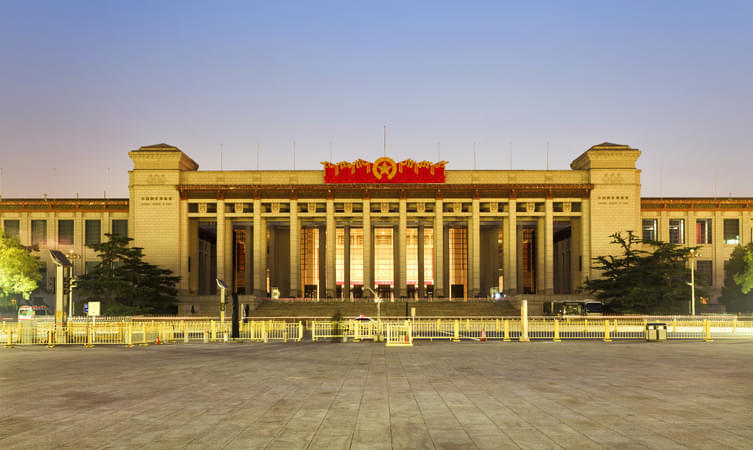
The Temple Of Heaven
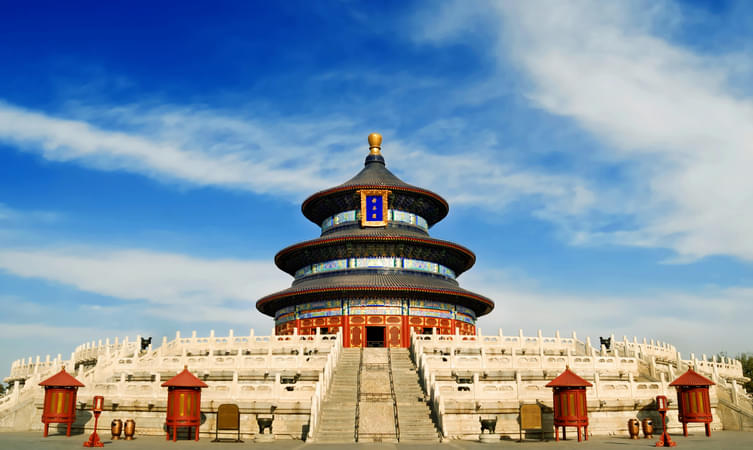
Great Wall Of Badaling
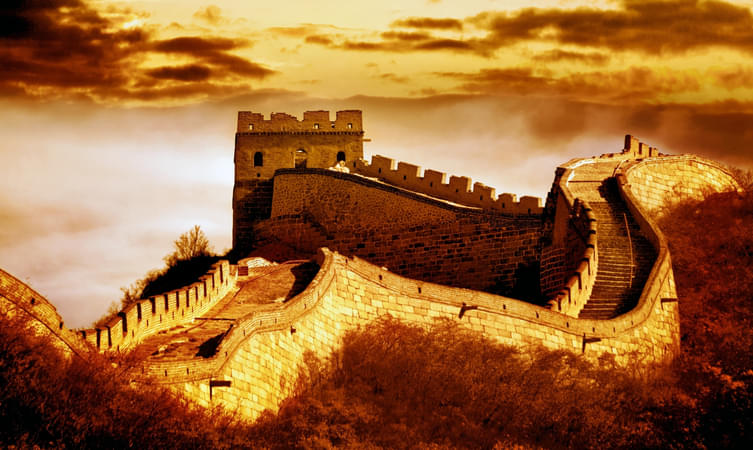
The Fayuan Temple
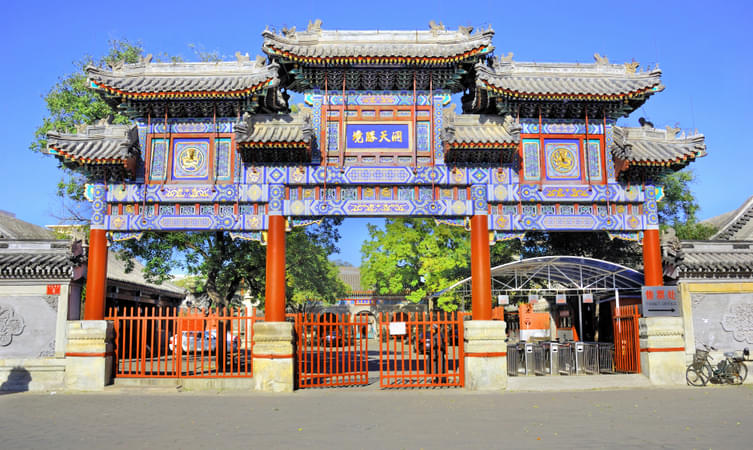
Shichahai Rents Out Ice Skates
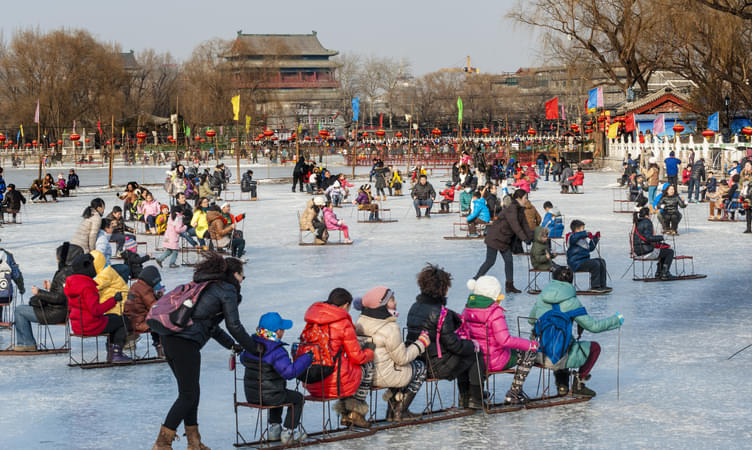
Best of Japan

Places to Visit in Shanghai
Nanjing road.
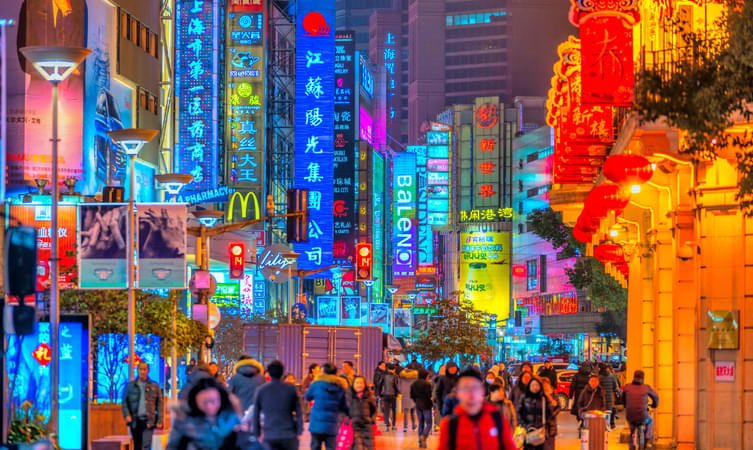
Oriental Pearl Tower
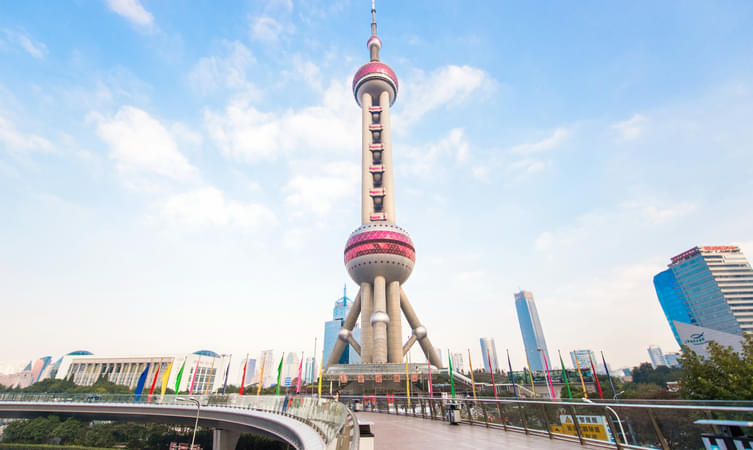
The construction of the Oriental Pearl Tower was completed in 1995 and it is the second tallest tower in China. This tower is surrounded by Yangpu Bridge and Nanpu Bridge, creating an amazing view of twin dragons playing with pearls. The unique architecture of this TV and radio tower makes it one of the most attractive places in Shanghai. It is surrounded by green grassland on all sides, making it even more photographic. You can travel up and down the tower in its double-decker elevator and enjoy the view from any of its six observation decks. Location: 1 Century Ave, Lu Jia Zui, Pudong, Shanghai, China Entry Fee: 120 CNY onwards per head Timings: 8 AM to 9:30 PM
Shanghai Museum
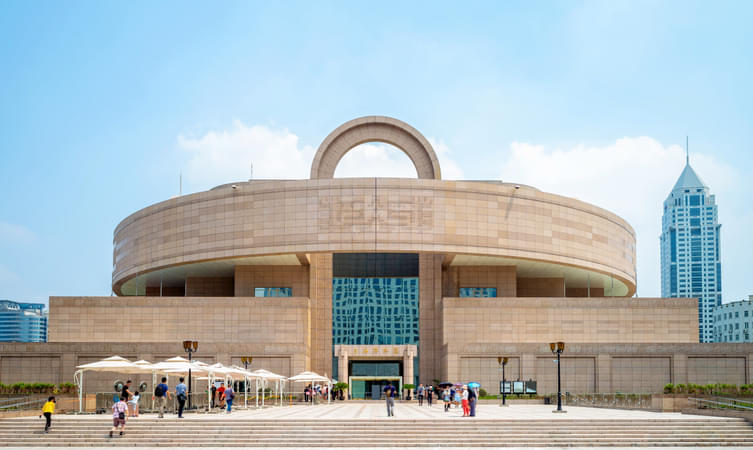
Shanghai Haichang Ocean Park
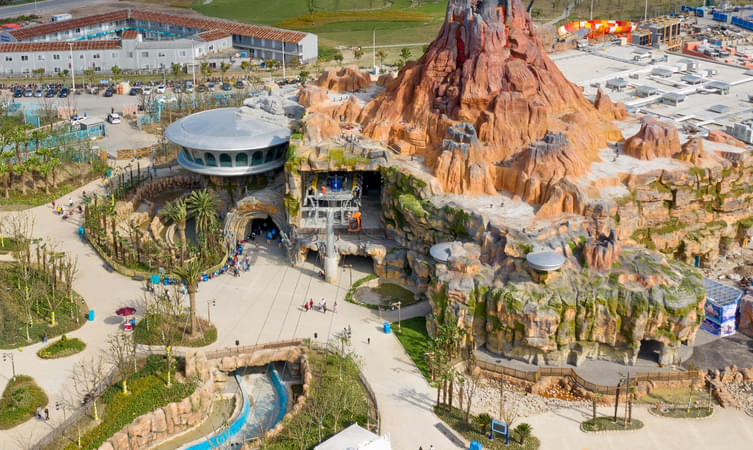
Shanghai Auto Museum

Madame Tussauds

Longhua Temple And Pagoda
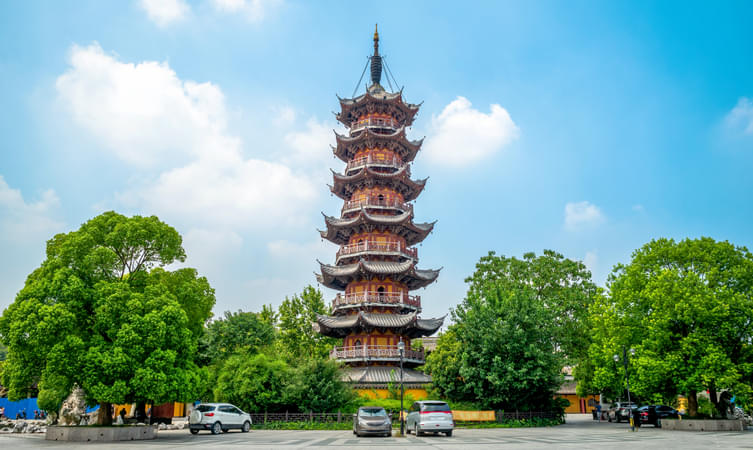
Best of Tokyo
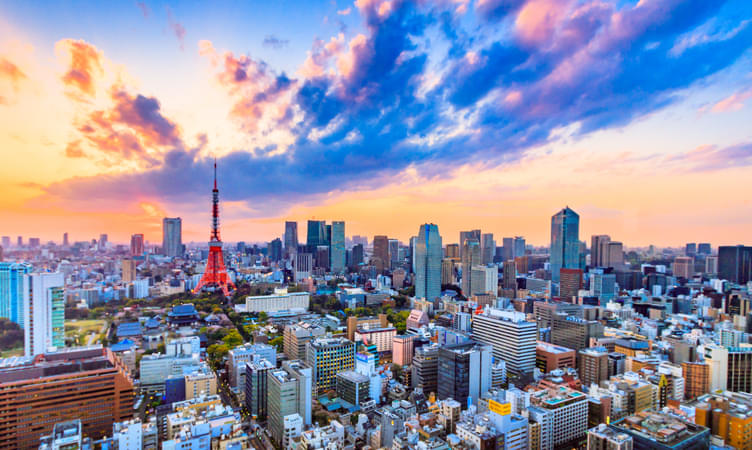
Places to Visit in Guilin
Longji rice terrace.
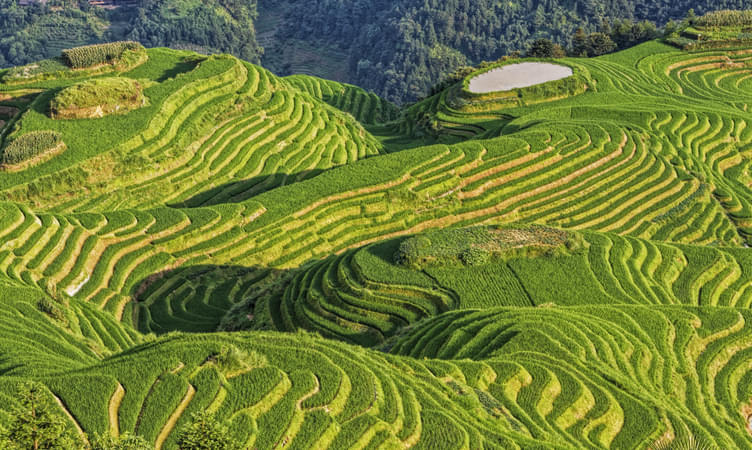
Reed Flute Cave
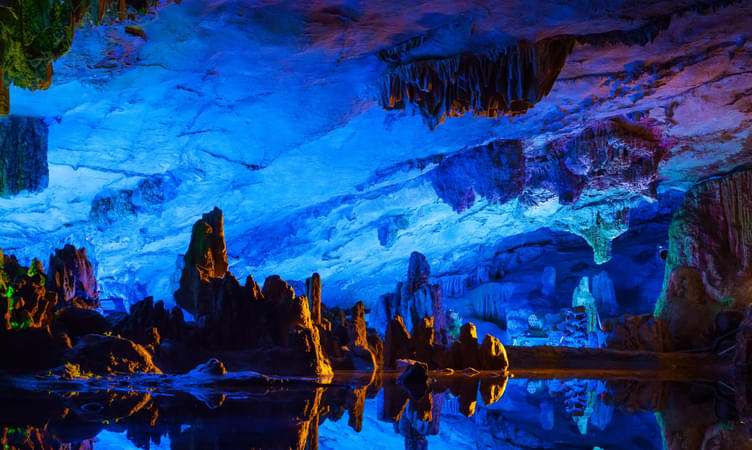
Elephant Trunk Hill
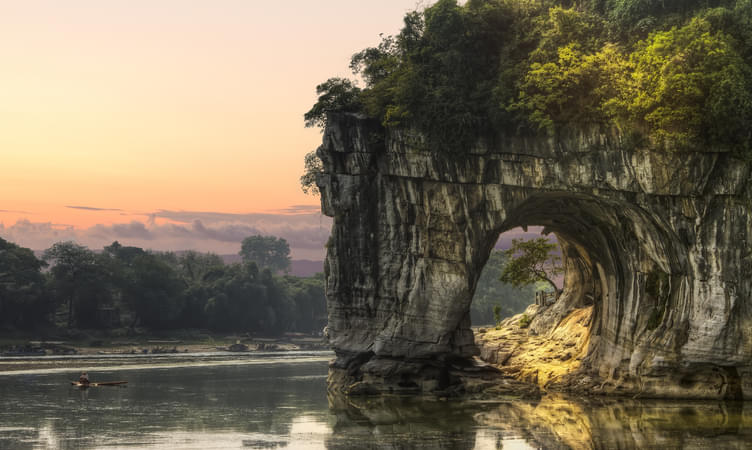
Yangshuo West Street
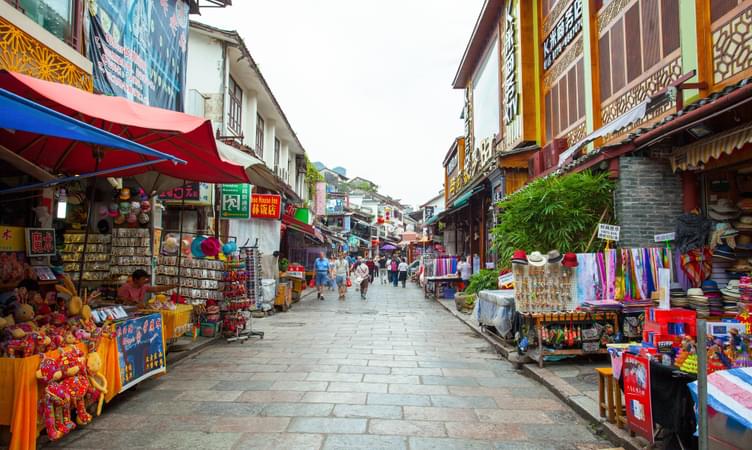
Gudong Waterfall
Places to visit in xi’an, xi'an city wall.
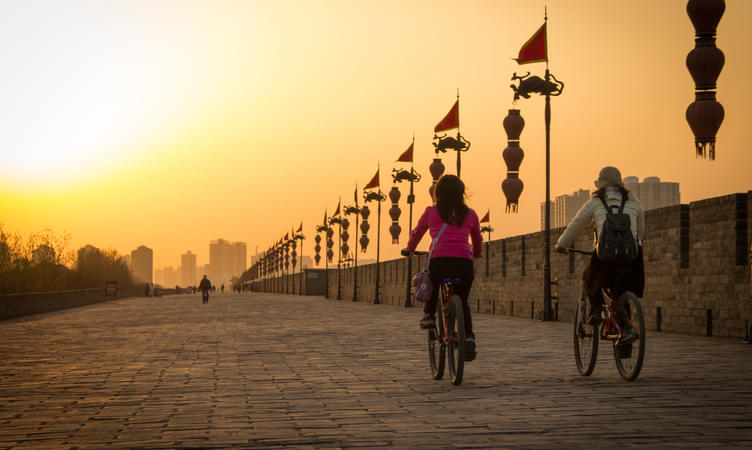
Shaanxi History Museum
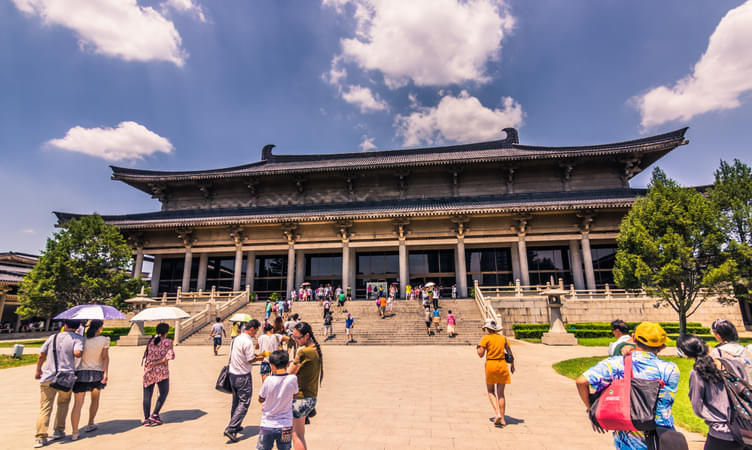
Best of Macau

Mt. Huashan
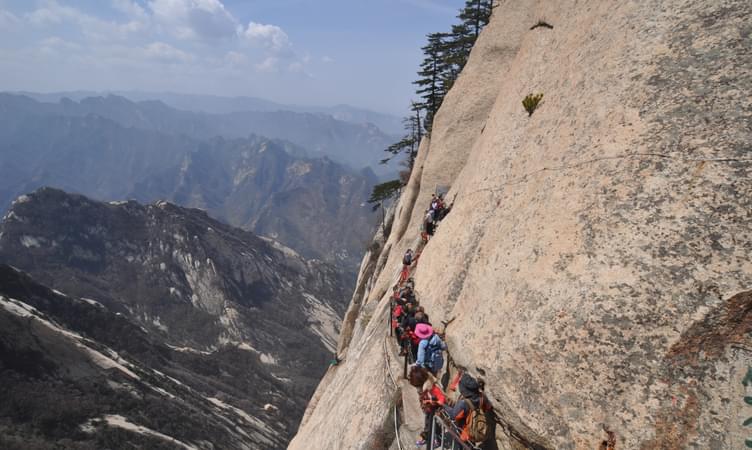
Xian Muslim Quarter and the Great Mosque
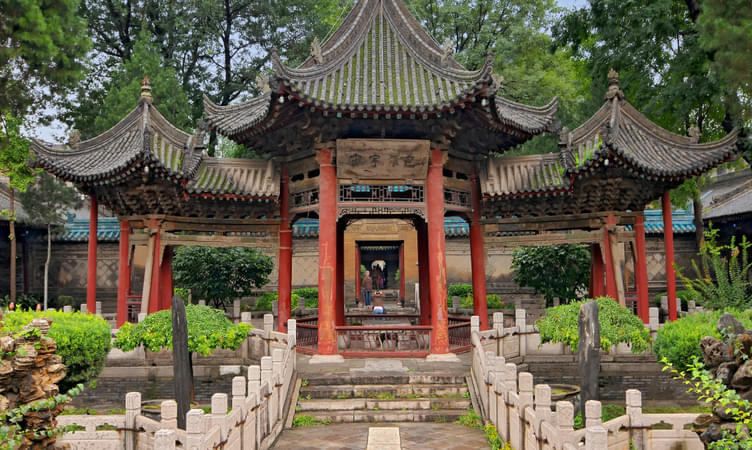
Bell & Drum Towers
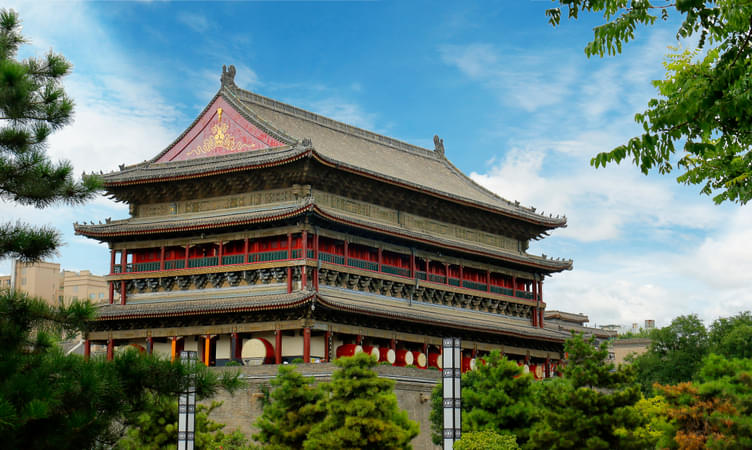
Hanyang Tomb
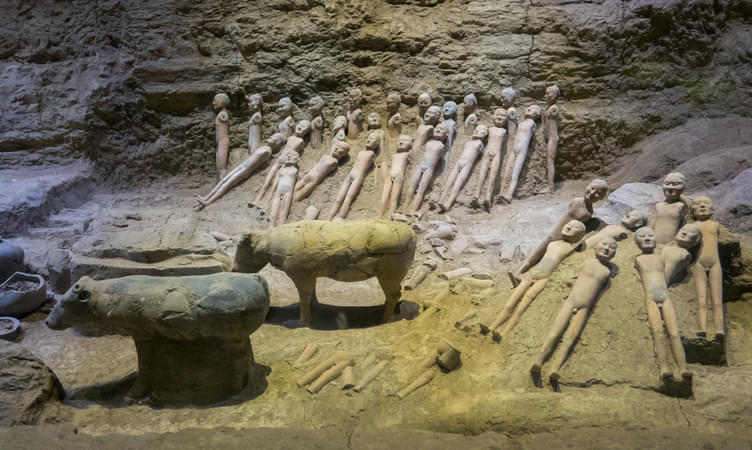
Hanyang Tomb is a wonderful cultural site with more interesting and engaging spots of Terracotta Warriors. This well-structured site mustered with the emperor’s tomb, empress’ tomb along with burial pits and human sacrifice graveyard. The Burial Pits , popularly known as the underground museum or on site subterranean museum, is a worth visiting place in Hanyang Tomb with it's awesome site to walk on the glass floors to view the terracotta smaller scale people of factual values. Location: Weicheng District, Xianyang, Xianyang, Shaanxi, China
Places to Visit in Guangzhou
Shangxiajiu pedestrian street.
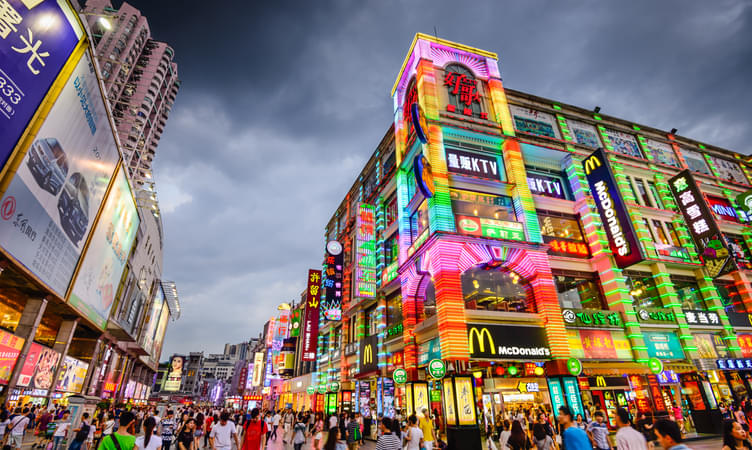
Chimelong Paradise
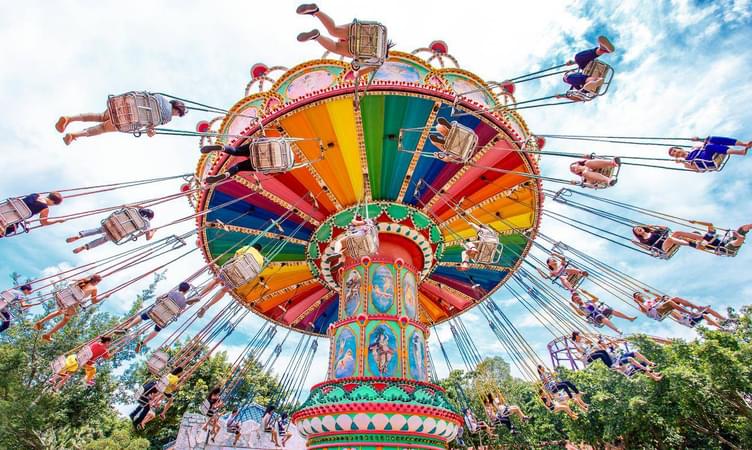
Sacred Heart Cathedral
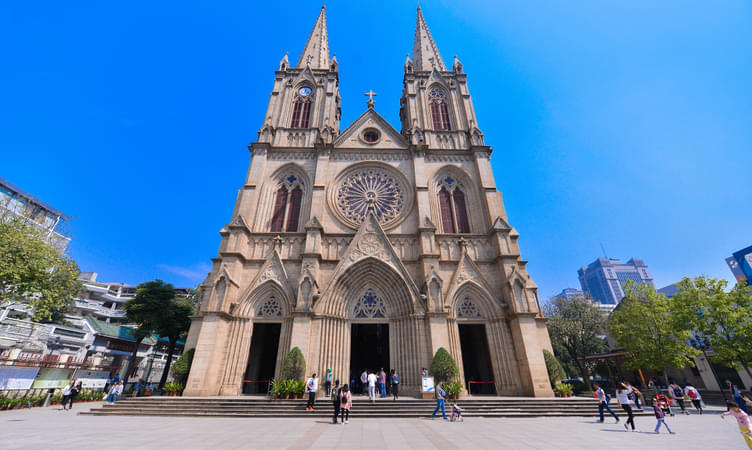
Canton Tower
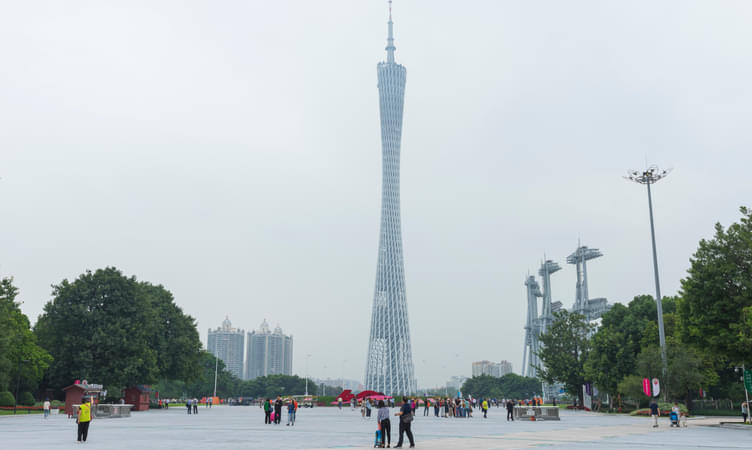
Best of Beijing
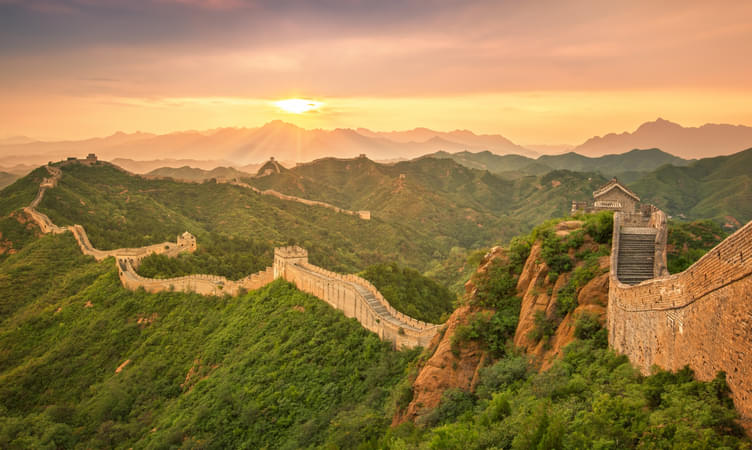
Shamian Island
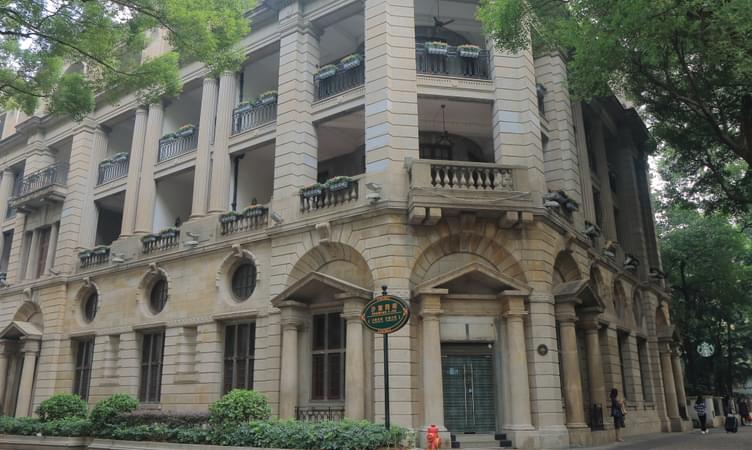
Guangdong Museum
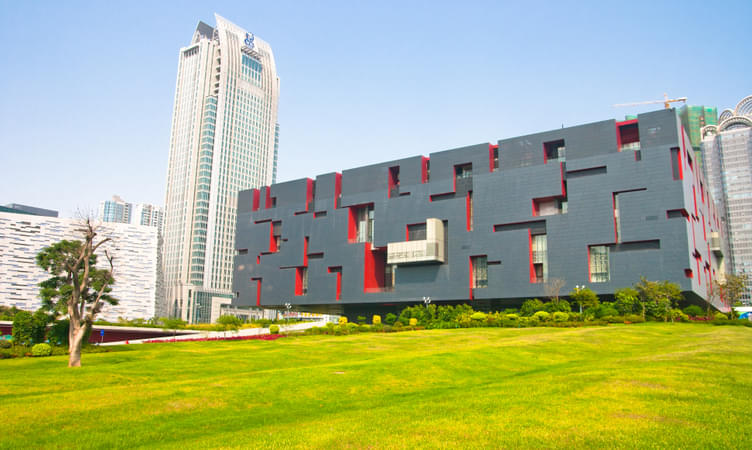
Pearl River
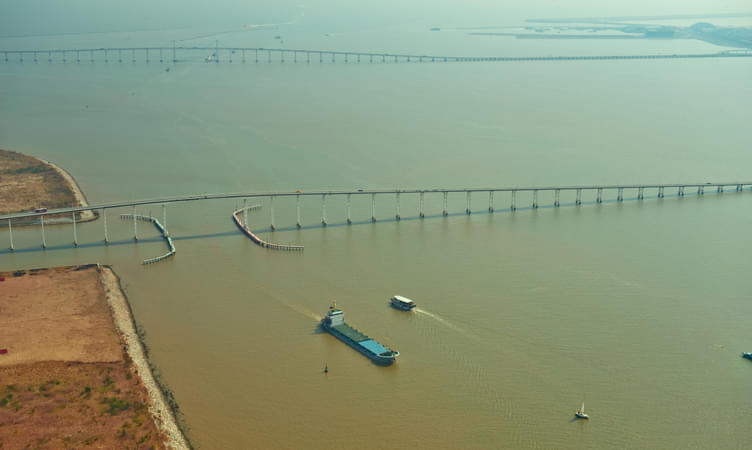
The Pearl River Delta has a bodacious leading role having an important strategic status in the overall effort of China to pursue economic and social development. It is called Pearl River as the pearl-colored shells lie at the bottom of the river in the section that flows through the city of Guangzhou. Pearl River area is one of the best Places in China bustling with industrial estate yet you'll find the rising of China Pink Dolphins in massive groups floating on the bay. Heading over to the Pearl River, you will get a chance to enjoy night cruising with your loved ones, guided cycle tour of Guangzhou, and a famous Skywalk glass bridge tour. You can also take a day tour to capture the glimpses of alluring natural beauty all around.
Other Places to Visit in China

Huangguoshu Waterfall
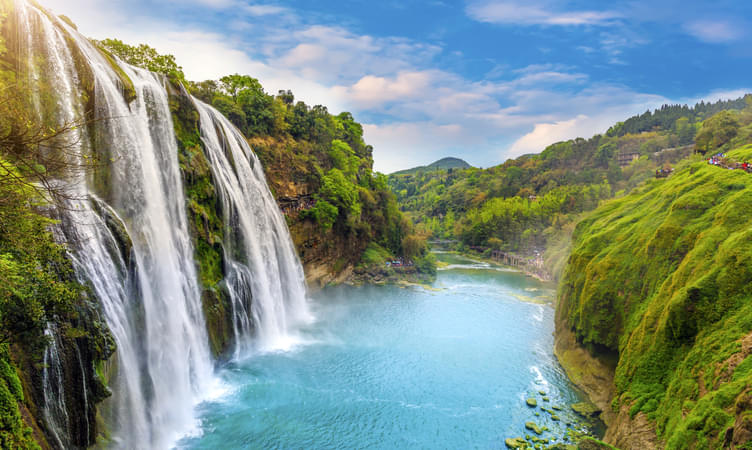
Shilin Stone Forest
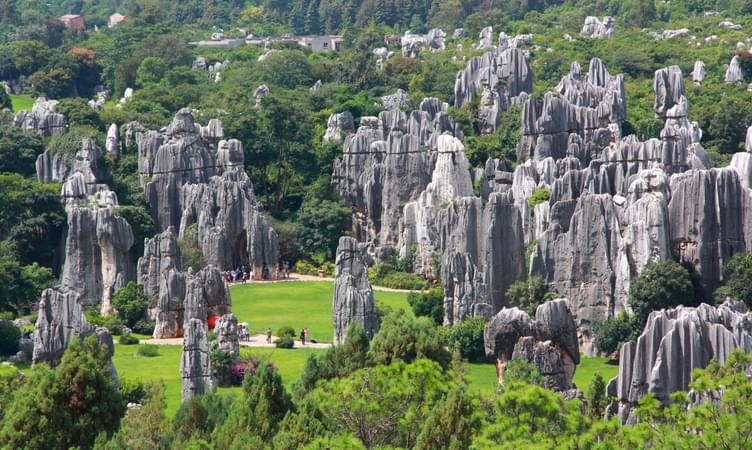
People Also Ask About China
Which are the best places to visit in china with family.
1. Forbidden City: Forbidden city is one of the ancient Places to Visit in China that nestles in the heart of Beijing. The city is spread over an area of 180 acres and is home to some of the finest artifacts and collections that take you back in the timeline of Chinese History. 2. Terracotta Army: The Terracotta Army site is home to more than 8000 strong army frozen in time for almost 2000 years in the past. Heading over to one of the heritage Places to Visit in China, you will be able to witness the entire army with generals, warriors, and horsemen. This site is dedicated to the lost soldiers of Qin Shi Huang- the first known emperor of China. 3. Temple of Heaven: The Temple of Heaven is considered to be one of the most sacred and revered religious Places to Visit in China. Constructed before 600 years in Beijing, this is a UNESCO World Heritage Site. Heading over to this place, you will be able to find the symbolism of Taoism. This place is also very much popular among the photographers as its backdrop lets them capture stunning snaps. 4. Great Wall Of China: The Great wall of China happens to be one of the most talked about architectural marvels in the world. The 6000 km long wall built about 2000 years in the past is definitely a paradise for history and architecture lovers.
What can you do in China in 3 days?
1. Boating On River Li: Cruising on the River Li for a period of 4 - 5 hours is surely one of the very first things that you can try out during your China trip. You will have a comfortable experience while kayaking on the river with your loved ones. You can also try out bamboo rafting from Yangshuo on River Li to witness the beautiful and scenic backdrop. 2. Interact With The Cute Pandas: Interacting with the pandas is one of the fun filled things that you do during your trip to China. Capturing the movements of these black and white fluffy animals munching, climbing, and hanging on the bamboo groves are truly adorable. 3. Hike The Floating Mountains: Hiking through the Zhangjiajie National Forest Park is one of the most sought after activities as it mimics the floating mountain in Avatar. You will get to hike around the stunning park with clouds surrounding you. 4. Taste The Hot Pot Of Sichuan: During your stay in China, you must make sure that you taste some of the local cuisines which are known for its fiery flavour. You can try out the hot pot of Sichuan Broth which is known for its color and spicy taste.
What is the best time to visit China?
How to reach china.
By Air: China has got a well connected flight network with the rest of the world. You will get plenty of direct flights to the international airports located in Hong Kong, Hangzhou, Guangzhou, Shanghai, Beijing, and Xiamen. Some of the common flight operators to China are China Southern, Hainan Airlines, Air China, and China Eastern Airlines. By Road: You can reach China from many of its neighbouring countries by bus or by a hired vehicle. You can reach China through Karakoram Highway from Pakistan, Tibet from Nepal, Vietnam, Laos, and Myanmar. By Water: China can be easily reached by ships from Kobe in Japan and the west coast of Korea. There are regular ferry services between Osaka in Japan and Shanghai, Weihai, Qingdao, Tianjin and Shanghai in China to Incheon in Korea, Hong Kong and Macau, and many others.
What are the requirements for Chinese Visa?
Here are the requirements for a Chinese Visa: - Passport - Photographs - Letter of Invitation - Proof of State Residency - Visa Central Order Form - Visa Application Form - Travel Record - Health Declaration - Authorization Letter
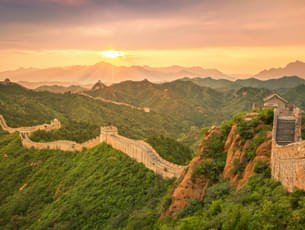
Trending in China
Adventure in china.
.JPG?gravity=center&width=245&height=183&crop=fill&quality=auto&fetch_format=auto&flags=strip_profile&format=jpg&sign_url=true)
Sightseeing in China
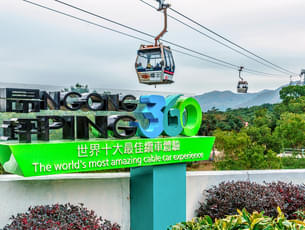
Aerial Activities in China
China travel guides.
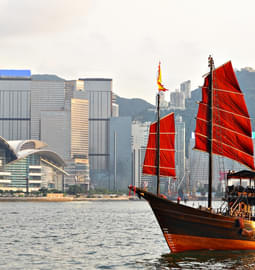
China Reviews

Popular Nearby Places Around China
More things to do in china, more on china tourism, popular related destinations.

Best Domestic Packages
Best international packages, domestic honeymoon packages, international honeymoon packages, places to visit in india, international places to visit, things to do in india, international things to do, popular on thrillophilia.
- We assure the privacy of your contact data.
- This data will only be used by our team to contact you and no other purposes.
Your enquiry has been received successfully. Our destination expert will reach out to you soon!

Touropia Travel
Discover the World
17 Best Places to Visit in China
By Carl Austin · Last updated on March 3, 2024
Vast and diverse, China is a giant of a travel destination. With more megacities than any other country in the world, as well as the country with the largest population, any visit to this Asian giant is a beguiling and engaging mix of charming traditional culture and modernity.
With 53 diverse ethnic groups and more than 292 spoken languages, each destination in China is different from the last.
Visitors making their first trip to China usually stick to the larger cities. More experienced visitors to the Middle Kingdom will strike out in other directions, where traveling may be a bit more frustrating because of the language barrier, but most definitely doable for independent travelers. With so much on offer, the only problem is how to fit all the best places to visit in China into just one trip?
Map of Places to Visit in China
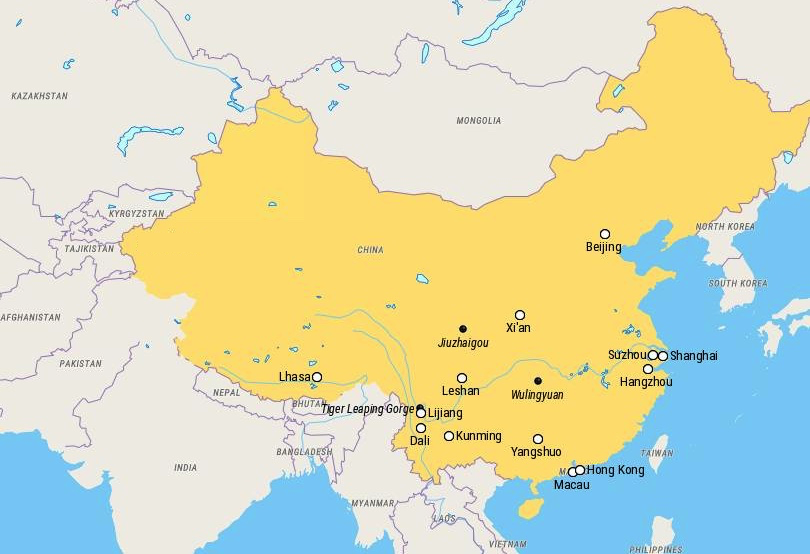
17. Kunming
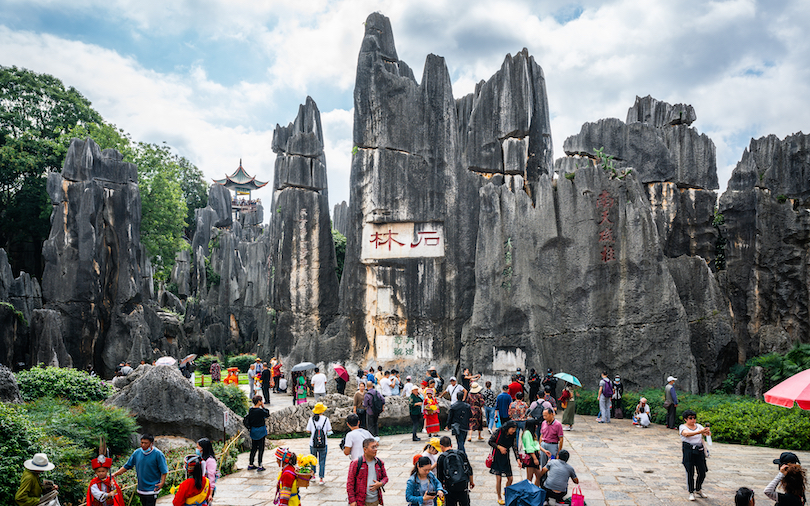
Kunming, the capital of Yunnan Province, is the economic, transportation and cultural center of southwest China. It is linked by rail from all of China’s major cities as well as with Vietnam ; the rail link with Hanoi was established in 1901. Caravans to Southeast Asia, Tibet and India have passed through Kunming since the third century BC.
Kunming’s mild climate makes it a good place to visit any time of the year. It has cool, dry winters though summers can be hot and humid. Growing conditions are great for flowers , with more than 400 varieties grown here.
The camellia is the city’s official flower. The city also is known for its lush green parks, such as Cuihu (Green Lake) Park with its waterways and winding paths. Younger travelers may enjoy a visit to Daguan Park because of its funfair and food stalls.
In addition to its own charms, Kunming serves as a base from which to explore the rainbow of ethnic minority in the area. The most well known nationalities are the Dai, Bai and Naxi. Another popular day trip is to the Shilin Stone Forest that has been known as the “first wonder of the world” since the Ming Dynasty. Located 120 km (75 miles) from Kunming, the stone forest features awesome rock formations in various formations.
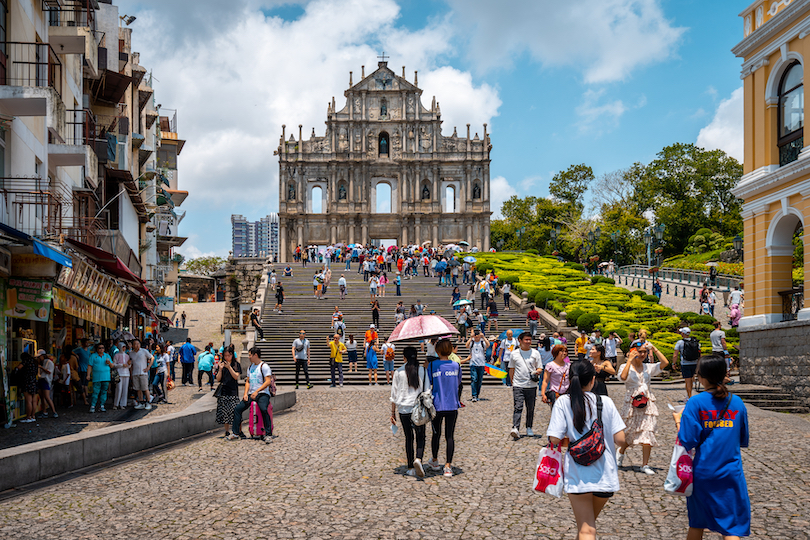
Located on the western side of the Pearl River Delta, Macau is a major gambling destination that is home to luxury resorts, glitzy casinos , and world-class entertainment. The city is set on the South China Sea, not far from Hong Kong and Shenzhen, and is known as the ‘Vegas of China’.
As the Portuguese ruled it for four centuries, Macau exhibits a fascinating mix of Chinese and Portuguese customs and cuisines. Interesting historic sights also abound, with churches, temples, and fortresses found among the colorful colonial-era buildings of Old Macau .
While the Macau Peninsula has lots of important landmarks and several fantastic museums on offer, most people come for its casinos. These are not only home to every type of slot machine and gambling game imaginable but lots of restaurants, bars and hotels. In addition, they sport large shopping complexes and their theaters put on lots of mesmerizing performances and music concerts.
15. Tiger Leaping Gorge
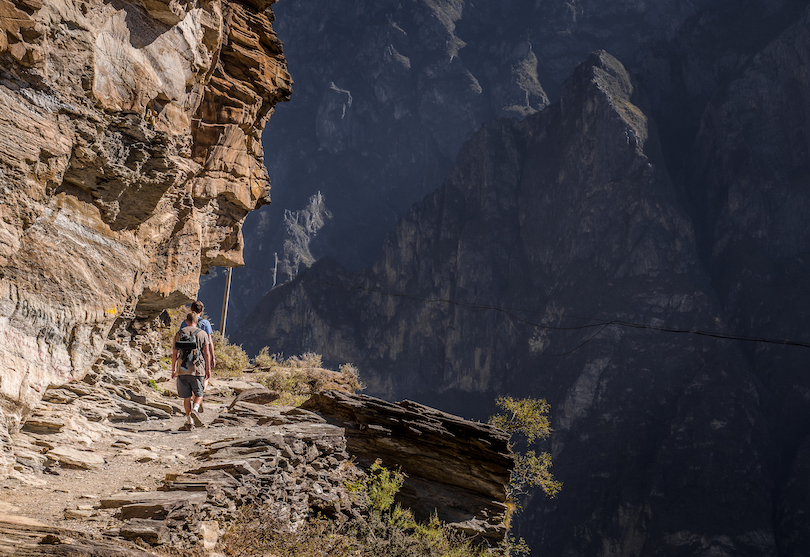
Cutting dramatically through the rugged landscapes of Yunnan Province, Tiger Leaping Gorge is one of the deepest, most scenic, and spectacular river canyons on Earth. Located just to the north of Lijiang, the gorge follows the Jinsha River as it passes terraced farms, quiet villages, and snow-capped peaks.
Stretching around 16 kilometers, the gorge winds between Jade Dragon Snow Mountain and Haba Snow Mountain, both towering to more than 5,000 meters. Together, the majestic mounts and Tiger Leaping Gorge make for some of China’s most arresting natural sights and scenery, with breathtaking views on offer.
Due to its natural beauty , hiking along the gorge’s narrow trail is increasingly popular; this takes you past roaring rapids, sparkling waterfalls , and rugged cliffs. In addition, you can stay in secluded villages and guesthouses to learn more about the Naxi people’s rich culture and history.
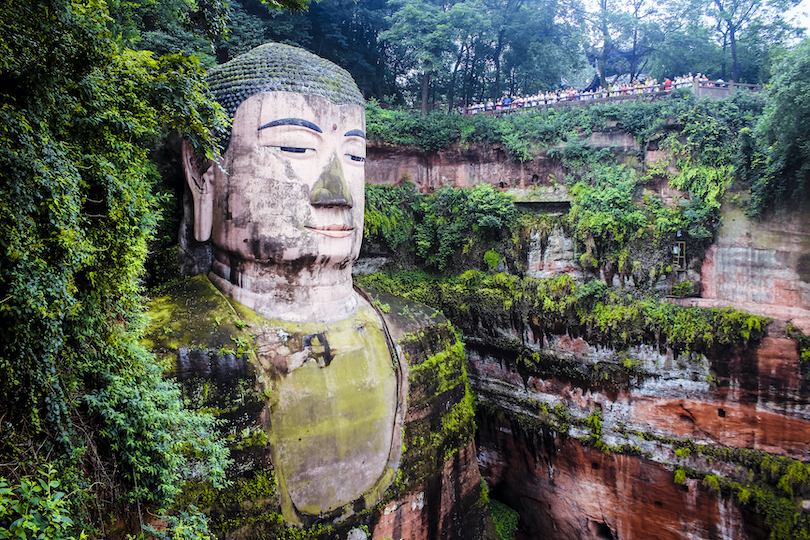
Located in Sichuan Province in southwest China, Leshan lies at the spot where the Dadu, Min and Qingyi rivers meet. The city is home to the largest stone-carved Buddha in the world and known for its proximity to the Mount Emei Scenic Area’s lovely scenery and historical attractions.
Although often overlooked, Leshan has an abundance of restaurants, cafes, and accommodation options, and boasts a thriving culinary scene. Scattered around town are many interesting sights, such as the famous writer Guo Moruo’s Former Residence and the Oriental Buddha Park, home to thousands of amazing statues and carvings.
The main reason people visit, however, is for the Leshan Giant Buddha , which towers to a staggering 71-metres. Built during the Tang Dynasty, the stunning sandstone sculpture is hewn out of the solid cliff face and looks out over the Min and Dadu rivers. Lying nearby is Leshan’s other highlight, Mount Emei , home to 76 Buddhist monasteries and plenty of lovely natural scenery and wildlife.
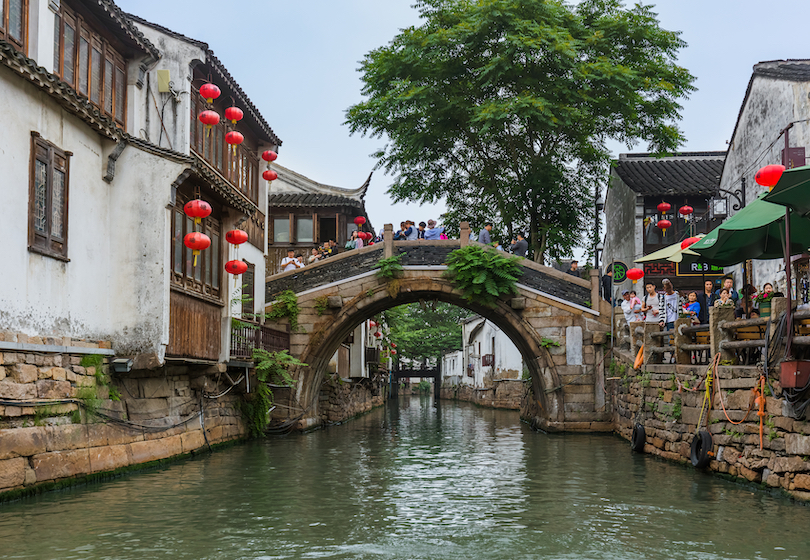
Long famed for its elegance, beauty, and culture, Suzhou lies just to the northeast of Shanghai, in Jiangsu Province. Set on the shores of Lake Tai and the lower reaches of the Yangtze River, the city is full of pretty canals and stone bridges; leading to its nickname, the ‘ Venice of the East ‘.
Although in recent years, China’s rapid development has seen a myriad of modern buildings spring up, Suzhou still boasts age-old pagodas and scenic streetscapes. The city has four classical gardens, with the Lingering Gardens , with its four distinct sections, is considered a masterpiece garden in China.
The gardens are delightful to stroll around and feature rocks, trees, pavilions, and lakes, all harmoniously put together. The Grand Canal , which connects Beijing and Hangzhou, runs through Suzhou, spawning a network of canals throughout the old city.
Founded over 2,500 years ago, Suzhou is a major center of Wu culture and was at one point the capital of the kingdom of the same name. As such, impressive historical sights can be found around town, while a number of excellent museums shine a light on its fascinating history and heritage.
12. Lijiang
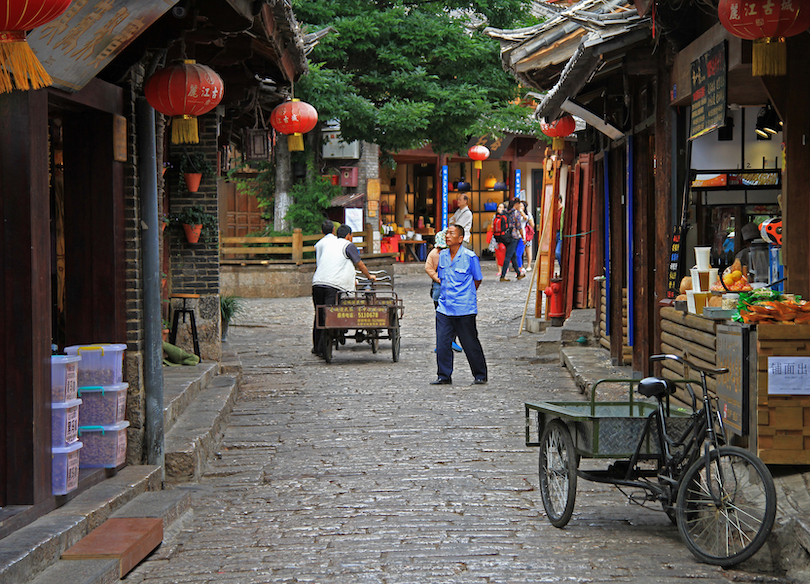
Nestled away in the northwest of Yunnan Province, Lijiang is a pleasant and picturesque place with a timeless look and feel. Once the capital of a small kingdom, the city boasts one of the best-preserved historic centers in China and is a popular tourist destination.
At the heart of Lijiang lies its magnificent Old Town , home to pretty canals, old stone bridges, and winding cobbled streets. Its myriad of beautiful wooden buildings exhibit elegant traditional architecture, with the expansive Mu Palace complex being a highlight. Hidden away among its narrow alleys are some charming tea shops and restaurants for you to try.
Besides its many historical sights, Lijiang is noted for being the main center of the Naxi people ; their rich culture and heritage is on show wherever you go. At the cultural hall, for instance, you can enjoy a traditional music performance, while a number of interesting and informative museums can be found around town.
11. Wulingyuan
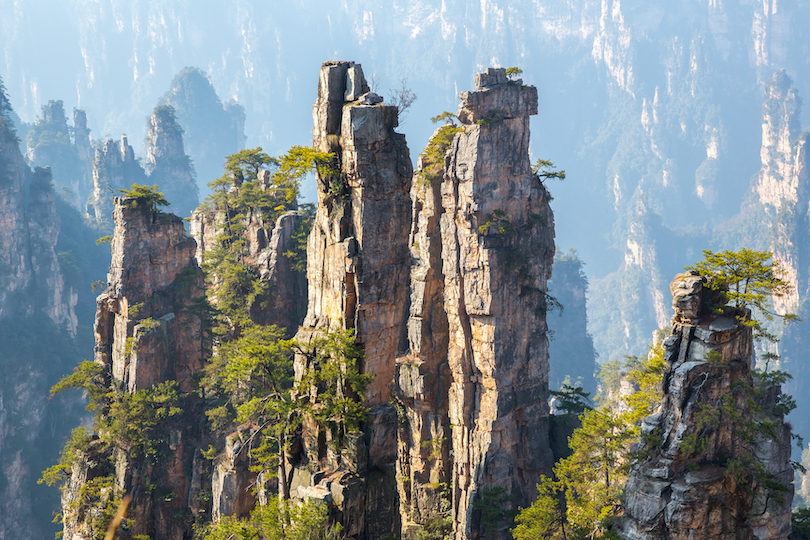
Located just outside the small city of Zhangjiajie in northwest Hunan Province, Wulingyuan boasts some of the most impressive and spectacular landscapes in China. Part of the Wuling Mountain Range , the scenic area is particularly famous for the thousands of pillars and peaks that punctuate the park.
Often shrouded in mist, these karst formations look incredible, and many of them tower over two hundred meters high. Covered in sub-tropical rainforest, they rise above plunging ravines and deep gorges , with sparkling rivers, lakes, and waterfalls found here and there. In addition, the park is home to countless caves and Tianqiashengkong – one of the highest natural bridges on Earth.
Hiking around Wulingyuan’s awe-inspiring landscapes really is a treat, and many of its narrow trails pass along steep clifftops and death-defying drops. From its picturesque and at times perilous paths, you can enjoy exquisite panoramas of the park’s unique landscapes.

Lying on the shores of the shimmering Erhai Lake with magnificent mountains rising all around it, Dali has long been a popular tourist destination. Located in Yunnan Province, the small city is mostly known for its scenic setting, rich cultural heritage and lovely old town.
Over the centuries, Dali was the capital of several kingdoms, so interesting and impressive historical and cultural landmarks can be found around town.
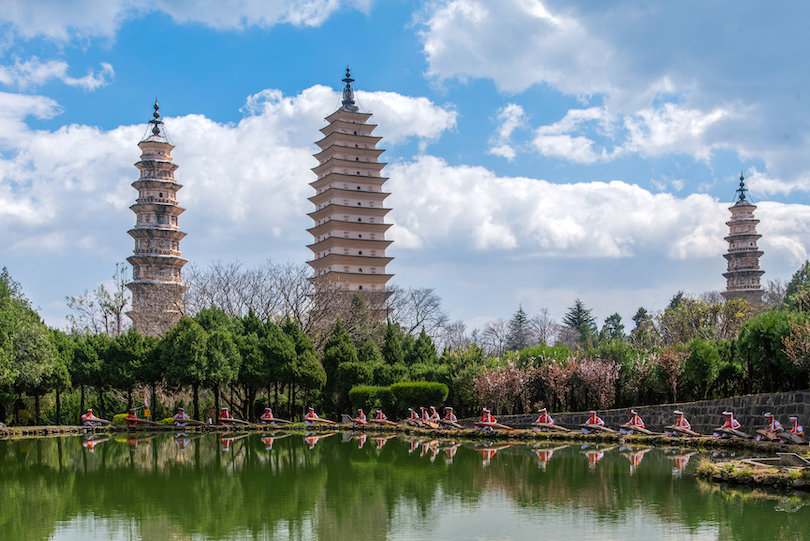
Most of the beautiful buildings in the old town date to the Ming Dynasty, with its ancient city walls, Three Pagodas , and Chongsheng Temple counting among its main sights.
Many great museums are also scattered around, while the lake and nearby mountains offer a wealth of outdoor recreation activities. Hiking, horseback riding and rock climbing in the Cangshan Mountains are all very popular, while Erhai Lake’s shores are home to secluded and scenic villages and ancient towns and temples.
9. Jiuzhaigou
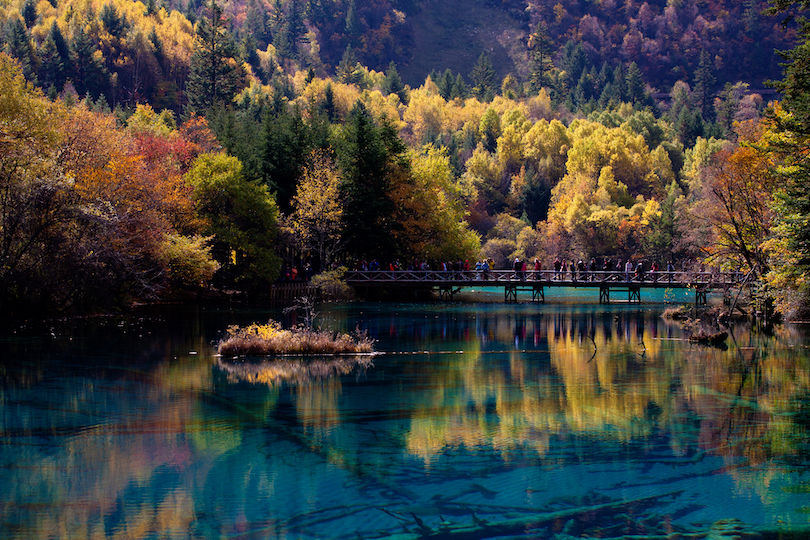
Jiuzhaigou Valley is a place that will appeal to travelers who enjoy the great outdoors and like their scenery pristine and uncluttered. A national park in Sichuan Province, it is home to several Tibetan villages , offering visitors a chance to see another lifestyle without having to brave the high altitudes of the Himalayan region. The region’s name means “nine Tibetan villages.”
The national park has been described as a fairyland because of its many waterfalls ; snow-covered karst mountains, and its 108 blue, turquoise and green colored lakes that are so crystal clear one can see the bottoms. It is also the habitat of giant pandas, though the chances of seeing them are slim due to the park’s size and the number of tourists.
8. Hangzhou
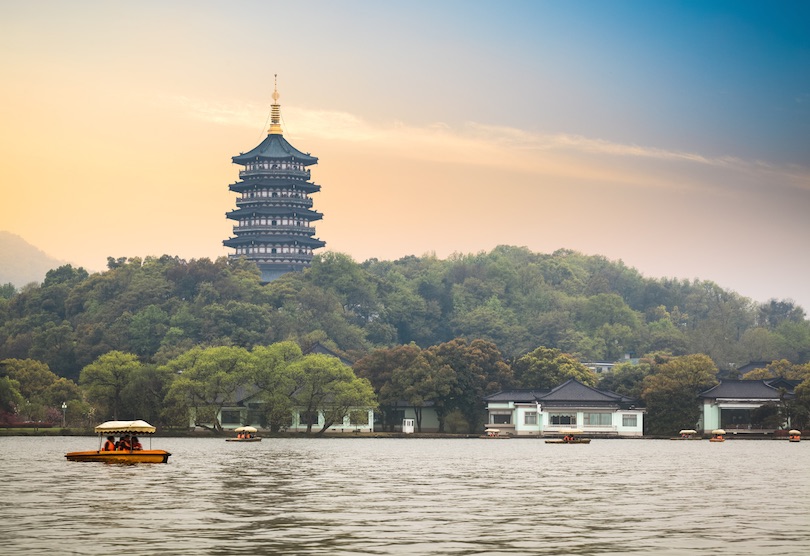
Hangzhou is the capital city of the Zhejiang Province . Famed for its natural scenery, Hangzhou and its West Lake have been immortalized by countless poets and artists. In the 13th century Marco Polo described the city as the most beautiful and magnificent in the world.
Hangzhou’s most famous sight, West Lake is a large lake separated by causeways and lined with ancient buildings and gardens designed for relaxation and spirituality. Visitors will find pagodas, temples, walking paths, sitting areas, tea farms and a museum along its shores and sometimes jutting over the water. Tea is an important part of the West Lake experience. Dragon Well tea produced there is one of the most famous teas in China.
While West Lake arguably offers the best that Hangzhou has to offer in terms of Chinese architecture, gardening and landscapes, Xixi National Wetland Park features a traditional temple and several homes, as well as a being a good representation of local wildlife and its habitat. The Botanical Garden and zoo provide typical city entertainment, but in a distinctly Chinese setting.
7. Yangshuo
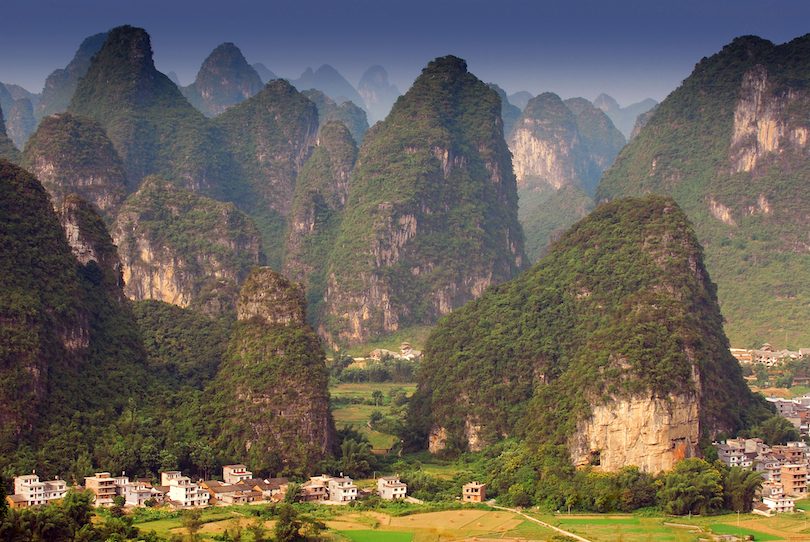
Yangshuo in south China was once a magnet for backpackers because of its cheap prices and laid-back atmosphere, but today it draws all sorts of travelers to enjoy its scenic beauty.
Yangshuo makes a good base to take day trips throughout the area. A favorite activity is to take a boat between Yangshuo and Guilin for a leisurely trip on the Li River, known for its beautiful scenery and karst mountains that have been made famous by photographers and painters all over the world. Many travelers choose to rent bicycles for the trip back, since the route is relatively flat and gives them the opportunity to view farmers toiling in their fields.
Yangshuo’s other famous sites include Moon Hill, so called because a huge hole in the hill resembles a moon; Assembling Dragon Cave , named after the dragon-shaped peaks that surround it, and taking a class in Chinese from one of Yangshuo’s many language schools.
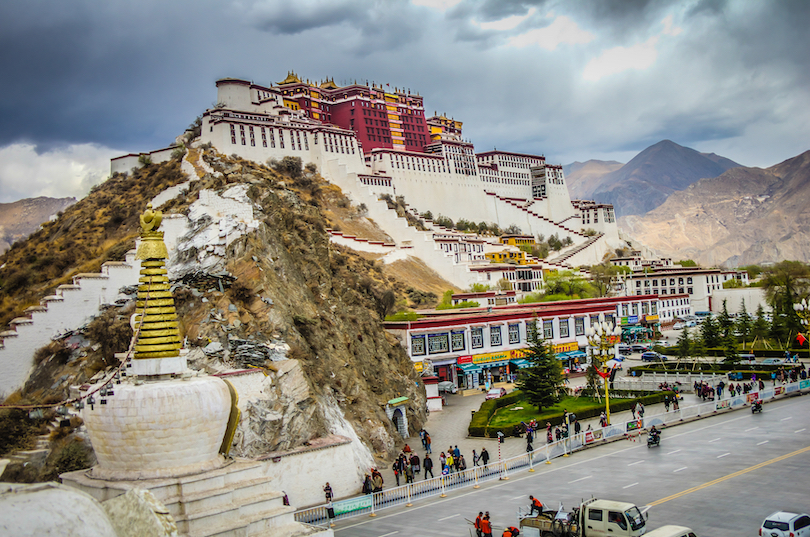
Lhasa is one of the most important cities in Tibet and one of the highest elevated in the world at 3,500 meters (11,500 feet). Lhasa, in spite of its absorption into greater China, has retained much of its culture. During the 7th century, Tibet was unified under Songtsen Gampo, who built a palace on Mount Mapori. Over time, Lhasa went in and out of being the capital of Tibet, but it has always remained an important spiritual center.
Lhasa is very important to Tibetan history and is located meaningfully in a Himalayan Mountain valley. The city is home to the Potala Palace , which was the former home of the Dalai Lama. It was constructed on the Red Hill more than 360 years ago. It is composed of two parts, the White Palace, where the Dalai Lama lived, and the Red Palace, where religious study and practice took place.
Another palace in Lhasa is Norbulingka , built in 1755. It was the Dalai Lama’s summer palace before his exile. Most noteworthy are the palace’s gardens, which stretch nearly 90 acres with the sprawling palace. Other tourist opportunities include visiting Jokhang Market or Chokpori, one of the four sacred mountains of Tibet. To shop traditional wares and souvenirs, go to Barkhor Street .
Lhasa is also still clearly a city under occupation, with armed soldiers standing for the lookout on street corners and rooftops, and constant patrols throughout the city. Non-Chinese nationals are required to obtain a special permit to visit Tibet (Tibet Entry Permit) and hire a tour guide every day they stay in Tibet. This is strictly enforced but details change from time to time.
5. Xi’an
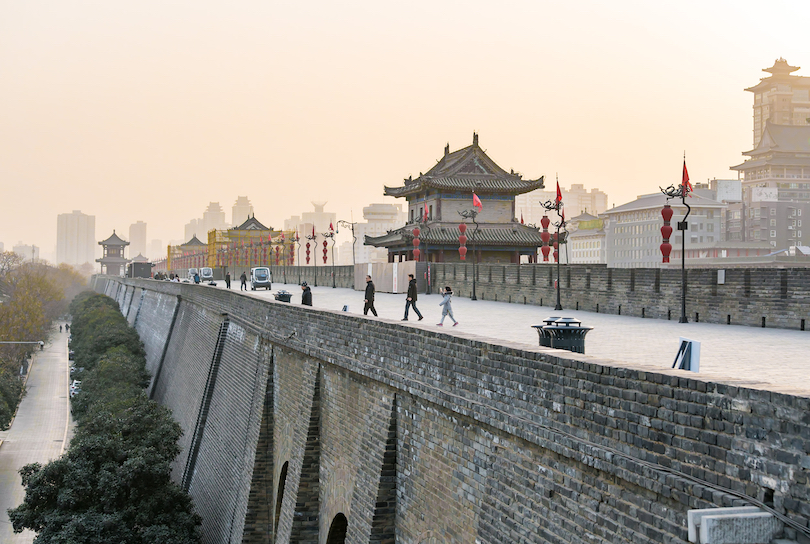
Xi’an is roughly as old as Beijing and serves as the capital city of the Shaanxi Province in northwest China. The history of Xi’an is one of its biggest draws. It was the start of the once indispensable Silk Road that made commerce between many countries in Eurasia possible.
It was the imperial seat for no fewer than eleven dynasties, before the unification of China between 1000 BC and 1000 AD making it one of the Four Great Ancient Capitals of China . Today, it is a cultural and technological center, being home to the Xi’an Aerospace Science and Technology Industrial Base.
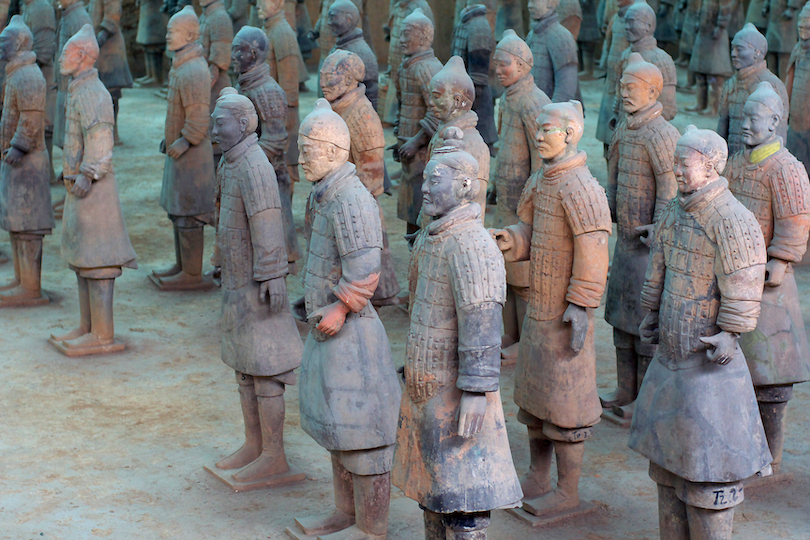
Its most famous attractions is the rather recently discovered Terracotta Army , the protectors of the tomb of the first emperor of China. The site of the ancient Daming Palace includes some original structures and some reconstructions that were only opened to the public in recent years.
Xi’an also boast 14th century city walls that are more than 12 km (8 miles) long. They are not only a part of the city history, but traveling in Xi’an sometimes requires going under, on or around them.
Other interesting structures in the city include the Roman Catholic St. Francis Cathedral of Xi’an, the Ming Dynasty Bell and Drum Towers built in the 14th century, and the Islamic Great Mosque. Those who want a more Eastern experience can watch a traditional Chinese opera at the Shaanxi Grand Opera House.
4. Shanghai
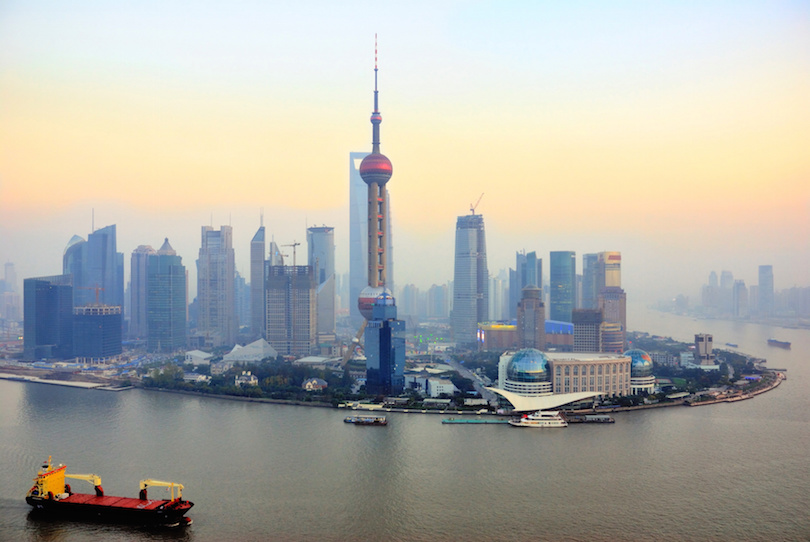
Located on the East China Sea and the mouth of the Yangtze River, Shanghai is the largest city and most developed city in China. Nearly a third of China’s exports come from the area and it attracts almost a quarter of all the country’s foreign investment, more than any single developing country.
Its skyline is filling with skyscrapers while shiny shopping malls, luxurious hotels and prestigious arts centers are rising alongside. The city nights in Shanghai are representative of the Western view of China cities with bright neon signs, bustling streets and numerous businesses.
When it comes to getting around in Shanghai, this city has everything, including an extensive Metro system. The most popular place to go for a stroll is the Bund , Shanghai’s colonial riverfront along Huangpu River. While levies have significantly changed the Bund’s appearance, a number of architecturally significant buildings are adjacent to the strip and are still visible.
Visitors will see a few remnants of old China in Shanghai. However, the city is markedly modern with futuristic buildings like the Mercedes-Benz Arena and the Oriental Pearl Tower dotting the landscape.
Visiting museums is the best way to get a look at the culture of the area and how it has changed over the years. Moreover, the museums tend to be in interesting buildings as well. These include the Shanghai Natural History Museum, the Shanghai Museum and the Rockbund Art Museum.
3. Great Wall of China
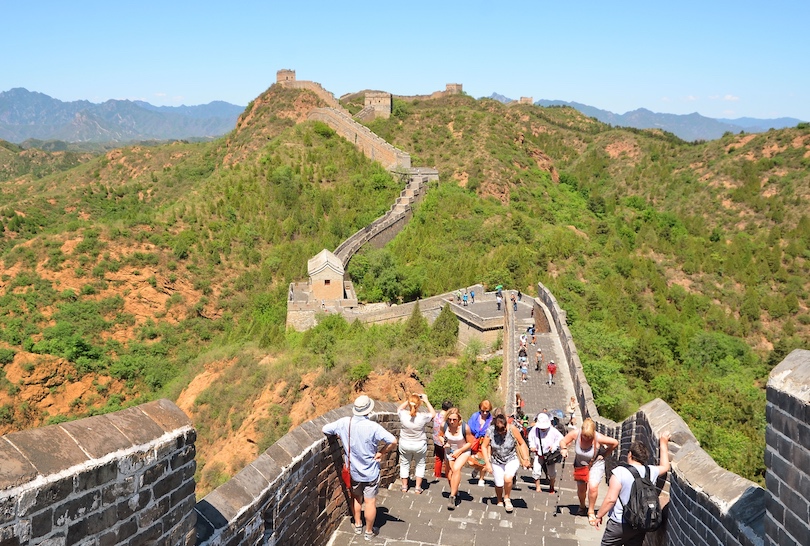
One of the world’s greatest architectural and engineering triumphs, the Great Wall of China spans over 6,000 kilometers and is the country’s most famous sight. In total, it passes through 15 Chinese provinces. Its watchtowers, gates, and fortifications are strung from the Desert in the west to the Bohai Sea in the east.
Built over the centuries and millennia by various Chinese kingdoms, states, and empires, the wall meanders through treacherous terrain and past some spellbinding scenery. While its earliest segments were built back in the 7th century BC to protect people from raiders, many of its most famous parts date to the Ming Dynasty .
As it snakes across mountains, valleys, and hills, the Great Wall has plenty of stunning scenery for visitors to enjoy. While some parts are very well-restored, others lie in wild and remote regions and are in various states of disrepair. One of the most popular sections of the Great Wall to visit is Badaling, just outside of Beijing, while Jinshanling draws hikers due to its untouched nature and fabulous views.
2. Hong Kong
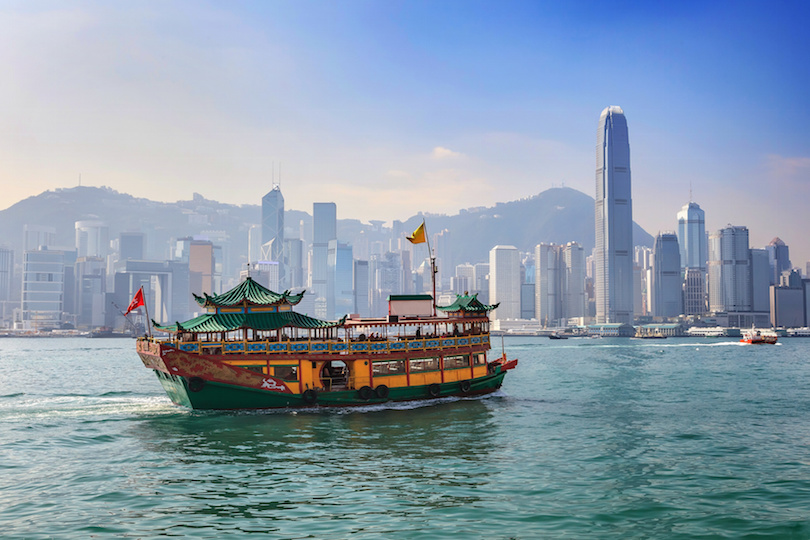
Located off China’s southeastern coast, Hong Kong is a glittering, world-class commercial center where Chinese culture, British colonial influences and modern day high-technology blend together. While it contains the world’s highest concentration of skyscrapers and one of the highest population densities, Hong Kong also offers plenty of green spaces, mountain views and beaches.
Some of the must-see attractions include the famous Victoria Harbour , which is a spectacular sight at night with all the dazzling skyscrapers and The Peak, Hong Kong Island’s highest hill which offers awe-inspiring views of the harbor.
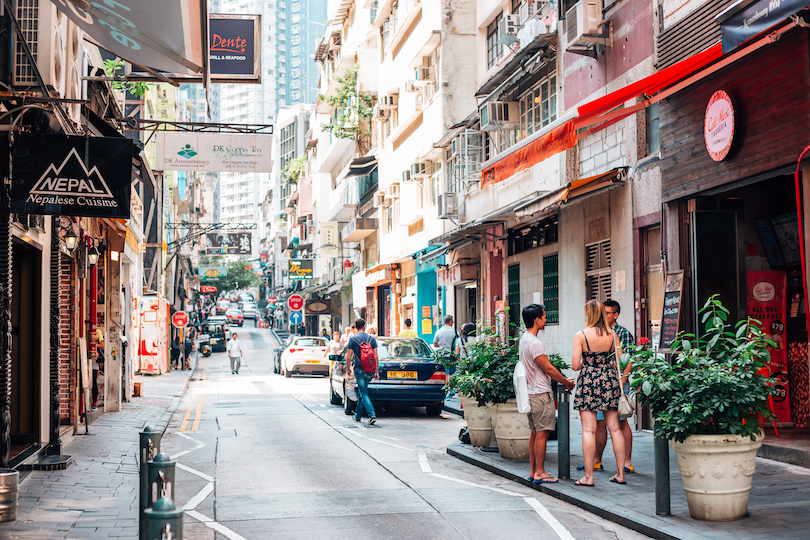
From amusement parks like Ocean Park and Disneyland Hong Kong to prestigious museums, luxury hotels, bustling night markets, horse racing, beautiful beaches and rides on the world’s longest outdoor escalator, Hong Kong has something for everyone.
See also: Where to Stay in Hong Kong
Eating in Hong Kong is an experience all itself with a wide variety of cuisines from international to local Cantonese. A popular food style is dim sum , which involves small portions of food traditionally presented in steamer baskets. Typical dim sum dishes include tasty dumplings with meat, rice noodles, steamed vegetables and soups all served with Chinese tea.

Beijing is the current capital city and remains one of the most popular places to visit in China. Its history dates back more than 3,000 years and much of that history is still alive within its borders. Beijing literally means Northern Capital , a role it has played many times in China’s long history.
It first became notable in Chinese history after it was made the capital of the State of Yan under the name Yanjing . The Mongols seized the city in 1215 and from 1264 it served as the capital of a united China under Kublai Khan. After the fall of the Mongol-founded Yuan dynasty in 1368, the capital was initially moved to Nanjing but was moved back in 1403 and received its present name.
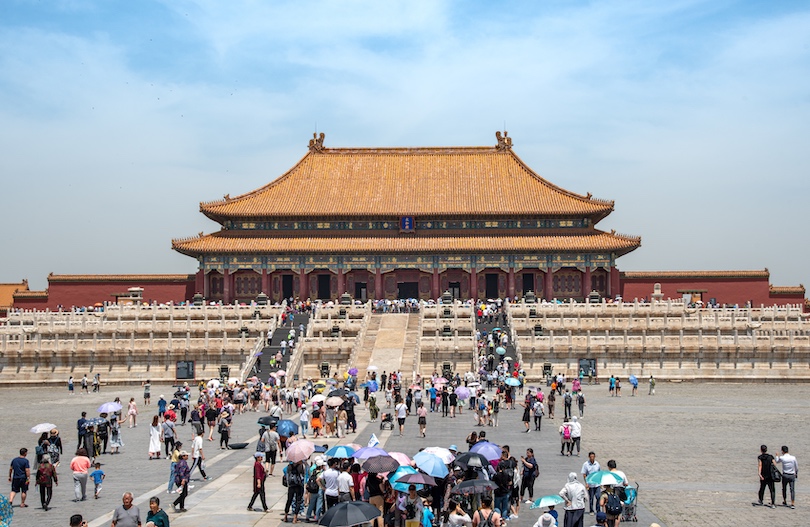
Beijing is home to Tiananmen Square , the Forbidden City, the National Museum of China, as well as the Old and New Summer Palaces. These and other attractions are perfect for observing Chinese gardens, ancient architecture and Chinese culture from a range of periods in the country’s history.
There are numerous temples within and just outside of the city for those who want to witness Confucius, Taoist and Buddhist landmarks or perhaps have a spiritual experience. One of the most popular places to view the Great Wall of China is at Badaling , located about an hour from Beijing .
Known for its flatness and regular construction, the city has only three hills and its concentric ring roads are actually rectangular, like the configuration of the Forbidden City . Beijing boasts an extensive public transportation network, which includes an extensive subway system.
There are bike trails, but travelers may find the pollution too oppressive for cycling. For more than 100 years, Wangfujing Commercial Street has been the best place to shop in Beijing. However, the Yashow and Silk Street Markets are also very popular.
China Travel Video
Share this post:.
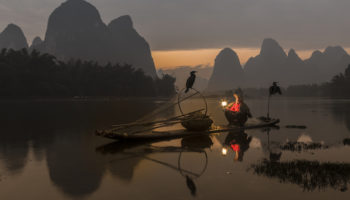
9 Most Beautiful Regions in China
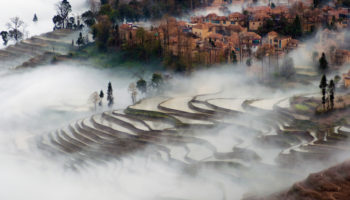
14 Most Beautiful Small Towns in China
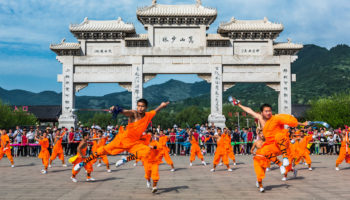
10 Most Amazing Temples in China
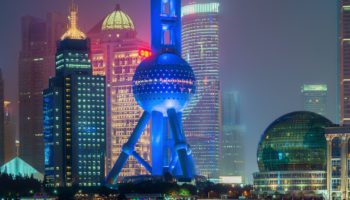
15 Best Cities to Visit in China
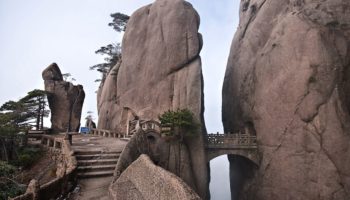
12 Most Beautiful National Parks in China
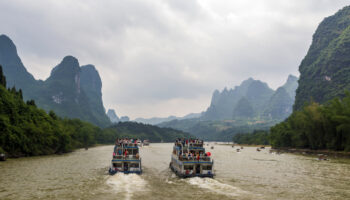
30 Top Attractions & Things to do in China
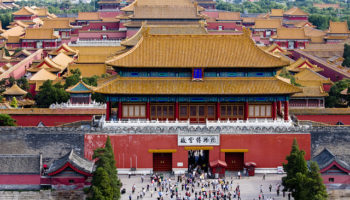
10 Top Tourist Attractions in Beijing
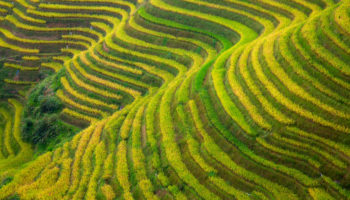
10 Most Amazing Destinations in South China
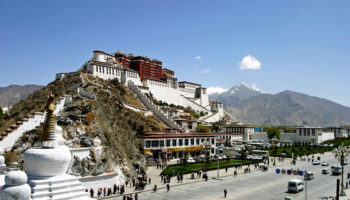
Potala Palace in Tibet – The World’s Highest Palace
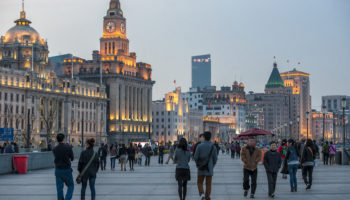
10 Top Tourist Attractions in Shanghai
Accessibility Links

12 of the best places to visit in China
From the forbidden city in beijing to jade dragon snow mountain in yunnan, these are the best places to visit in china.

I t’s easy to underestimate the size and diversity of China. You could experience the dry heat of the Gobi desert, the humidity of the rainforest in Xishuangbanna, the cool breeze coming off Jade Dragon Snow Mountain’s snow-capped peaks and the subtropical beaches in Hainan in one day if you had a plane that could zip you around the country quickly enough. Most first-time visitors make Beijing, Shanghai and Xi’an their priorities, but if you’re travelling on an extended trip, or if it’s your second or third visit, there are plenty of other must-visit attractions to keep you coming back. Here are 12 of the best places to visit in China.
Main photo: Zhengyang Gate in Beijing (Getty Images)

1. The Great Wall of China
At 13,171 miles long, and built in sections over more than 2,000 years, this ancient fortification is an essential stop. Most tours depart from Beijing , with a travel time of between one and three hours’ drive depending on which section of the Great Wall you visit. Mutianyu is the best restored but Badaling remains popular because it was the first section to open to the public. For the more intrepid, Jinshanling to Simatai is a popular hiking route, taking about three hours.
• When is the best time to visit the Great Wall of China?

The Chinese capital is a sprawling city where there’s a landmark, monument or Unesco world heritage site everywhere you turn. You could spend a week here and not even scratch the surface. The Forbidden City, Tiananmen Square, and Summer Palace will be among your highlights — but If you’re staying for longer, it’s worth booking a hutong tour to explore the traditional courtyard residences that once dominated the city, while a Peking duck from Da Dong is a bucket-list culinary experience.
Advertisement

3. Shanghai
China’s largest city by population size, Shanghai is also the country’s economic powerhouse. There’s a European influence here as the French and British occupied parts of the city during the 19th century, leaving their imprint on the architecture. On the Bund, for example, the clocktower was modelled on Big Ben, while the leafy French Concession is dotted with grand mansions. The city comes alive at night — skyscrapers in Pudong, the city’s financial district, are lit up like Christmas trees while restaurants and bars are open until the early hours. Make sure you eat your fill of xiaolongbao (soup dumplings).

4. Xi’an, Shaanxi
The Terracotta Army guarding the tomb of Qin Shi Huang (Emperor Qin) is the main draw for visitors to Xi’an, but this one-time capital of China is a treasure trove of heritage attractions. Nearby and less well-known is Han Yang Ling, the mausoleum of Emperor Jing, which is filled with 2ft-high doll-like terracotta warriors. Meanwhile, Xi’an city wall is a tremendously well-preserved example of medieval fortification. And, as the city was the starting point of the Silk Road, Islamic influences can be seen in its Muslim quarter.

5. Chengdu, Sichuan
Home of the Giant Panda Breeding Research Base, Chengdu has become a popular stop on many China tours . Foodies will relish their visit — it’s one of the original Unesco cities of gastronomy, so you’ll find the best of Sichuan cuisine here. Highlights include spicy hotpot, mapo tofu, and the myriad street food choices you’ll find outside the city’s many temples. It’s also the departure point for tours to Jiuzhai Valley National Park, Huanglong National Park and the autonomous regions around Sichuan.

6. Chongqing
One of four municipalities managed by the central government (along with Beijing, Shanghai and Tianjin), Chongqing’s special status has allowed it to flourish, a process evidenced by the towering — and architecturally interesting — skyscrapers that dominate its riverfront. The antithesis of all this modernity is Ciqikou Old Town, where you can get a taste of what the city looked like before the development. And before you float down the Yangtze on a river cruise, head to Dazu — unknown compared to the Longmen Grottoes, this Unesco world heritage site is home to over 10,000 rock carvings featuring Buddhist, Taoist and Confucian themes.

7. Hangzhou, Zhejiang
Just southwest of Shanghai, Hangzhou is postcard-pretty, with a reputation built by poets and writers inspired by its beauty. West Lake, filled in the summer with water lilies and lined by willows, is its key attraction; head out of the city and you’ll find fields of tea bushes waiting to be plucked and made into longjing (dragon well) tea. Buy this and silk as your souvenirs.

8. Zhangjiajie National Forest Park, Hunan
Perhaps better known as the Avatar mountains, Zhangjiajie’s pillar-like rock formations, covered in dense forest and swirling in mist, inspired the Hallelujah Mountains of Pandora in the 2009 film. But long before that it was depicted in Chinese watercolours, and has become popular again in recent years thanks to the opening of a glass-bottomed bridge enabling visitors to cross a canyon that stretches a knee-trembling 300m (984ft) below.

9. Li River, Guangxi
The Li River, winding its way through a verdant karst landscape, is instantly recognisable, not least because it’s depicted on every 20 yuan note. Visits here usually include a cruise, sailing from Guilin to Yangshuo, as well as a photo stop to capture a local fisherman — and it’s always one of a certain age — hauling in the day’s catch with the help of cormorant.

10. Yinchuan, Ningxia
Remote, arid and virtually unheard of in the west until just over a decade ago, Yinchuan isn’t the most obvious tourist destination. But it’s here you’ll find China’s burgeoning wine region, producing Bordeaux-style reds that are beating the competition in blind tastings at the likes of the Decanter World Wine Awards. Yinchuan is also a gateway to the undulating dunes of the Tengger Desert and Sanguankou, a section of the Great Wall of China built during the Ming dynasty (1368 to 1644).

11. Sanya, Hainan
Often dubbed the Hawaii of China, the island province of Hainan benefits from a sub-tropical climate that, coupled with long stretches of golden sandy beaches, has made it a popular resort destination. Sanya is by far the most popular destination, with options for diving off its coast. Inland there are forested trails for hiking, and hot springs to unwind in.

12. Jade Dragon Snow Mountain, Yunnan
Soaring 5,596m (18,360ft) above sea-level at its highest point, Jade Dragon Snow Mountain has a breathtaking glacial beauty. It’s home to China’s highest ski resort in winter, and tours here generally include a stop at Tiger Leaping Gorge, where the Jinsha River thunders down a steep valley, and stays in Lijiang Ancient Town, with its carved wood and tiled roof old houses; just be prepared for altitude sickness.
• Best things to do in China • Best Silk Road tours: China and the Stans of Central Asia
Sign up for the Times Travel Newsletter here .
Related articles

40 Most Beautiful Places to Visit in China
China , a land of unrivaled beauty, unfolds like a masterpiece across its expansive canvas of 9.6 million square kilometers. From the misty Jiangnan region in the east to the snow-capped mountains of the Qinghai-Tibet Plateau in the west, China offers a wide variety of natural wonders , including rivers , lakes, grasslands, deserts, and forests.
CNN , renowned for its discerning eye, has meticulously curated a selection of China's top 40 most beautiful places. Building upon this illustrious list, our esteemed team of travel experts at Asia Odyssey Travel now presents to the world these 40 most beautiful places in China , inviting travelers to embark on an unforgettable journey through the captivating tapestry of China. Prepare to be captivated as you witness the harmonious convergence of nature's wonders, unveiling a panorama so breathtaking, it will leave an indelible mark upon your soul. Get inspired now by AOT's list of China's 40 most beautiful places!
Content Preview

1. Great Wall, Beijing - A Must-Do for Any Traveler in China
The Great Wall (长城) , one of the world's most iconic landmarks, is a must-visit attraction when in Beijing . Spanning over 21,000 kilometers, this ancient wonder offers a glimpse into China's rich history and architectural marvels. Located about 60-130 kilometers (1-2 hours’ drive) from Beijing , the Great Wall provides an unforgettable experience for travelers. There are several sections in Beijing, including Mutianyu , Badaling, Jinshanling , Jiankou , Simatai , and Huanghuacheng Great Wall. The best section for you depends on your interests, fitness level, and travel style.
- For families and first-time visitors: Mutianyu and Badaling offer easy access and stunning views.
- For adventurous hikers: Jiankou and Gubeikou provide a challenging and authentic experience.
- For history buffs: Jinshanling and Gubeikou offer well-preserved sections with rich historical significance.
Hike along its winding paths, marvel at the breathtaking panoramic views, and immerse yourself in the grandeur of this UNESCO World Heritage site . You can learn about the wall's construction and appreciate its magnificence up close.
Practical Tips: Choose a section of the Great Wall that suits your fitness level and interests.The most popular sections are Mutianyu and Badaling, but there are many less crowded options available.Dress appropriately for the weather and wear comfortable walking shoes.
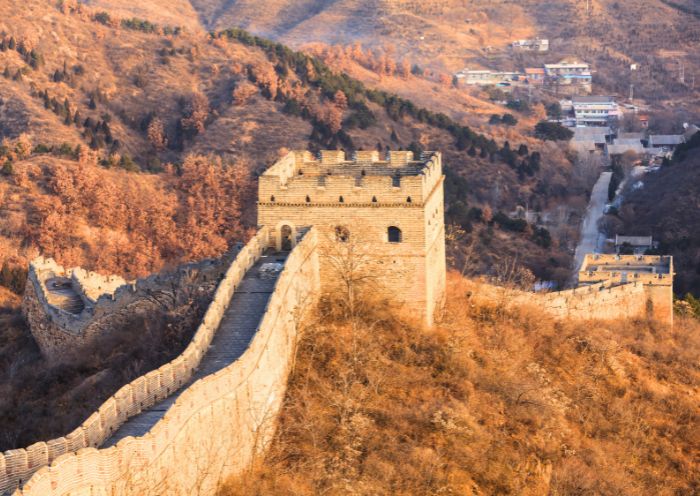
4 Days Classic Beijing Tour with Forbidden City & Great Wall
4 Days Beijing Tour: City Highlights, Great Wall Night Views & Gubei Water Tour
2. Forbidden City, Beijing - Step into China's Imperial Past
The Forbidden City (故宫) , located in the heart of Beijing , is a captivating destination that offers a glimpse into the grandeur and history of imperial China. With its impressive architecture and cultural significance, it is a must-visit attraction for travelers. The Forbidden City served as the imperial palace for over 500 years that served as the residence of 24 emperors during the Ming and Qing dynasties and is now a UNESCO World Heritage site .
Situated in downtown Beijing , the Forbidden City is easily accessible for visitors. Once inside, you can explore the vast complex and marvel at its stunning palaces, ceremonial halls, and beautiful gardens . Take your time to admire the intricate details of the buildings and learn about the lives of emperors and their courtiers.
There are several top things to do in the Forbidden City. Walk along the central axis and explore the imperial chambers, visit the Hall of Supreme Harmony, the Palace of Heavenly Purity, and the Hall of Preserving Harmony. Don't miss the opportunity to see the treasures housed in the Palace Museum, which displays a remarkable collection of imperial artifacts.
Practical Tips: Purchase your tickets online in advance to avoid long queues.Allow at least 3-4 hours to explore the Forbidden City thoroughly.Audio guides are available for rent to enhance your understanding of the historical significance of each site.
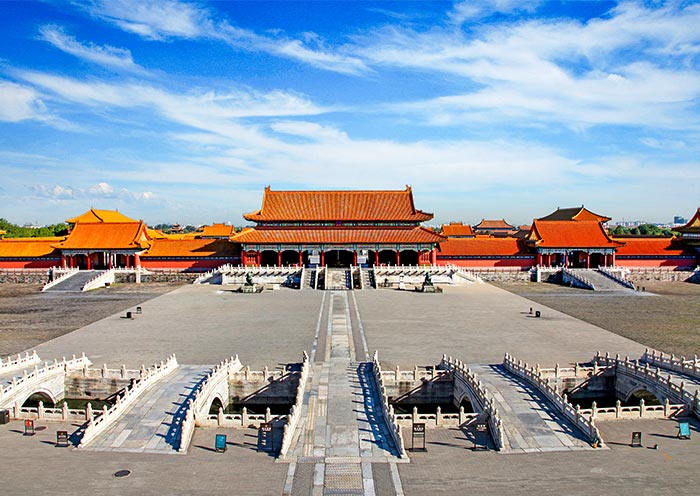
2 Days Beijing World Heritage Tour with Forbidden City & Mutianyu Great Wall
3. Terracotta Warriors, Xian - Awe-inspiring Archaeological Marvel with the Past
The Terracotta Warriors (兵马俑) in Xian , Shaanxi, are a remarkable archaeological site that attracts visitors from around the world. Discovered in 1974, this ancient army of life-sized clay soldiers, horses, and chariots was created to accompany Emperor Qin Shi Huang in the afterlife. The site showcases the incredible craftsmanship and historical significance of the Qin Dynasty.
Situated approximately 40 kilometers from Xian , the Terracotta Warriors are easily accessible for tourists. Once there, you can explore the three excavation pits, each revealing different aspects of the army's formation and weaponry. Witness the sheer magnitude of the army and marvel at the intricate details of each individual statue.
Practical Tips: Book your tickets in advance, especially during peak seasons.Allow ample time to explore the vast excavation site and admire the Terracotta Warriors from various angles.Audio guides are available to provide context and insights into the historical significance of the Terracotta Army.
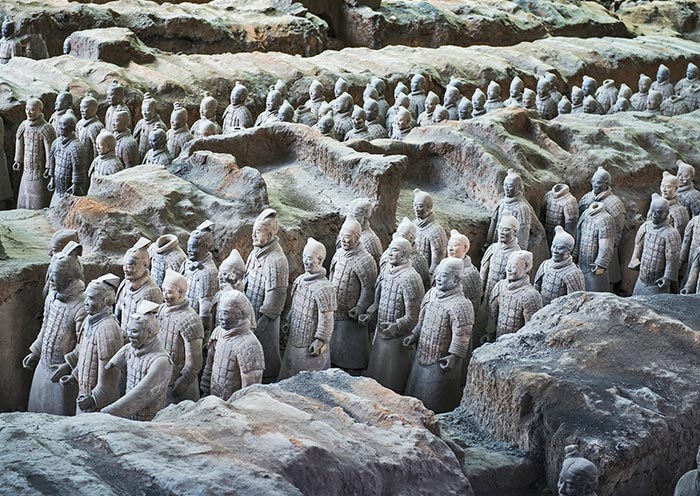
3 Days Xi'an Essence Tour: Terracotta Warriors, City Wall & Tang Dynasty Everbright City
3 Days Xian Family Tour with Chinese Calligraphy & Hanfu Experience
4. The Bund, Shanghai - A Stroll Through Shanghai's Architectural Grandeur
The Bund (外滩) , located in the metropolis Shanghai , is an iconic waterfront area that offers a unique blend of history, culture, and modernity. With its stunning skyline views and architectural marvels, it is a must-visit destination in Shanghai. The Bund stretches along the Huangpu River and showcases a collection of colonial-era buildings that once housed banks and trading houses.
Situated in the heart of Shanghai, the Bund is easily accessible for visitors. Stroll along the waterfront promenade and admire the architectural beauty of the buildings , such as the neoclassical Bund Customs House and the Art Deco Peace Hotel. Marvel at the contrast between the historical structures and the futuristic skyscrapers of Pudong across the river.
There are several top things to do in the Bund area. Take a Huangpu River Cruise to fully appreciate the panoramic views of the skyline. Explore the Bund Sightseeing Tunnel, an underground tunnel that connects the Bund to Pudong, offering a unique visual experience. Visit the Shanghai Museum of Art or indulge in some retail therapy at Nanjing Road, a bustling shopping street nearby.
Practical Tips: Visit during the day to appreciate the architectural details and the bustling river activity.Take a leisurely boat ride on the Huangpu River for a unique perspective of the cityscape.Capture panoramic views of the Bund from the rooftop bar of the Peninsula Hotel.
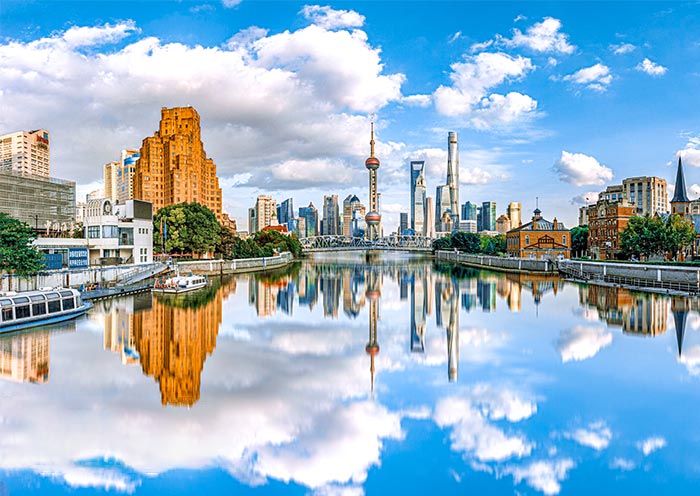
Classic Shanghai Day Tour - A Glimpse of China's Magic City
3 Days Best Shanghai Tour: Encounter Old and New Shanghai
5. Jiuzhaigou Valley, Sichuan - Unveiling the Enchantment of "Fairyland on Earth"
Jiuzhaigou Valley (九寨沟) , located in Sichuan province , is a mesmerizing destination that captivates travelers with its stunning natural beauty. With its turquoise lakes, cascading waterfalls, and snow-capped peaks, Jiuzhaigou Valley is a paradise for nature enthusiasts and photographers.
Situated around 330 kilometers from Chengdu , Jiuzhaigou Valley is easily accessible by flight (1 hour), bus or private transfer. The journey for private car takes approximately 8-10 hours, but the scenic landscapes along the way make it worthwhile. When the high-speed train opens, you'll be able to travel directly from Chengdu to Jiuzhaigou.
The best time to visit Jiuzhaigou Valley is during the autumn months of September to November when the foliage turns vibrant shades of red, orange, and yellow. Spring , from April to June, is also a great time to visit when the valley comes alive with blooming flowers.
Once in Jiuzhaigou Valley, there are several top things to do. Explore the three main valleys of Rize, Zechawa, and Shuzheng, each offering their own unique attractions. Marvel at the magnificent Nuorilang and Pearl Shoals waterfalls, take leisurely walks around the picturesque lakes, and immerse yourself in the tranquility of the ancient forests. And also, combine with Huanglong Valley for your Jiuzhaigou trip .
Practical Tips: Visit during the autumn foliage season to witness the vibrant hues of red, orange, and yellow.Allow sufficient time to explore the valley's many scenic spots, including Wuhua Lake, Ruoergai Grassland, and Shuzheng Falls.Consider staying overnight in the valley to fully experience its tranquility and beauty.
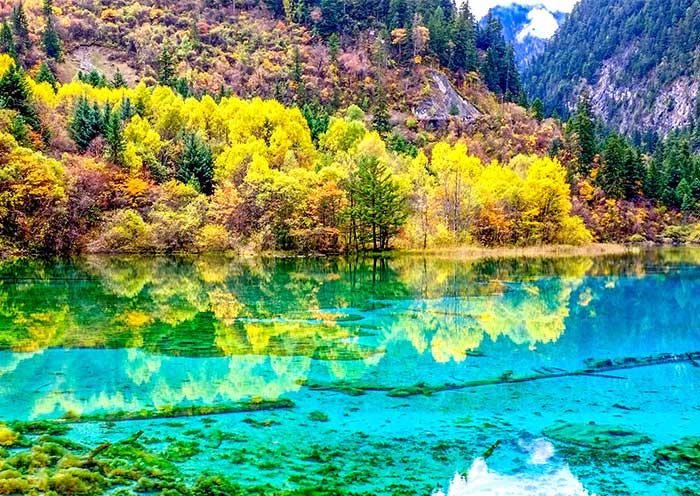
5 Days Jiuzhaigou Valley & Panda Tour from Chengdu by Flight
7 Days Sichuan Highlights Tour of Chengdu, Jiuzhaigou, Leshan and Emei
6. Zhangjiajie National Forest Park, Hunan - Soaring through Nature's Wonderland
Nestled amidst the breathtaking landscapes of Hunan Province , Zhangjiajie National Forest Park (张家界国家森林公园) is a haven for nature enthusiasts and adventure seekers. This captivating site, renowned for its towering sandstone pillars, mystical rock formations, and diverse ecosystems, promises an unforgettable journey into China's natural wonders. Zhangjiajie National Park is located in the northwestern part of Hunan Province, approximately 40 kilometers from Zhangjiajie City .
Once in the park, there are several top things to do. Take a ride on the famous Bailong Elevator, which offers breathtaking views of the surrounding scenery. Explore the enchanting Yuanjiajie Scenic Area, home to the famous Hallelujah Mountain seen in the movie "Avatar." Hike through Tianzi Mountain: Witness the stunning rock formations, panoramic views, and unique flora and fauna of this iconic mountain. Hike along the Golden Whip Stream, a picturesque trail that winds through lush forests and alongside crystal-clear streams.
Other Recommended Top Things to Do in Zhangjiajie:
- Walk the Glass Bridgeover Zhangjiajie Grand Canyon: Challenge your fear of heights on the world's highest glass bridge and enjoy unparalleled panoramas.
- Explore the Yellow Dragon Cave: Discover a wonderland of colorful geological formations, shimmering pools, and intricate rock formations.
- Relax by Baofeng Lake: Take a boat ride on the serene lake, enjoy the picturesque scenery, and escape the crowds.
Practical Tips: Visit during the off-season to avoid crowds and enjoy a more tranquil experience.Allow at least 2-5 days to explore the park's diverse landscapes and attractions.Consider staying in a hotel within the park to fully immerse yourself in its natural beauty.
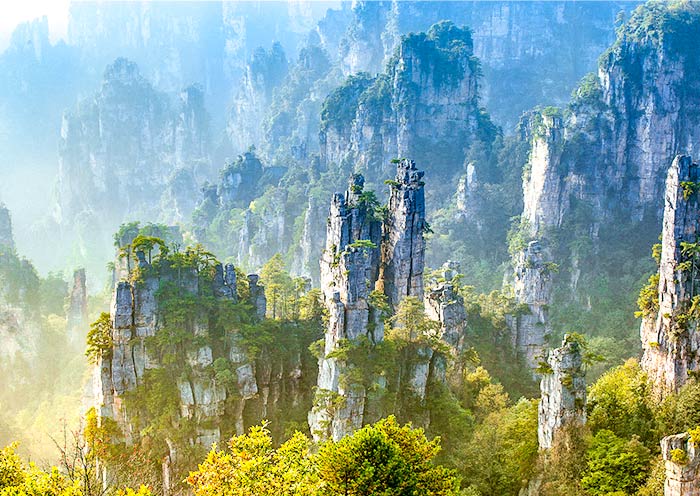
3 Days In-depth Zhangjiajie National Forest Park Tour in Wulingyuan
4 Days Zhangjiajie Best Natural Tour with Glass Bridge & Tianmen Mountain
7. Kanas Lake, Xinjiang - Jewel of Xinjiang
Kanas Lake (喀纳斯) , located in the north Xinjiang, is a hidden gem that beckons travelers with its serene beauty. Known for its crystal-clear waters, surrounding snow-capped mountains, and lush forests, Kanas Lake is a paradise for nature enthusiasts and photographers. Kanas Lake is located in Burqin County, Altay Prefecture, Xinjiang, approximately 500 kilometers from Urumqi .
The best time to visit Kanas Lake is during the autumn months of September and October when the foliage transforms into a kaleidoscope of vibrant colors. Spring and early summer are also ideal for pleasant weather and blooming wildflowers.
Once at Kanas Lake, there are several top things to do. Take a boat ride on the lake to fully appreciate its beauty, hike along the surrounding trails for panoramic views, and visit the Tuwa ethnic village to experience the local culture.
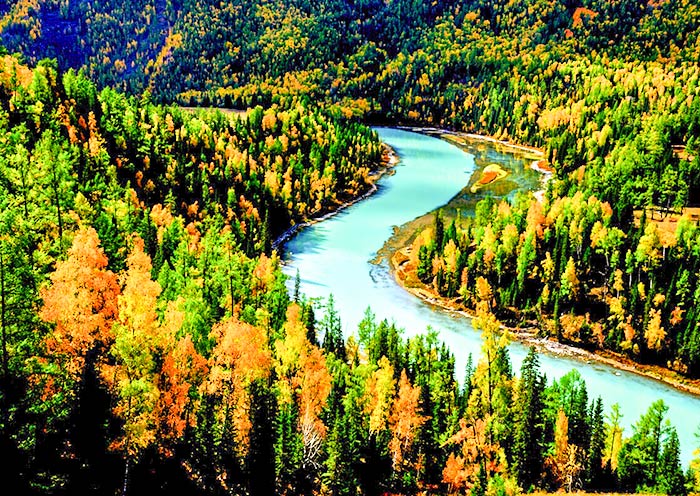
8. Yangshuo, Guangxi - Ultimate Beauty of Karst Countryside Views
Yangshuo (阳朔) , located in the Guangxi region of China , is a captivating destination that draws travelers with its stunning landscapes and vibrant local culture. Surrounded by towering limestone karsts and the picturesque Li River , Yangshuo offers a unique blend of natural beauty and outdoor adventures.
Situated approximately 65 kilometers from Guilin , Yangshuo is easily accessible by Li River cruise (4 hours) or bus, making it a popular side trip for visitors exploring Guilin.
There are several top attractions and activities to experience in Yangshuo. Taking a leisurely boat ride along the Li River is a must-do, offering breathtaking views of the karst peaks and lush countryside. Exploring the famous West Street is another highlight, with its lively atmosphere, local handicrafts, and delicious street food. Cycling or bamboo rafting along the Yulong River provides an opportunity to immerse oneself in the tranquil rural scenery.
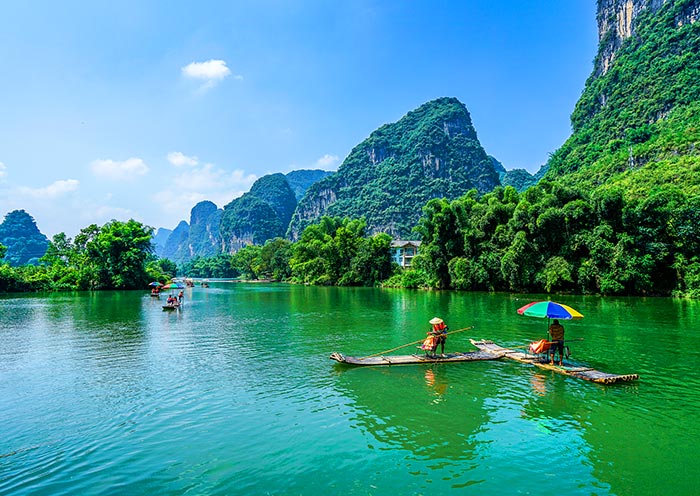
3 Days Guilin Yangshuo Highlights Tour with Li River Cruise & Yulong River
4 Days Guilin Yangshuo & Longji Rice Terraces Classic Tour
9. Yellow Mountain, Huangshan - Ascending into Beauty
Yellow Mountain (黄山) , or Huangshan Mountain, is a majestic destination that attracts travelers with its breathtaking beauty and iconic granite peaks. Known for its ethereal sea of clouds, ancient pine trees, and stunning sunrises, Yellow Mountain is a must-visit for nature enthusiasts and hikers. Situated in the Anhui province , Yellow Mountain is approximately 60 kilometers away from the city of Huangshan .
The best time to visit Yellow Mountain is during spring and autumn when the weather is mild and the landscapes are at their most vibrant. In Summer, enjoy warm weather and clear skies, offering ideal conditions for experiencing the "Sea of Clouds". Winter also are the time to view the snow. Learn more about Best Time to Visit Yellow Mountain >>
Top Things to Do for Visiting Yellow Mountain:
- Hike the "Beginning-to-Wonder" Trail: Embark on this classic trail offering stunning views of the "Sea of Clouds" and iconic peaks like the "Lion Peak" and "Flying Over Rock."
- Climb the "Heavenly Capital Peak": Challenge yourself to reach the highest peak in Yellow Mountain and witness the breathtaking panoramic vistas.
- Visit the "Xihai Grand Canyon": Explore this scenic gorge adorned with waterfalls, natural pools, and unique rock formations.
- Relax at the "Jade Screen Hot Springs": Immerse yourself in the therapeutic hot springs and rejuvenate after a day of exploration.
- Discover the "Fairyland": Explore this hidden gem known for its mystical atmosphere, serene ponds, and ancient temples.
Practical advice for visiting Yellow Mountain includes wearing comfortable shoes and clothing suitable for hiking, bringing layers as temperatures can vary, carrying enough water and snacks for the trek, and being prepared for the crowds during peak seasons. It is also important to follow the designated paths, respect the environment, and take necessary precautions for mountain safety.
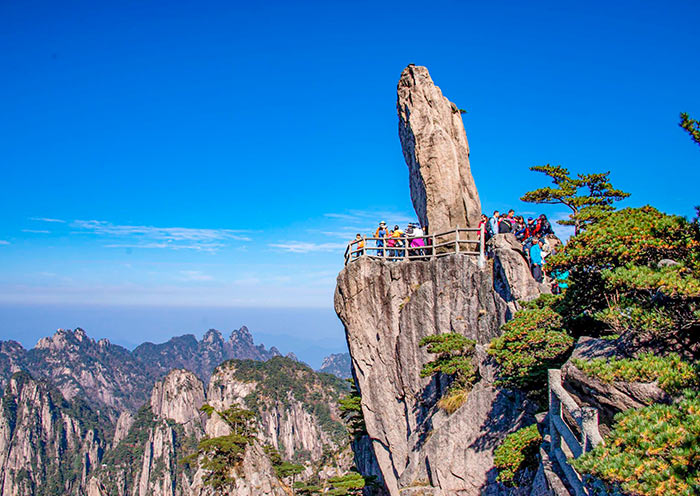
4 Day Huangshan Heritage Tour: Yellow Mountain, Hongcun & Xidi Ancient Villages
3 Days Huangshan Essence Tour: Yellow Mountain & Hongcun Village, Tunxi Old Street
10. Potala Palace, Tibet - Majestic Symbol of Tibetan Culture
Dominating the Lhasa skyline, the Potala Palace (布达拉宫) stands as a majestic symbol of Tibetan culture and history. This UNESCO World Heritage Site , once the residence of the Dalai Lamas, offers a glimpse into the spiritual heart of Tibet , inviting visitors on a journey through time and tradition. Situated in the capital city of Lhasa , the Potala Palace is conveniently located within the city center, allowing for easy access by foot or taxi.
Admire the imposing red and white facade, explore the intricate carvings and murals, and marvel at the vast collection of statues, frescoes, and religious artifacts housed within. Wander through peaceful courtyards and prayer halls, witness monks chanting and offering prayers, and find solace in the tranquil atmosphere. Ascend to the rooftop and witness panoramic vistas of Lhasa and the surrounding valley, capturing the grandeur of the palace against the backdrop of the Himalayas.
Practical Tips:
- Altitude: Lhasa's high altitude (3,650 meters) can cause . Acclimatize gradually and carry necessary medication.
- Respectful dress code: Dress modestly when visiting the palace, covering shoulders and knees.
- Photography: Photography is permitted in certain areas, but consult the guidelines before taking pictures.
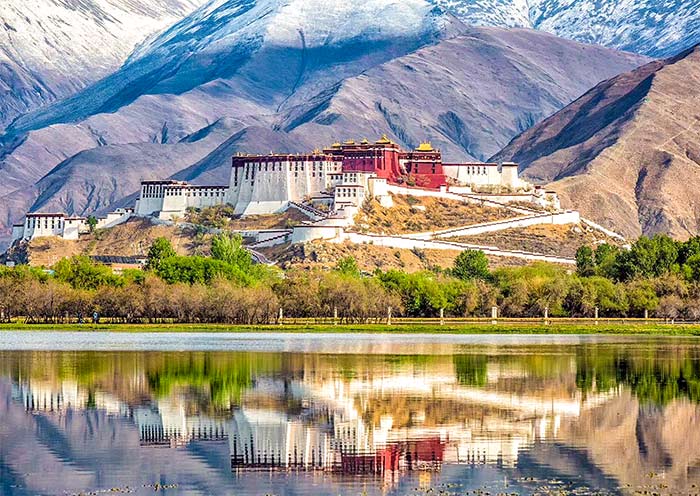
8 Days Tibet Discovery Tour from Lhasa to Mount Everest Base Camp
9 Days Panorama Tibet Tour from Lhasa to EBC with Namtso Lake
11. Mount Everest, Tibet - The Highest Point on Earth
Nestled amidst the majestic Himalayas, Mount Everest (珠峰), known as Chomolungma (珠穆朗玛) in Tibetan, beckons adventure seekers with its breathtaking beauty and imposing presence. Standing as the Earth's highest point , this snow-capped peak inspires awe and challenges climbers from around the world.
For those seeking the ultimate adventure, the trek to Everest Base Camp is an unforgettable experience. Starting from Lhasa, the journey takes you through stunning landscapes, culminating at the foot of the world's highest mountain. Witness the raw power and grandeur of the Himalayas as you trek through valleys adorned with prayer flags and gaze upon turquoise lakes reflecting the snow-capped peaks.
The north face of Mount Everest is accessible from Lhasa , offering a challenging yet rewarding trek of approximately 620 kilometers (385 miles). This popular route provides a unique perspective of the mountain and allows you to experience the rich Tibetan culture along the way.
Along the trek, you'll have the opportunity to visit Rongbuk Monastery , an ancient Tibetan haven nestled amidst the Himalayas. Explore the vibrant murals and soak in the serene atmosphere of this sacred place. This cultural immersion adds another dimension to your adventure, offering a deeper understanding of the people who call this region home.
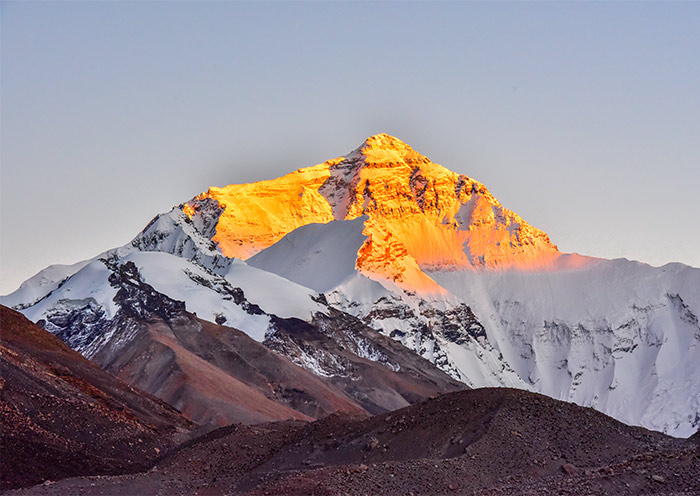
12. Longji Rice Terraces, Guilin - A Stairway to Heaven
Nestled in the breathtaking region of Guilin, the Longji Rice Terraces (龙脊梯田) are a natural wonder that enthralls visitors with their stunning beauty and cultural significance. Also known as the Dragon's Backbone Rice Terraces , these iconic terraces are a testament to human ingenuity and harmonious coexistence with nature.
Located approximately 80 kilometers from Guilin , the Longji Rice Terraces can be reached by a scenic drive through the picturesque countryside. The journey itself is an enchanting experience, with verdant mountains, cascading waterfalls, and traditional villages dotting the landscape. It is a good idea to spend 1 or 2 days there.
Best Time to Visit: Spring (March-May) and autumn (September-November) offer pleasant weather and stunning scenery, with the spring season showcasing vibrant green rice paddies and the autumn season revealing golden hues.
Once at the Longji Rice Terraces, there are several top things to do. Embark on a memorable hike through the terraced fields, marveling at the intricate irrigation system that has been in place for centuries. Visit the ethnic minority villages of Zhuang and Yao, where you can immerse yourself in their vibrant cultures, sample traditional cuisine, and witness age-old customs.
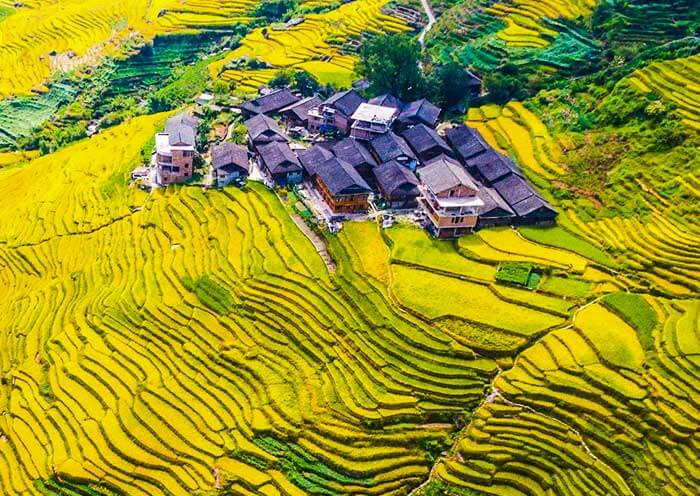
5 Days Guilin Yangshuo Longji Tour with Hiking in Longji Rice Terraces
13. Hongcun Ancient Village, Huangshan - UNESCO World Heritage in Huangshan
Journey into the picturesque Hongcun Ancient Village (宏村), nestled amidst the majestic scenery of the Huangshan Mountains. Hongcun Ancient Village offers a captivating glimpse into the past, capturing the essence of traditional Chinese architecture and rural life . This UNESCO World Heritage Site , boasting well-preserved Ming and Qing dynasty buildings, enchanting canals, and a tranquil atmosphere, guarantees an unforgettable journey through time. Located approximately 70 kilometers from Huangshan City , it serves as an idyllic escape.
Stroll along the ancient alleyways and marvel at the unique architecture characterized by white-washed walls, black-tiled roofs, and intricately carved wooden structures. Don't miss the opportunity to visit the Moon Pond , a serene reflection pool surrounded by traditional buildings. Immerse yourself in the peaceful ambiance and observe the village's daily life unfold before your eyes.
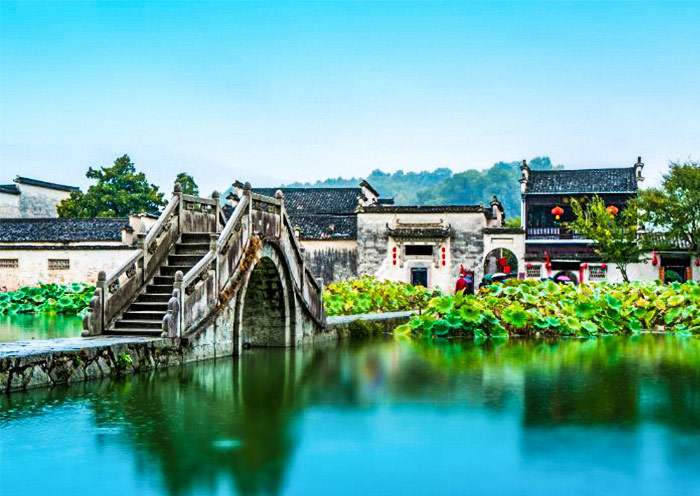
14. Victoria Peak, Hong Kong - Capture Stunning Panoramic View of HK
Ascend to the top of Victoria Peak (维多利亚山), the highest mountain on Hong Kong Island, for panoramic views of the city skyline and the surrounding Victoria Harbour . Enjoy the breathtaking vistas, capture stunning photos, and experience the vibrant atmosphere of this iconic landmark.
Spectacular Views: The primary allure of Victoria Peak lies in its unparalleled views of Hong Kong's sprawling cityscape. Witnessing the mesmerizing skyline, sparkling harbor, and surrounding mountains from the peak's vantage point is an absolute feast for the eyes.
Iconic Peak Tram: Embark on a memorable journey to the summit of Victoria Peak by riding the historic Peak Tram. This charming funicular railway, which has been in operation since 1888, offers a scenic and nostalgic experience as it ascends steep slopes, providing stunning views along the way.
Sky Terrace 428: Take in the breathtaking vistas from the Sky Terrace 428, the highest viewing platform in Hong Kong . Located atop the Peak Tower, this observation deck offers a 360-degree panoramic view and is a prime spot for capturing stunning photographs.
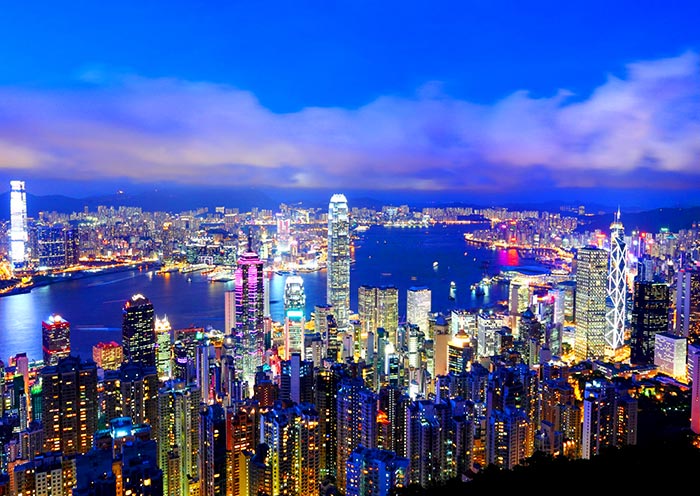
One Day Hong Kong Tour: Classic Exploration to Meet Different Hong Kong Island
2 Days in Hong Kong: Classic Tour of Hong Kong Island & Lantau Island
15. Mount Kailash, Tibet - Discover Majestic Beauty of Sacred Mountain
Mount Kailash (冈仁波齐), also known as Kang Rinpoche in Tibetan, holds great significance for various religions, including Buddhism, Hinduism, Jainism, and Bon. Mount Kailash is located in the far west of Tibet , approximately 1,600 kilometers from Lhasa , the capital city. The journey from Lhasa to Mount Kailash takes around 2-3 days by road, passing through spectacular landscapes and remote Tibetan villages.
Top Things to Do at Mount Kailash:
(1) Kora Trek: Undertake the sacred Kora trek , which involves walking around Mount Kailash. This spiritual journey typically takes three days and offers breathtaking views of the mountain, pristine lakes, and high-altitude landscapes. It is a deeply transformative experience for many pilgrims and travelers alike.
(2) Visit Lake Mansarovar: Located near Mount Kailash, Lake Mansarovar is one of the highest freshwater lakes in the world. Considered sacred in Hinduism and Buddhism, it is believed to cleanse one's sins and offer spiritual rejuvenation. Take the opportunity to visit and immerse yourself in the serene beauty of this holy lake.
(3) Explore the Surrounding Monasteries: Discover the ancient monasteries and hermitages that surround Mount Kailash. Chiu Monastery, Dirapuk Monastery, and Zuthulphuk Monastery are among the notable sites where you can witness the rich spiritual traditions of Tibet.
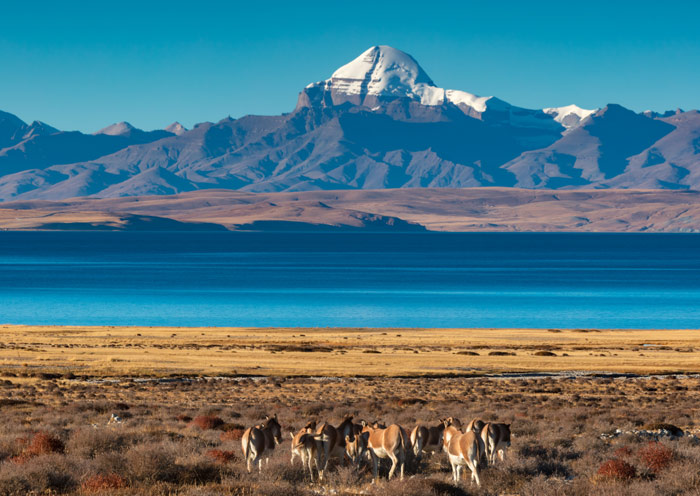
16 Days Mount Kailash Pilgrimage Tour with Lhasa Shigatse & EBC
13 Days Lhasa to Kathmandu Overland Tour via Gyirong with EBC & Mount Kailash Trek
16. Xiapu Mudflat, Fujian A Photographer's Paradise in Fujian
Nestled in the northeastern corner of Fujian Province , China, lies the captivating Xiapu Mudflat (霞浦滩涂). This breathtaking natural landscape, encompassing 40 square kilometers and boasting over 400 kilometers of coastline, has earned its reputation as one of the most stunning mudflats in the country, and a true photographer's paradise.
The most magical moments at Xiapu Mudflat occur during sunrise and sunset . As the sun peeks over the horizon, bathing the landscape in a warm glow, the mudflats come alive with a vibrant palette of colors. The reflections of the sky on the water create a mesmerizing mirrored effect, while the silhouettes of the fishing boats add a touch of human presence to the scene.
The best time to visit Xiapu Mudflat is between April and October , when the weather is warm and sunny. During this time, you can experience the full range of the tides and witness the breathtaking sunrises and sunsets. To capture the most dramatic images, be sure to plan your trip around the lunar calendar, as the tides are highest during the full and new moon phases.
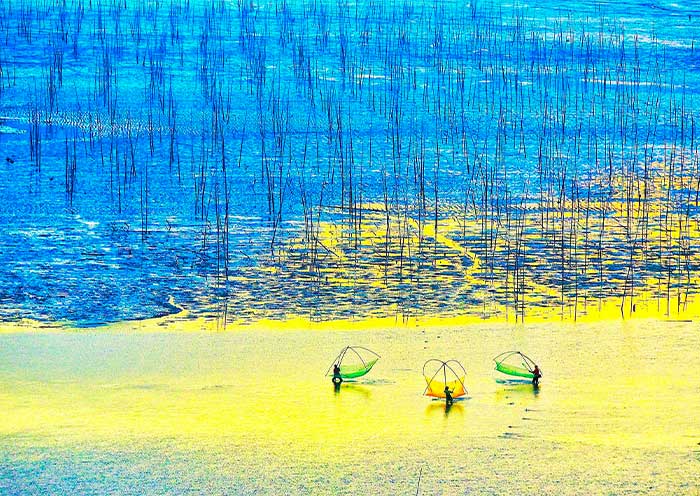
4 Days Xiapu Mudflat Photo Tour for China’s Most Beautiful Mudflat
7 Days Fujian Tour to Xiamen, Hakka Tulou & Xiapu Mudflat with Photography Experience
17. Three Gorges, Yangtze River - Take 5-star Cruise along the Longest River in China
The Yangtze River (长江), the longest river in Asia, carves a dramatic path through the heart of China, showcasing some of the most breathtaking landscapes on Earth. One of its most awe-inspiring sections is undoubtedly the Three Gorges : Qutang Gorge, Wu Gorge, and Xiling Gorge.
The most immersive way to experience the wonders of the Three Gorges is undoubtedly on a 5-star Yangtze River cruise . Various cruise options are available, ranging from luxurious ships with all the amenities to smaller, more intimate boats. You can choose from the 4-day downstream cruise from Chongqing to Yichang or 5-day upstream cruise from Yichang to Chongqing. As you sail along the river, you can enjoy breathtaking views from the deck, participate in onboard activities, and stop at various points of interest along the way. Your cruise will likely include excursions to historical sites, visits to local villages, and opportunities for hiking and wildlife viewing.
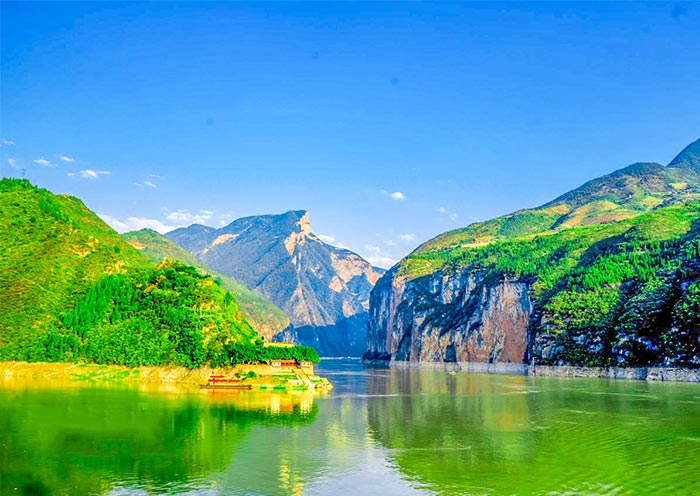
18. Daocheng Yading, Sichuan "Last Shangri-La"
Daocheng Yading (稻城亚丁), often referred to as the 'Last Shangri-La' or the 'Fairyland on Earth,' is located in the southwest of Sichuan Province . This pristine natural paradise offers a unique blend of stunning landscapes, vibrant Tibetan culture, and unparalleled tranquility. Daocheng Yading is a treasure trove of natural wonders, encompassing snow-capped mountains, pristine lakes, lush valleys, and vibrant meadows. As you explore this captivating landscape, you'll be in awe of the towering peaks, including the iconic Chenrezig Mountain, resembling a reclining Buddha, and the majestic Xiannairi Mountain, with its awe-inspiring pyramid-like shape.
The best time to visit Daocheng Yading is from May to October when the weather is pleasant, and the landscapes are at their most vibrant. However, be aware that the region experiences high altitude, so it's important to acclimatize properly before embarking on strenuous activities.
To get to Daocheng Yading, you can fly to Chengdu , the capital of Sichuan Province, and then take a bus or private car to the region. Alternatively, you can take a direct flight to Daocheng Yading Airport , located near the town. You are recommended to go with Asia Odyssey Travel with private service to explore Daocheng Yading.
19. Mount Siguniang, Sichuan - "Oriental Alps" of Sichuan
Nestled amidst the majestic peaks of the Qionglai Mountains in Sichuan Province , lies Mount Siguniang (四姑娘山), also known as the 'Four Girls Mountain.' This breathtaking natural wonder, with its towering summits, pristine valleys, and diverse flora and fauna, offers a unique blend of adventure, natural beauty, and cultural immersion. The four peaks - Yaomei, Erfeng, Sanfeng, and Dafeng - resemble four graceful women, standing tall against the backdrop of the azure sky, creating a truly captivating spectacle. While it is difficult to climb the Four Girls Mountains, it is recommended to hike through its three valleys - Shuangqiao Valley, Changping Valley, and Haizi Valley - to enjoy the mountain views. Chengdu serves as the gateway to Mount Siguniang, with just a 4-5 hour drive to reach the mountain area.
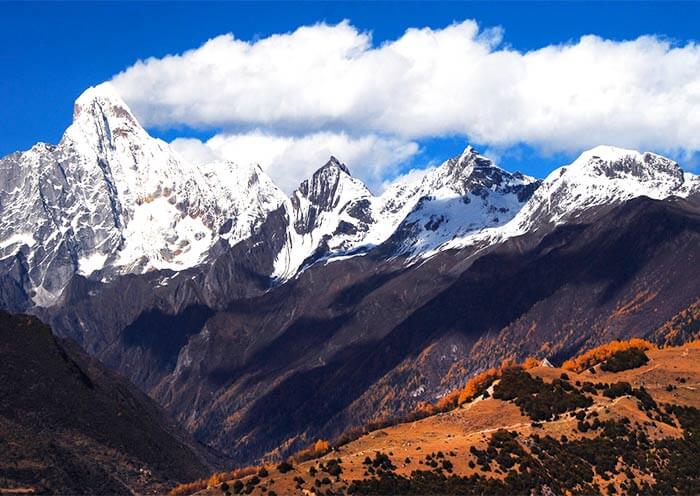
3 Days Amazing Mount Siguniang Hiking Tour from Chengdu
5 Days Best Chengdu & Mount Siguniang Leisure Hiking Tour
20. West Lake, Hangzhou - A Journey Through Hangzhou's Heart and Soul
West Lake (西湖), nestled in the heart of Hangzhou , Zhejiang , is an iconic natural landmark that has captivated hearts and inspired artists for centuries. This UNESCO World Heritage Site is not just a picturesque lake, but a symbol of cultural heritage and breathtaking beauty.
West Lake is not just a visual feast; it's a playground for relaxation and recreation. Cruise across the lake on a traditional boat, enjoying the gentle breeze and the tranquil scenery. Hike the scenic trails surrounding the lake, breathing in the fresh air and soaking in the breathtaking views.
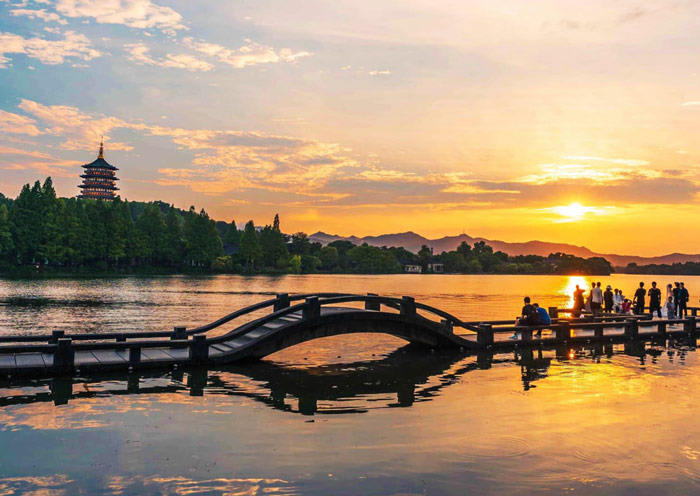
1 Day Paradise Hangzhou Cultural Tour from Shanghai by High Speed Train
5 Days Shanghai Suzhou Hangzhou Tour: Experience Heavenly Charm by Bullet Train
21. Classical Gardens of Suzhou, Jiangsu
With a history spanning over 2,500 years, the Classical Gardens of Suzhou (苏州园林) are a testament to the deep reverence for nature and the seamless integration of it into living spaces by the Chinese people. These gardens were not merely decorative spaces; they were intended to be microcosms of the natural world, offering havens for contemplation, relaxation, and artistic expression.
Step into a world of serenity and refinement at the Classical Gardens of Suzhou , a UNESCO World Heritage site . Explore the Humble Administrator's Garden, Lingering Garden, Net Master's Garden, Canglang Pavilion, Lion Grove Garden, Garden of Cultivation , and others in Suzhou . Stroll through these meticulously designed gardens, adorned with pavilions, bridges, ponds, and rock formations, and immerse yourself in the tranquility of traditional Chinese landscaping.
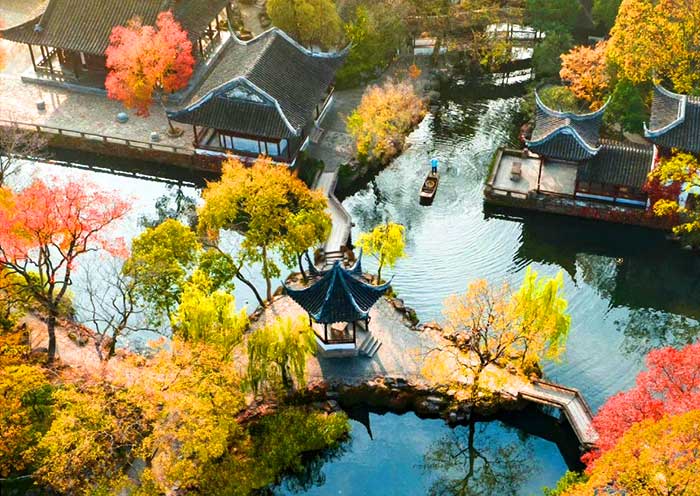
Suzhou Day Trip from Shanghai by High Speed Train
22. Fujian Tulou - Earthen Wonders in Fujian Province
Tucked away in the rolling hills of Fujian Province , lies a unique and captivating collection of earthen structures known as the Fujian Tulou (福建土楼). These remarkable buildings, constructed between the 12th and 20th centuries, stand as a testament to the ingenuity and craftsmanship of the Hakka people who built them. Recognized for their exceptional cultural and historical significance, the Fujian Tulou were inscribed as a UNESCO World Heritage Site in 2008. These breathtaking structures are not simply houses; they are living museums, offering a glimpse into the lives and customs of the Hakka people, who migrated to the region centuries ago in search of refuge from conflict and persecution.
The Fujian Tulou are mainly located in Yongding and Nanjing counties . To reach the Fujian Tulou, you can fly into Xiamen, the nearest major city, and then take a bus or train to the Tulou-rich areas such as Yongding or Nanjing counties. Learn about How to Get to Fujian Tulou from Xiamen >>
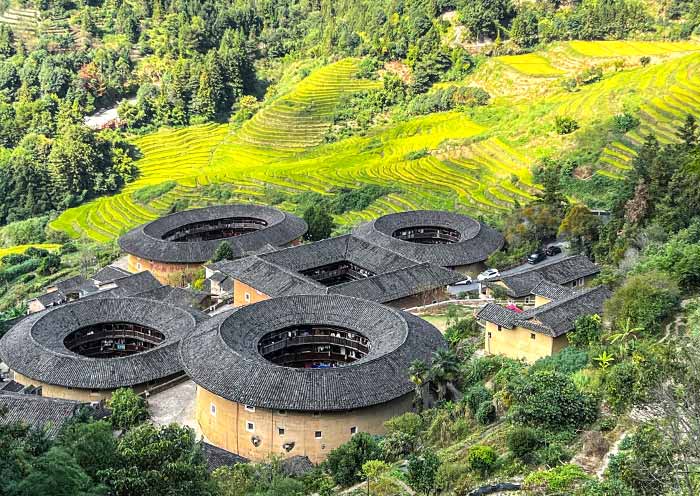
1 Day Nanjing Tulou Tour: From Xiamen to the Hometown of Mulan - Fujian Tulou
23. Echoing Sand Mountain and Crescent Lake, Dunhuang - A Desert Dream
Nestled in the heart of the Gobi Desert, just outside the ancient Silk Road oasis town of Dunhuang , lies a breathtaking natural wonder known as Echoing Sand Mountain and Crescent Lake (鸣沙山和月牙泉). This captivating landscape, a mesmerizing blend of towering sand dunes and a serene crescent-shaped lake, is a must-visit destination for any traveler seeking a unique and unforgettable adventure.
Top Things to Do at Echoing Sand Mountain and In Dunhuang:
- Camel Rides:Embark on a thrilling camel ride across the sand dunes, experiencing the traditional mode of transportation used by Silk Road traders for centuries.
- Sandboarding:Feel the adrenaline rush as you sandboard down the steep slopes of the dunes.
- Mogao Caves:Visit the nearby Mogao Caves, a UNESCO World Heritage Site , and marvel at the ancient Buddhist art and sculptures.
- Dunhuang Night Market:Immerse yourself in the vibrant atmosphere of the Dunhuang Night Market, indulging in local delicacies and browsing through an array of souvenirs.
24. Kaiping Diaolou, Guangdong - A Fusion of Styles
Nestled amidst the verdant countryside of Guangdong Province in China lies a unique architectural marvel: the Kaiping Diaolou (开平碉楼). These multi-storied fortified towers, standing as proud sentinels against the backdrop of rolling hills and lush rice paddies, offer a glimpse into the fascinating history and cultural heritage of the region. You can transfer to Kaiping Diaolou from Guangzhou, the capital of Guangdong.
Top Things to Do at Kaiping Diaolou:
- Explore the various diaolou clusters, each with its own unique architectural features.
- Visit the Zili Village, home to the largest and most concentrated collection of diaolou.
- Learn about the history and cultural significance of the diaolou at the Kaiping Museum.
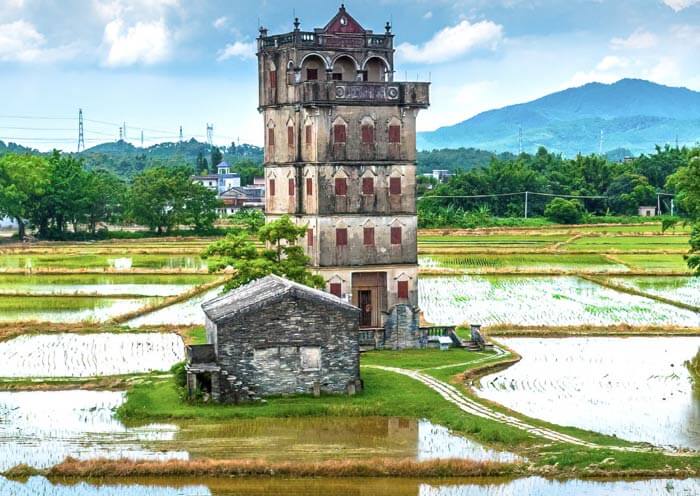
3 Days Guangzhou Kaiping Diaolou & Foshan Tour with Lingnan Culture
6 Days Guangdong Tour to Guangzhou, Foshan, Kaiping Diaolou & Shenzhen
25. Huangguoshu Waterfall, Guizhou - Unveiling the Majestic Power of Nature
Huangguoshu Waterfall (黄果树瀑布), nestled amidst the picturesque landscapes of Guizhou province, stands as a testament to nature's awe-inspiring grandeur. With its cascading waters plunging over 77 meters and spanning a width of 101 meters, Huangguoshu is not only one of the largest waterfalls in Asia but also a captivating destination for travelers seeking adventure and natural beauty.
Distance from Guiyang: Guiyang, the capital of Guizhou province, is the nearest major city to Huangguoshu Waterfall, located approximately 128 kilometers away.
Top Things to Do at Huangguoshu Waterfall
- Witness the awe-inspiring power of the main waterfall from the Rain Shower Pavilion.
- Capture panoramic views of the waterfall and surrounding landscape from the Flower Shower Platform.
- Embark on a hike through the lush forests of the park, exploring hidden waterfalls and scenic viewpoints.
- Take a boat ride on the Baishui River, enjoying the tranquil waters and serene surroundings.
- Visit the Huangguoshu Waterfalls Museum to delve into the history and cultural significance of the waterfall.
26. Yalong Bay, Sanya - Paradise Found in Hainan
Nestled on the southernmost tip of China's Hainan Island lies a haven of pristine beauty and luxurious comfort: Yalong Bay (亚龙湾). This horseshoe-shaped bay, often referred to as the "Hawaii of the East", boasts breathtaking beaches, crystal-clear waters, lush tropical landscapes, and world-class resorts, making it a dream destination for travelers seeking relaxation, adventure, and a touch of paradise.
Yalong Bay boasts a stunning 7.5-kilometer stretch of pristine beach , known for its soft, white sand and crystal-clear waters. Whether you're seeking sunbathing bliss, indulging in water sports like snorkeling and diving, or simply strolling along the shore, Yalong Bay offers the perfect setting for beachside relaxation.
27. China Snow Town, Heilongjiang - A Winter Wonderland for Snow Fun
Deep in the heart of Heilongjiang Province, lies a winter wonderland known as China Snow Town (中国雪乡, also known as Shuangfeng Forest Farm or Xuexiang). This charming village, nestled amidst snow-capped mountains and pristine forests, transforms into a magical landscape during the winter months, attracting visitors from all over the world with its breathtaking scenery and unique cultural experiences.
From December to March , China Snow Town is blanketed in a thick layer of snow, turning houses, trees, and even the landscape into whimsical sculptures. The air is crisp and invigorating, the silence broken only by the crackling of snow underfoot and the occasional burst of laughter from children playing in the streets.
To get to China Snow Town, you can fly into Harbin Taiping International Airport and then take a train or bus to Mudanjiang City. From Mudanjiang, you can take a taxi or shuttle to the village. You are recommended to take private service with Asia Odyssey Travel.
28. Shennongjia, Hubei - Explore Wild Heart of China
Nestled in the northwestern corner of Hubei Province, lies Shennongjia (神农架). This UNESCO World Heritage Site is a land of breathtaking beauty and captivating mystery. Renowned for its pristine forests, diverse wildlife, and rich cultural heritage, Shennongjia offers an unforgettable adventure for travelers seeking to escape the ordinary and immerse themselves in nature's splendor.
Shennongjia is home to some of the largest and most well-preserved primary forests in central China . These ancient woodlands, shrouded in mist and teeming with life, offer a glimpse into a world untouched by time. Hike through towering redwoods, marvel at cascading waterfalls, and breathe in the fresh, clean air that fills your lungs and invigorates your soul. To get to Shennongjia, you can fly into Wudangshan Airport or Yichang Sanxia Airport , which are located nearby. From there, you can take a bus or taxi to your destination within Shennongjia.
29. Fenghuang Ancient Town - Enchanting Town in Hunan
Nestled amidst the rolling hills and picturesque landscapes of Hunan Province, lies the captivating town of Fenghuang (凤凰古城), also known as Phoenix Ancient Town. This enchanting destination, with its rich history, unique architecture, and vibrant culture, offers an unforgettable experience for travelers seeking a glimpse into the heart of traditional China. Fenghuang boasts a history spanning over 1,300 years, reflected in its well-preserved ancient buildings and narrow, winding streets. Stroll along the Tuojiang River, admiring the colorful wooden houses adorned with intricate carvings and red lanterns, and feel transported back in time.
To get to Fenghuang, you can fly into Changsha Huanghua International Airport or Zhangjiajie Hehua International Airport and then take a train or bus to the town.
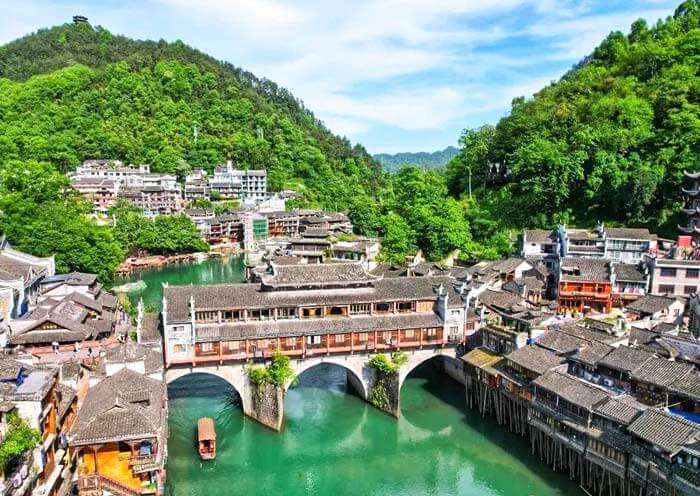
5 Days Panorama Zhangjiajie Tour with Fenghuang Ancient Town
30. Singing Sand Bay, Inner Mongolia - A Symphony of Sand and Sound
Deep in the heart of Inner Mongolia, nestled within the vast Gobi Desert, lies a natural phenomenon unlike any other: Singing Sand Bay (响沙湾). This mesmerizing landscape, where sand dunes rise like towering waves and the very earth sings underfoot, offers an unforgettable experience for travelers seeking adventure and a touch of sonic wonder.
To get to Singing Sand Bay, you can fly into Baotou Airport, which has connections to major cities in China. Alternatively, you can take a train or bus from nearby cities like Ordos or Hohhot.
31. Wuyuan, Jiangxi A Canvas of Scenic Splendor
Situated within the heart of Jiangxi Province, lies the captivating landscape of Wuyuan (婺源), a region renowned for its breathtaking scenery, rich cultural heritage, and historical charm. This hidden gem, often referred to as the "Most Beautiful Countryside in China," promises an unforgettable experience for travelers seeking a glimpse into traditional Chinese culture amidst breathtaking natural landscapes.
Wuyuan's beauty is a result of its diverse landscapes, encompassing rolling hills, lush valleys, and captivating rivers. Wander through the picturesque villages, adorned with traditional Hui-style architecture, featuring whitewashed walls, black-tiled roofs, and intricate carvings. Immerse yourself in the vibrant green rice paddies that stretch as far as the eye can see, creating a mesmerizing tapestry of colors.
32. Changbai Mountain & Heaven Lake - The Roof of Northeast China
Towering over the Jilin Province in Northeast China lies the majestic Changbai Mountain (长白山), a mesmerizing volcanic landscape cloaked in mystery and awe. This sacred peak, shared by both China and North Korea, offers a unique blend of natural wonders, historical significance, and cultural richness, making it a must-visit destination for any adventurous traveler.
The undisputed highlight of Changbai Mountain is the breathtaking Heaven Lake (天池), a crater lake nestled at the peak's summit. This stunning glacial lake, considered the deepest in China and the highest volcanic lake in the world, is a sight to behold. Its crystal-clear waters reflect the surrounding snow-capped peaks, creating a picture-perfect panorama.
To reach Changbai Mountain, you can fly into Changbaishan Airport, located nearby. Alternatively, you can take a train or bus from major cities in Jilin Province like Changchun and Jilin City.
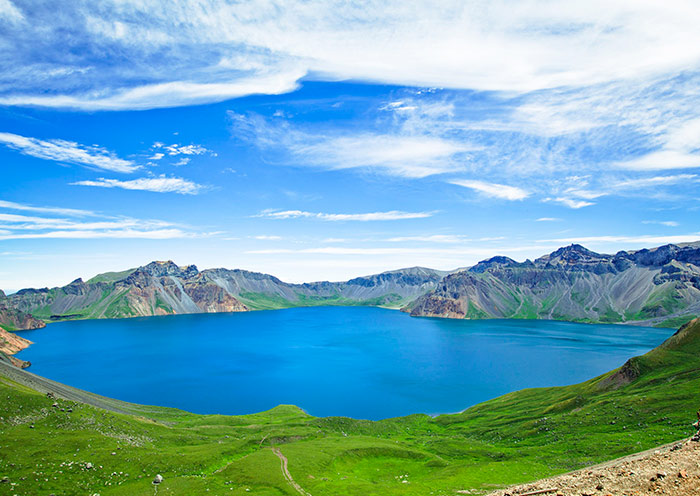
33. Qinghai Lake - Embrace the Azure Jewel in Qinghai
In the heart of the Tibetan Plateau, nestled amidst towering mountains and vast grasslands, lies Qinghai Lake (青海湖), China's largest and highest inland lake. This majestic body of water, often referred to as "the blue sea" , is a mesmerizing spectacle of natural beauty and a haven for wildlife and cultural heritage.
To reach Qinghai Lake, you can fly into Xining Caojiabao International Airport, which provides connections to major cities in China. Alternatively, you can take a train or bus from major cities like Lanzhou and Chengdu.
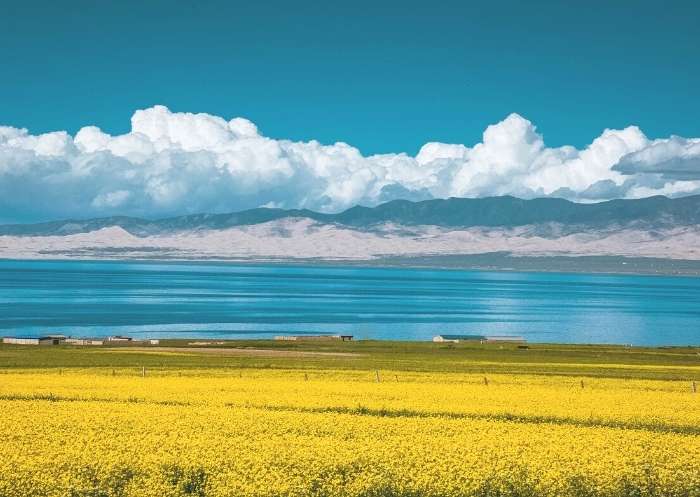
13 Days Shanghai & Xining Tibet Train Tour with Qinghai Lake
8 Days Tibet Train Tour from Beijing | Beijing Xining Lhasa
34. Xian Ancient City Wall - A Walk through Time in Xian
Standing tall amidst the modern cityscape of Xian , the Xian Ancient City Wall (西安古城墙) whispers tales of a bygone era. This UNESCO World Heritage Site , one of the most complete and best-preserved ancient city walls in China , offers a unique opportunity to step back in time and experience the grandeur of the Ming Dynasty.
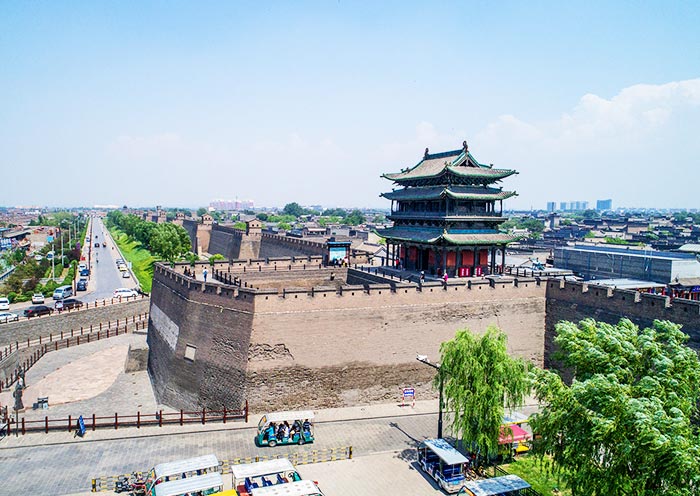
35. Hukou Waterfall, Shanxi - Witness the Power of Nature
Hukou Waterfall (壶口瀑布), nestled amidst the majestic Yellow River Valley in Shanxi Province, China, is a spectacle that leaves every visitor awestruck. This powerful cascade, known as the "Flask Mouth Waterfall" due to its unique shape, is a testament to the raw beauty and untamed energy of nature. To reach Hukou Waterfall, you can fly into Taiyuan Wusu International Airport or Xi'an Xianyang International Airport, which are located nearby. From there, you can take a train or bus to Hukou Town.
36. Yungang Grottoes, Shanxi A Gallery of Divine Sculptures
Nestled amidst the sun-baked cliffs of the Wuzhou Mountain, just outside Datong City in China's Shanxi Province, lies a treasure trove of ancient art and history - the Yungang Grottoes (云冈石窟). This UNESCO World Heritage Site , carved into the sandstone cliffs over 1,500 years ago, houses over 250 caves filled with a dazzling array of Buddhist sculptures, murals, and inscriptions.
Stepping into the Yungang Grottoes is like stepping back in time. The cool air of the caves, the soft glow of the lanterns, and the sheer scale of the sculptures create an atmosphere of awe and reverence. Each cave tells a story, depicting scenes from the life of Buddha, Buddhist deities and bodhisattvas, and intricate geometric patterns and floral motifs.
37. Nalati Grassland, Xinjiang Vastness of the Heavenly Mountains
Nestled amidst the snow-capped peaks of the Tian Shan Mountains in Xinjiang, China, lies a breathtaking haven - the Nalati Grassland (那拉提草原). This subalpine meadow, known as the "Pearl of the Northern Xinjiang" and one of the four largest grasslands in the world, offers a unique blend of natural beauty, nomadic culture, and vibrant festivals, making it an unforgettable destination for any traveler seeking an escape to a truly idyllic setting.
To reach Nalati Grassland, you can fly into Urumqi Diwopu International Airport and then take a taxi or bus to the site. Alternatively, you can take a train from nearby cities like Yining or Kuitun.
38. Dali Three Pagodas, Yunnan The Symbol of Dali
Nestled amidst the picturesque landscapes of Dali, Yunnan Province, China, stands a trio of architectural wonders known as the Three Pagodas. Rising majestically from the heart of the Chongsheng Temple grounds, these ancient structures have been captivating visitors for centuries, serving as silent witnesses to the region's rich history and cultural heritage.
39. Pudacuo National Park, Yunnan - Unveil Shangri-La’s Hidden Gem
Nestled amidst the majestic mountains and valleys of Shangri-La, Yunnan Province, lies Pudacuo National Park, a hidden treasure waiting to be discovered. This expansive park, encompassing 1,300 square kilometers of breathtaking natural beauty, offers a unique blend of pristine lakes, lush forests, diverse wildlife, and awe-inspiring landscapes, making it a must-visit destination for any nature enthusiast.
40. Lugu Lake, Sichuan & Yunnan - Mystical Landscape & Mosuo Culture
Nestled amidst the breathtaking beauty of the Yunnan-Sichuan border, lies Lugu Lake, a jewel-toned oasis reflecting the azure sky. This serene alpine lake, shared by the provinces of Yunnan and Sichuan , enchants visitors with its spectacular scenery, unique Mosuo culture, and captivating legends, making it a truly unforgettable destination.
To reach Lugu Lake, you can fly into Lijiang Airport or Kunming Changshui International Airport, and then take a bus or taxi to the lake. Alternatively, you can take a train from major cities like Chengdu and Kunming.
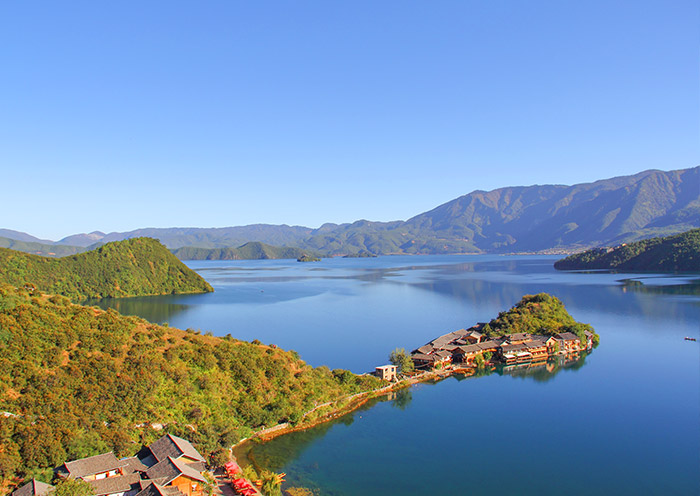
How to Plan China Tours with Most Beautiful Places in China?
Trying to learn more about China? Find out more with Top China Attractions , How to Plan a China Tour , 40 Most Beautiful Places , Best Time to Visit China .
Or you can just pick your tour right below here. Everything has been planned out for you. Travel with AOT, care-free, unique travel experience Guaranteed!
4 Days @Beiing: Ideal to Cover Forbidden City, Great Wall and other Attractions in China, Beijing - 4 Days Beijing Group Tour >>
8 Days @ Beijing, Xi'an, Shanghai: Let's spend more time and do it in one go with Top China Attractions - 8 Days Bejing Xian Shanghai Group Tour >>
9 Days For Culture Explorer: Let's visit traditional Suzhou Gardens and the Metroplis of Shanghai which are the Top Places located in same area of China - 9 Days Shanghai Suzhou Hangzhou Huangshan Tour >>
10 For Nature Lovers and Panda Fans: Have fun at Panda Base and Explore Jiuzhaigou's Nature - 10 Days Chengdu Jiuzhaigou Zhangjiajie Tour >>
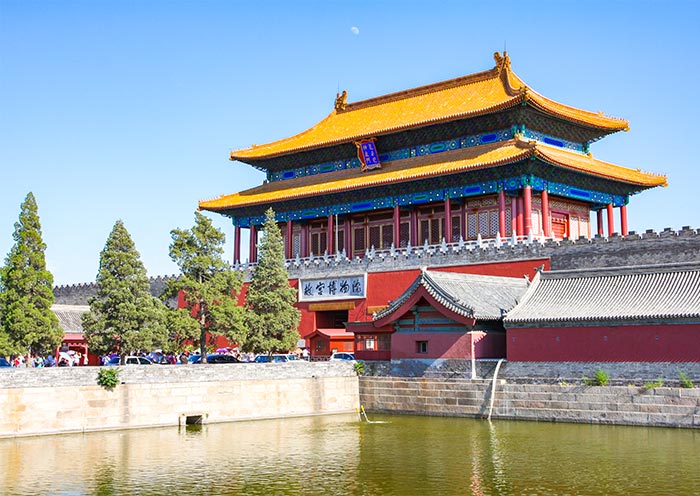
11 Days @ Beijing, Shanghai, Xi'an & Huangshan Mountain: A more inclusive itinerary, with added Top Places with Natural Beauty - 11 Days Shanghai Huangshan Xian Beijing >>
11 Days For Grand Natural Wonders: Mountains, Rivers, All the Gorgeous Landscapes in China - 11 Days Jiuzhaigou Yangtze Zhangjiajie Tour >>
3 Days Add-on with Li River: Li River, Yangshuo are not to be missed - 3 Days Guilin Yangshuo Ultimate Landscape Tour >>
14 Days @ Beijing, Xi'an, SHanghai, Guilin, Hong kong: Wonderful China Tour with Golden Triangle Cities & More - 14 Days China Group Tour >>
14 Days @ Tibet, Beijing, Shanghai, Xi'an & Mount Everest: How could you miss Tibet(Xizang) and Mount Everest when visiting China? - 14 Days China Group Tour >>
17 Days @ Beijing, Xi'an, Chengdu, Lhasa, Shanghai & More: China Highlights Tour with Holy Tibet Discovery & Chengdu Pandas - 17 Days China Tour >>
Explore China from Whole New Perspectives with AOT
Asia Odyssey Travel is your gateway to China . We're headquartered in China, with local teams in major cities. Our mission? To provide the best service and authentic travel experiences for explorers like you.
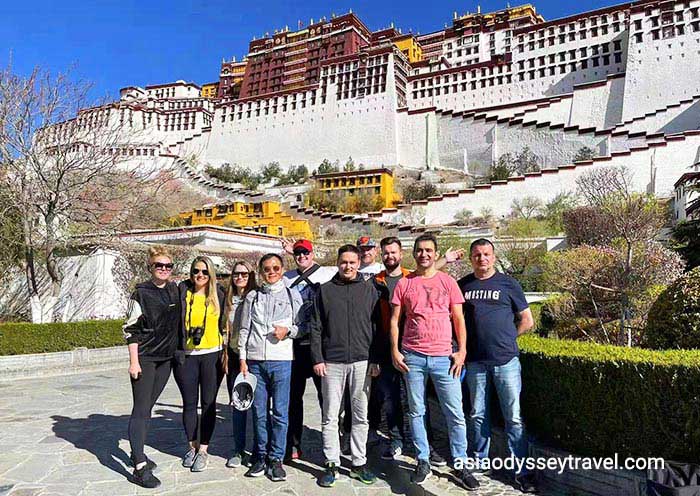
AOT offers a range of Tailor-Made Trips , City Trips , Nature Tours , Bike Tours , Trekking Tours , Family Tours , and Lhasa Luxury Tours with professional local team and on-spot service all the way. We cover all the top places in China, including Beijing , Shanghai , Tibet , Hong Kong , etc..
Explore China from whole new perspectives with Asia Odyssey Travel . Brace yourself for the ultimate holiday adventure. Ready to start your Grand China Tour? Contact us now!
If you have any questions about this article, please contact us by submitting the following form and we'll immediately get back to you.
Ask Us for More Information
Recommended Related Trips
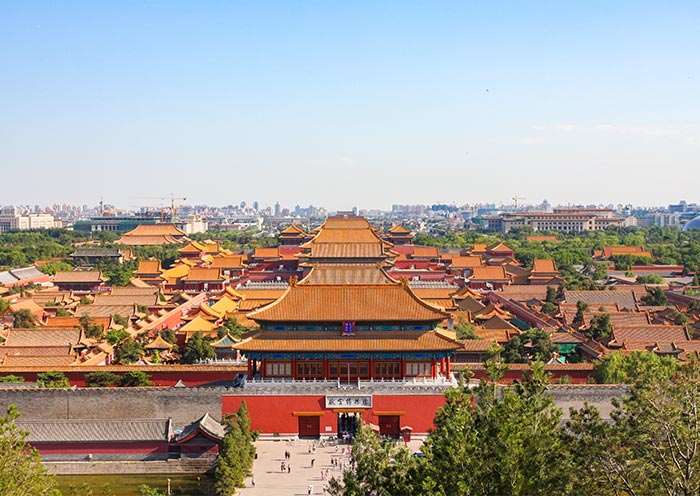

15 Best Places to Visit in China
Written by Bryan Dearsley Updated Mar 9, 2021
While many of the country's most important attractions are in and around the largest cities, some of the smaller towns and cities offer their own tourist treasures and are among the most beautiful places to visit in China. Thanks to China's rapidly expanding economy, its infrastructure has grown at an astounding rate, and it is now relatively easy to embark on some serious city hopping.
From the transportation hubs of Shanghai and Beijing, the arrival point for most tourists, it's possible to visit other important cities, such as historic Xi'an, famous for its Terracotta Army, or even venture out into the magnificent countryside surrounding its many large metropolitan areas.
However you choose to travel, these top tourist towns and cities are well worth taking the time to explore. Plan your trip with our list of the best places to visit in China.
1. Beijing: Home of the Imperial Palace and Forbidden City
2. historic xi'an: the terracotta army and more, 3. hong kong, 4. guilin and yangshuo, 5. shanghai, 7. ningbo and the tianyi ge library, 8. hangzhou and the historic grand canal, 9. qufu and confucius, 10. the city of ceramics: zibo, 11. quanzhou, 12. yangzhou, 13. foshan's famous buddhas, 14. dunhuang and jiayuguan, 15. the gardens of wuhan.
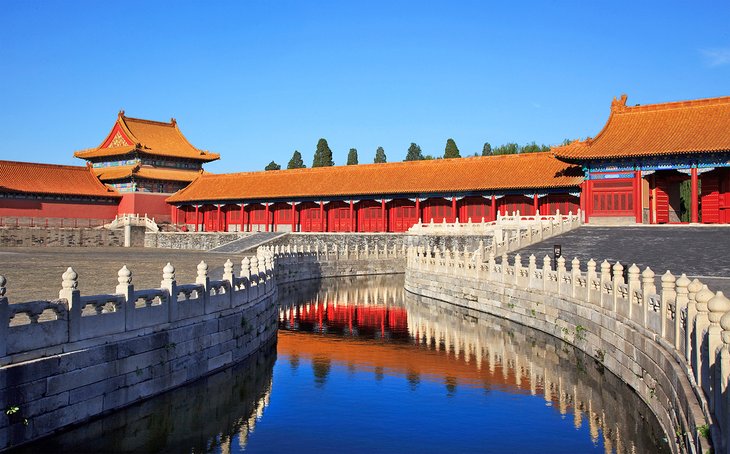
China's second biggest city, Beijing has been the country's political center for more than 800 years. And for almost as long it has been an important center for cultural, economic, scientific, and academic life.
Beijing is home to many of China's best-known attractions , including the spectacular Imperial Palace , also known as the Forbidden City . Many of the city's top tourist attractions are in its well-preserved historic city center, making it possible to visit most of them on foot as part of an organized tour. Of these, highlights include the magnificent Temple of Heaven (Tiāntán) , Tian'anmen Square (the world's largest public square), and the beautiful Beihai Park . You should also include the fascinating Beijing Ancient Observatory . Built in 1442, it was still in use in the early 20th century.
A newer attraction that's worth a visit is the wonderfully designed Beijing National Stadium (Guójiā Tǐyùchǎng). Also known as the "Bird's Nest," this unique structure was built for the 2008 Olympics, and in addition to guided tours, you can visit the stadium during concerts and sporting events. Beijing is also a great place from which to explore the surrounding area and attractions, such as the Great Wall of China .
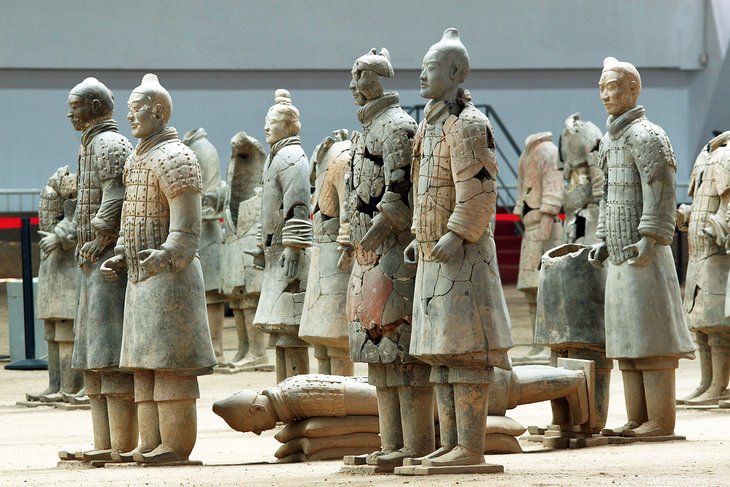
The bustling city of Xi'an, situated between the Weihe River in the north and the Qinling Mountains in the south, is one of Northwest China's chief textile centers. It also possesses more items of archaeological interest than perhaps any other city of its size in China. The most important and best known of these tourist attractions is the world-famous Terracotta Army, which can be enjoyed with a tour to the impressive Emperor Qinshihuang's Mausoleum Site Museum.
Xi'an's history stretches back some 6,000 years, and by the 3rd century BC it boasted one of the highest urban populations in the country. The remains of the Han imperial residence can still be seen, along with fortifications and other evidence of the city's importance as the starting point of the famous Silk Road . From here, this fabled route wound its way through Central Asia and the Middle East as far as the Mediterranean, linking Xi'an with such far away cities as Istanbul and even Venice.
Among Xi'an's other important historic sites are the 64-meter-tall Pagoda of the Great Wild Goose , a survivor of the Tang Dynasty from AD 618 to 907, and the 43-meter-high Pagoda of the Small Wild Goose , built in AD 684 in honor of the Tang Emperor Gaozong. Another must-see is the Historical Museum of Shaanxi Province , China's most important archaeological museum, illustrating the origins and achievements of Chinese culture from prehistory to the Qing period of 1368 to 1911
Other points of interest include the Town Walls , completed in 1398 with four gates and numerous watchtowers, and the city's 15th-century mosque. This impressive structure features five courtyards and traditional Chinese buildings decorated with Islamic patterns.
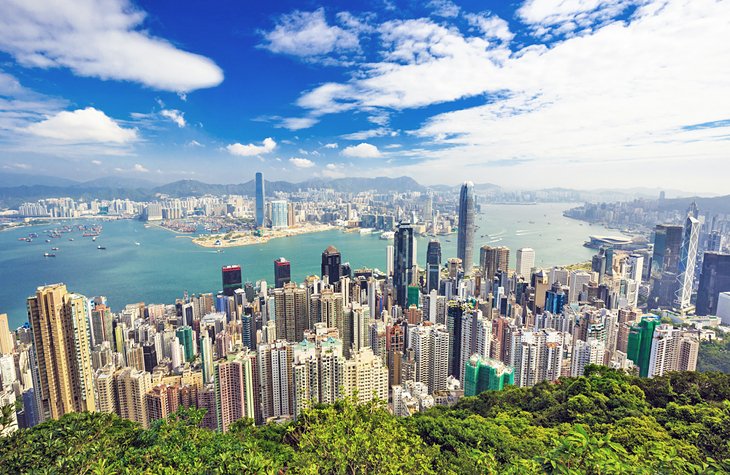
Hong Kong is, quite rightly, regarded as one of the world's most dynamic and exciting cities. While much of this can be attributed to its colonial past, it really owes its uniqueness to its rich mix of old and new China.
Famous as a high-tech center of banking and commerce, its modern luxury hotels and shops rub shoulders with many examples of an older, traditional way of life. This is seen everywhere, from its many authentic family-run restaurants to its ancient temples and fascinating street markets.
However long you're planning to visit, there are some Hong Kong attractions and fun points of interest that you simply must experience here. A highlight for many is hopping aboard the famed Star Ferry service and heading out from Victoria Harbour to the mainland and back - it's a great and affordable way to get your bearings and take in the city's impressive skyline.
Other must-dos include taking the funicular railway to the top of Victoria Peak , which provides another great vista, this time over the island and its many hills; and spending an evening exploring the busting Temple Street Night Market, one of the best street markets in Hong Kong .
Also, consider heading out on one of the hiking trails for great views and unique experiences, or spending a day on one of Hong Kong's glorious beaches .
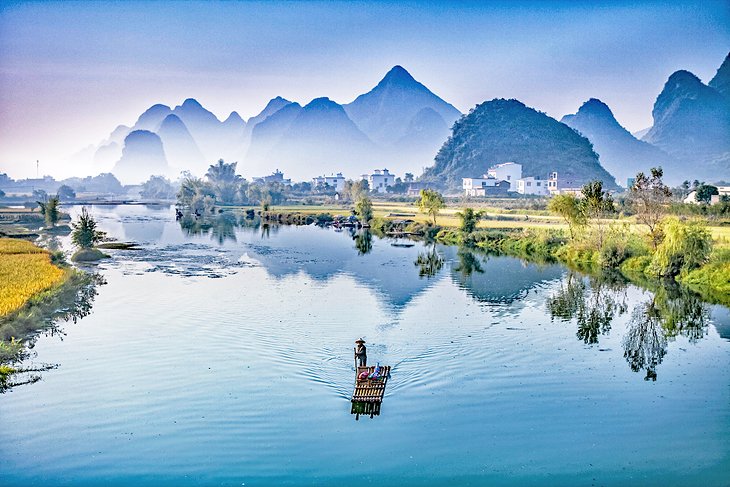
No trip to China is complete without spending at least a little time enjoying a river cruise. One of the most popular options - and one that's perhaps best left to a professional tour company to organize on your behalf - is a cruise along the majestic Li River , which connects the two important cities of Guilin and Yangshuo.
This 83-kilometer journey whisks you past spectacular scenery, as well as small Chinese villages, which offer a glimpse into the country's rich culture and traditions. It's a one-way, five-hour journey that begins upriver at Guilin, which boasts an airport and railway connections to destinations including Hong Kong, and ends in Yangshuo. Be sure to plan on spending time afterwards exploring the many historic sites in the latter.
Many tourists in fact spend at least a few days exploring Yangshuo and the surrounding area. It's certainly time well spent, and offers a variety of unique adventures and experiences not available elsewhere. Of these, perhaps the most popular is taking one of the fun, two-person, people-powered bamboo rafts along the quiet Yulong River.
Other must-dos in Yangshuo include making the trek up Moon Hill for its superb view, or renting a bike to explore the paths and trails along the Yulong. Be sure to take in the spectacular Liu San Jie Impression Light Show. Designed by the same team that provided the choreography for the 2008 Beijing Olympics, it's a fitting finale to your Yangshuo adventure.
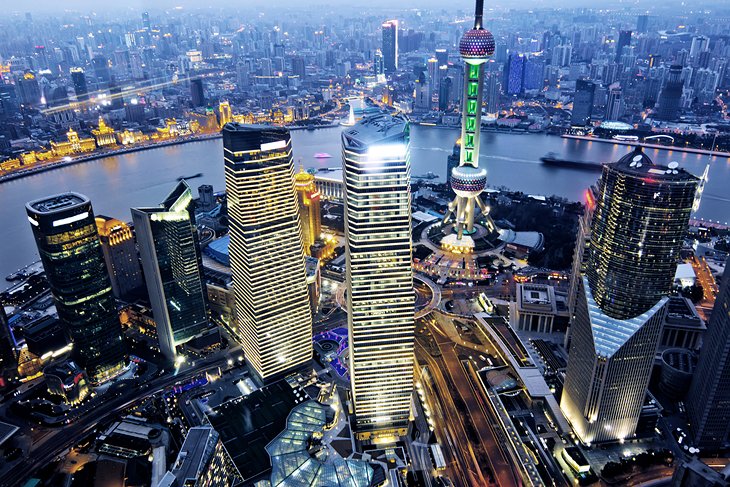
The largest city in China, Shanghai is famous for being the country's most modern metropolis and offers a diversity of tourist attractions old and new . Boasting in excess of 24 million citizens, the city's highlights include numerous world-class museums and art galleries, ranging from the excellent Shanghai Museum to the China Art Museum . There are also a surprising number of quiet green spaces, old temples, and pagodas to explore - not to mention some great shopping experiences, too.
Must-see points of interest include Shanghai's broad promenade, the Bund . This lovely pedestrian walkway runs along the west bank of the Huangpujiang River and is popular for its very distinctive European architecture. It's an especially beautiful sight at night. Also notable here is the beautiful Yu Garden (the Garden of Happiness), with its many fine old buildings.
Other things to do in Shanghai include spending time exploring its more modern attractions, such as the 468-meter-tall Oriental Pearl Radio and TV Tower with its excellent views over the river and city. Be sure to include the fun Shanghai Science and Technology Museum , one of the country's most visited science museums, on your itinerary, along with Shanghai Disney .
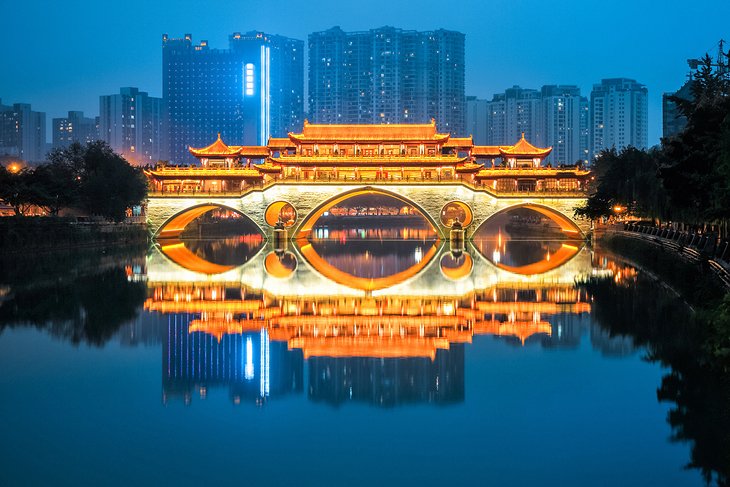
If, when you think of China, you think of pandas, you'll want to make sure the city of Chengdu is high on your list of must-sees. It's here you'll find the Chengdu Research Base of Giant Panda Breeding , a massive facility that is home to more than 80 of these wonderful animals.
Tours of the facility include a chance to see pandas up close. If you can, try to time your visit to coincide with feeding time. Also worth seeing, the on-site museum features exhibits detailing everything you'll ever want to know about the challenges of conserving these notoriously placid creatures.
For a chance to see pandas in the wild, take a day trip to the Wolong Nature Reserve , two hours west of Chengdu. This vast scenic area serves to protect the natural habitat of pandas and other important species.
Other Chengdu attractions worth seeing include numerous old pagodas and bridges, along with the many historic alleys in the old part of the city. There are also many religious sites here, too, such as the Monastery of Precious Light and Chengdu Huangcheng Mosque , one of China's oldest and most important Muslim sites.
- Read More: Top Tourist Attractions in Chengdu & Easy Day Trips
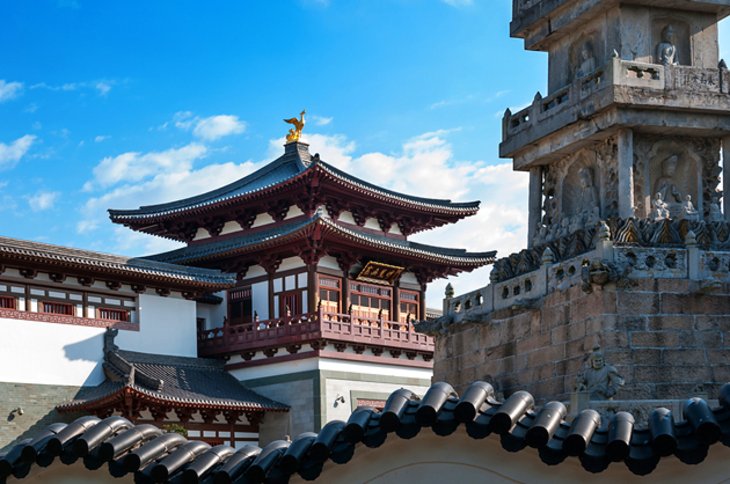
Ningbo, located in the northeast corner of the province of Zhejiang just 25 kilometers from the East China Sea, has been one of the country's most important ports since the 7th century. Crisscrossed by countless navigable canals, this busy city is dubbed "Little Shanghai" and can trace its history back some 2,300 years to the period of the Qin Dynasty.
It's best known attractions include such historic sites as the magnificent Tianyi Ge Library . Built by high-ranking official Fan Qing between 1561 and 1566 to house his private book collection, it's one of the oldest of its kind in China. Consisting of some 80,000 rare Chinese volumes and manuscripts, this remarkably preserved collection also includes a large number of stone inscriptions dating from the 14th century. Also of interest is the artificial pond outside this splendid old two-story structure, intended to provide water in the event of a fire.
You'll also want to visit the 55-meter-tall, seven-story Tianfeng Ta Pagoda . Also known as the Tang Pagoda, this stunning structure was built in AD 695 and is well worth the climb for its panoramic views of the old city.
Ningbo is also somewhat of a popular seaside destination for Chinese tourism and has a number of wonderful, white sandy beaches. It's also popular for its shopping and dining options, too.
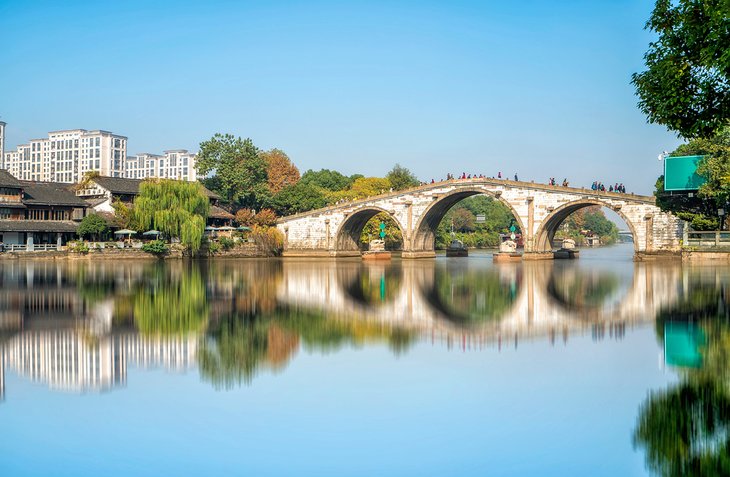
Located at the southern end of China's famous 1,776-kilometer-long Grand Canal , a remarkable engineering feat and UNESCO World Heritage site, Hangzhou is one of China's most visited cities. As big a draw as this centuries-old canal, which connects Hangzhou to Beijing, is the city's picturesque location at the foot of a tall mountain range overlooking beautiful West Lake with its many old shrines and temples, romantic bridges, and pleasant pagodas.
Still often called the "Silk City" for its many silk mills and markets, Hangzhou is famous for having attracted many of China's most important artists through the centuries, as well as famous travelers such as Marco Polo, who declared it the most beautiful city in the world. A tradition that has been around even longer than the legend of Marco Polo is taking the famous Dragon Well tea (lóngjing chá), handpicked in the surrounding countryside twice a year and still much celebrated in art and ceremonies throughout the city.
- Read More: Top-Rated Tourist Attractions in Hangzhou
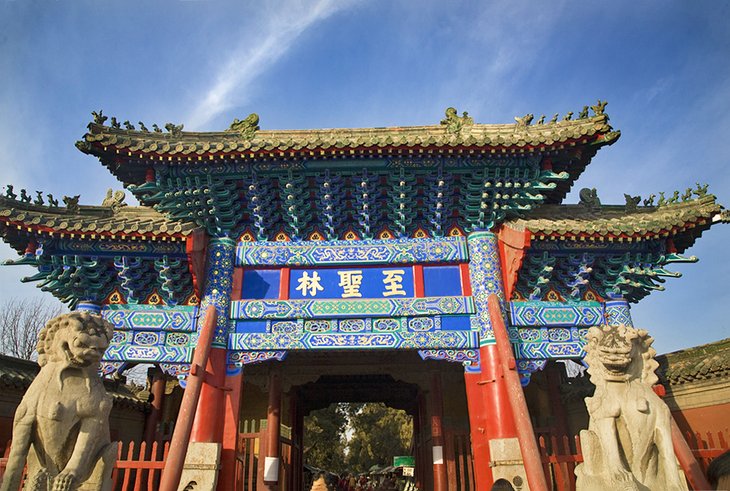
Thanks to its connections with Confucius, China's most revered philosopher, the small town of Qufu in southwest Shandong has long been one of the country's most important places of pilgrimage. Not only was Confucius born here in 551 BC, he was also buried here in 479 BC. As a result, numerous temples and shrines have been erected by devotees in celebration of his life and teachings.
Perhaps the most important of the three main historic sites related to the great teacher - together forming part of a UNESCO World Heritage Site - is the Cemetery of Confucius (Kong Lin). This large burial ground contains the graves of Confucius, family members, and numerous followers.
The grave itself is a mound marked by a 15th-century gravestone carrying the inscription "Grave of the Sacred King of Culture, who achieved Absolute Perfection." The graves of his son and grandson are situated close by. The cemetery, laid out around Confucius' grave in the 14th century, makes for a delightful excursion thanks to its more than 10,000 trees. Other important sites worth exploring are the Temple of Confucius and the Kong Family Mansion .
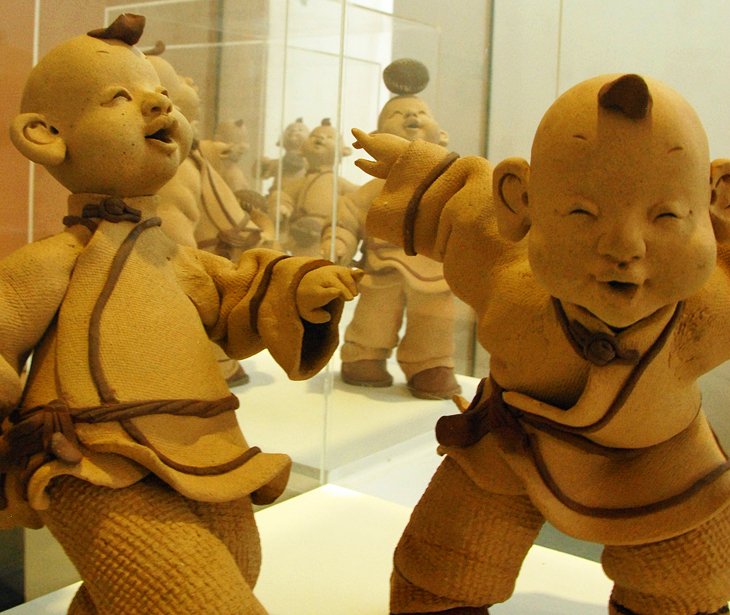
Situated in the center of Shandong province, the city of Zibo was the capital of the Qi Empire for 630 years. During this time it became famous for its ceramics and lacquered works of art. It was in fact here that China's famous green glass was first developed some 1,500 years ago, as well as the region's distinctive black glazed porcelain.
Between 960 and 1279, local makers also perfected the technique of coating earthenware with a brownish layer of glaze displaying tear-shaped runs. This still popular style has cemented Zibo's reputation for hand-made porcelain and ensured its status as China's major producer of ceramics.
Zibo's connection to the history of ceramics is celebrated at the Zibo Chinese Ceramics Center . This fascinating attraction features large collections of locally produced artifacts and displays showing both modern and traditional manufacturing methods.
Another attraction worth seeing is the Great Wall of the Qi . More than 2,500 years old, many sections of its 600-kilometer length still stand and can be visited. Zibo boasts a variety of other interesting cultural experiences, including its unique cuisine and theatrical performances, which can be included as part of a tour package.
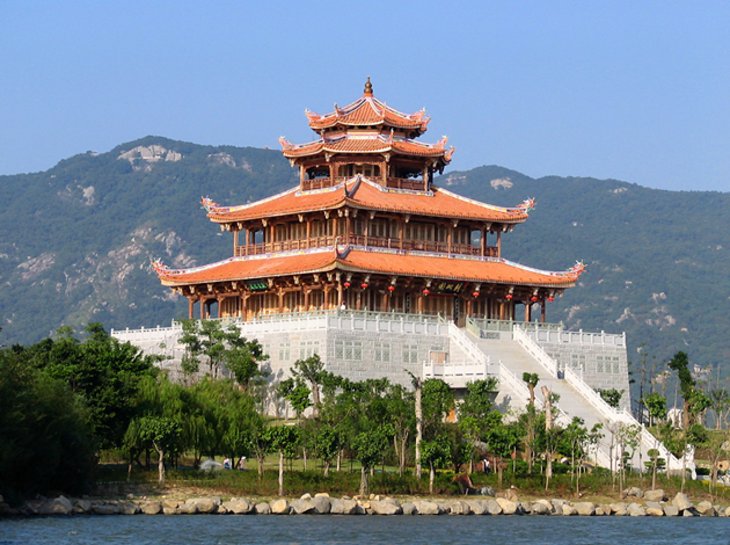
Located in the southeast corner of Fujian province on the broad Jinjiang estuary, Quanzhou was already an important port in the 6th century. Highlights of this historic port include the Temple of the Beginning of the New Age , built in AD 686 and one of the largest temples in China.
Covering some 70,000 square meters, this vast temple site includes a number of impressive pagodas, including the 48-meter-tall eastern pagoda (Zhenguo) dating from the end of the Tang Dynasty around AD 700 and decorated with 39 bas-reliefs crafted from alabaster; and the 44-meter Pagoda of Longevity (Renshou Ta) from the early 10th century and decorated with birds and flowers.
Also of interest is the Mosque of Peace and Clarity , erected in 1009 in the style of a Damascus prayer house and financed by Muslim merchants. One of the oldest mosques in China, the building is notable for its impressive main gate and walls with Arabic engravings of the Koran.
Be sure to also visit the Quanzhou Maritime Museum with its historic displays, including a 24-meter-long 10th-century sailing ship; hundreds of sculptures; and stone tablets with inscriptions in old Chinese, Latin, Syrian, and Arabic. You'll also see numerous ceramic pieces crafted in Quanzhou from the 10th century onwards. Afterwards, spend time exploring the downtown area, popular for its shopping, authentic restaurants, and many fine hotels.
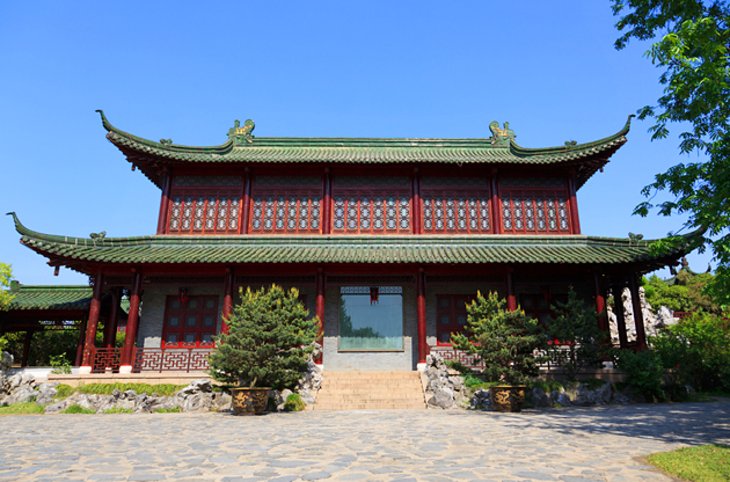
Yangzhou lies in the central region of Jiangsu province between the Yangtze River and the Grand Canal and can trace its roots back some 2,400 years. It was the building of the canal in the 6th century, however, that saw the city rise in importance as a place of foreign trade, attracting the likes of Arab missionary Behao Aldin in the 7th century and later Marco Polo, who stayed here for a spell.
In addition to being famous for its traditional local cuisine, unique art forms, and handicrafts, the town boasts a number of first-rate attractions, which together form a great walking tour of the old town. These include the picturesque Narrow West Lake ; the old Bridge of the Great Rainbow (Dahong Qiao); the 18th-century Bridge of the Five Pavilions ; and Fuzhuang Island , reached by a zig-zag bridge and home to a number of pleasant pavilions and covered walks.
Another must-see attraction is the 4th-century Temple of Heavenly Peace . Located at the foot of the Mountain of the Plum Blossom (Meihua Ling), it's famous as being the place where, in AD 418, a Nepalese monk translated the Buddhist scriptures. Also worth seeing, the 1,500-year-old Daming Temple was once home to the monk Jianzhen, famous for spreading the Buddhist gospel to Japan.
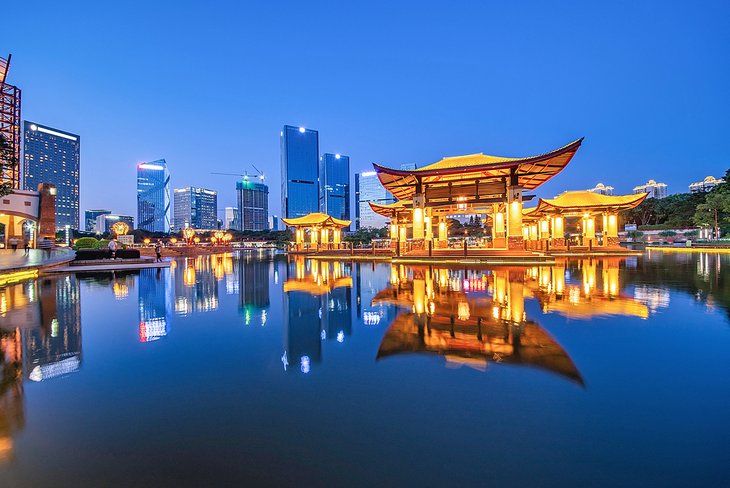
Foshan lies in the center of Guangdong province, about 20 kilometers southwest of the larger city of Canton, and is notable for being one of the oldest towns in China. This popular tourist destination takes its name from three ancient bronze Buddha statues discovered here in AD 628 and soon after became one of the country's most important places of pilgrimage. Under the Song Dynasty from AD 960 to 1279, Foshan became known as a center of the porcelain industry along with metalworking and silk weaving.
Among Foshan's other attractions are the centuries-old Ancestral Temple , now used to stage traditional Cantonese opera performances, and Shi Wan , an old porcelain furnace that's been in operation since the 10th century and is said to have remained permanently lit.
Another highlight of a visit is simply wandering the old town's well-preserved European-influenced streets and courtyards. It's a real treat due to the shopping opportunities at the many small traditional potteries offering their unique goods for sale to curious passersby.
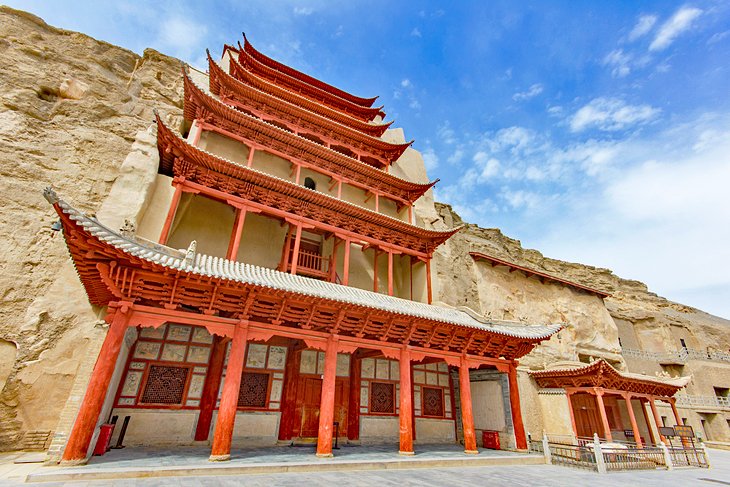
Although remote, the cities of Dunhuang and Jiayuguan are big draws for adventure seekers and certainly one of the best places to visit in China. Located to the northwest of China, these two cities have long been famous for their association with the Silk Road trading route, which connects Asia with Europe.
Dunhuang's proximity to the Gobi desert - the city was established on an oasis, the first (or last, depending on the direction you were headed) in China - makes it the perfect place to experience a fun sunset camel trek along the dunes. From here, you'll also be able to explore the spectacular ancient Mogao Grotto Caves , man-made dwellings literally chiseled out of the mountainside.
Jiayuguan, some 386 kilometers east of Dunhuang, is where you'll find the spectacular Jiayuguan Pass . This breathtaking natural scenery is enhanced by a number of once important forts, as well as the most westerly section of the Great Wall of China , a real treat to explore due to the fact fewer tourists venture to the area.
After all that adventure, you can enjoy the chance to explore historic Jiayuguan, a popular shopping destination for its many finely crafted goods, as well as a great place to experience authentic regional cuisine.
- Visiting Dunhuang & Jiayuguan: Mogao Caves, Western End of the Great Wall of China & Camel Trekking
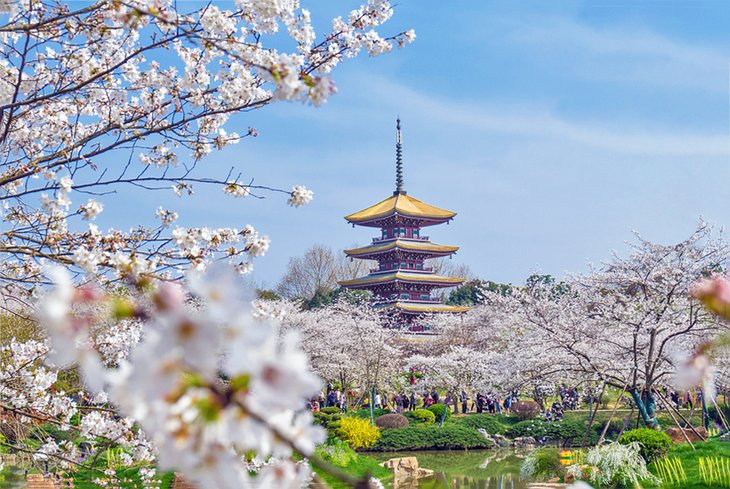
Large by Western standards due to its population of nearly three-and-a-half million souls, Wuhan, the capital of Hebei Province, lies at the confluence of the Yangtze and Hanshui rivers on the Beijing-Canton rail route in Central China. Well over 3,000 years old, the city offers a number of first-rate tourist attractions worth exploring on foot.
One of the best is East Lake , the largest urban lake in China and famous for its many gardens, which burst forth each spring in a cacophony of color as cherry trees and lotus flowers bloom. Those with an interest in Chinese culture and history are well served, too, thanks to the excellent Hubei Provincial Museum . Highlights of the museum, regarded as one of the best in China, include rare finds from the 5th-century tomb of Marquis Yi (Zenghouyi), 2,500-year-old musical instruments, and a superb collection of bonsai trees.

More on China
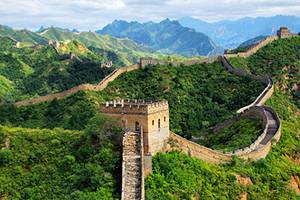
- Best China Tours
- China City Packages
- Great Wall Tours
- Yangtze Cruise
- Tibet Discovery
- Yunnan Exploration
- Silk Road Adventure
10 Places to Visit in China for a Trip of a Lifetime
As a vast and fantastic country with very long history, there are many places to visit in China, which would reward you a memorable trip of a lifetime with picturesque landscapes, profound cultural atmosphere, amazing historical heritages, or interesting art achievements, etc. However, what are the best China places to visit within the limited travel time? Here is a list for reference.
Beijing : The Capital City of China
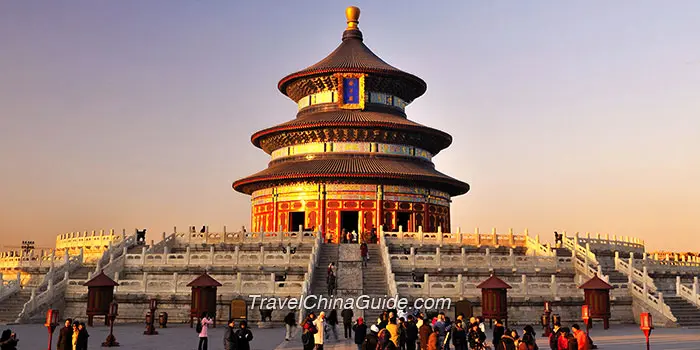
Xi’an : Most Ancient City with 3,000 Years’ History
Shanghai : megacity with modernity and stylishness, chengdu : home for giant pandas, zhangjiajie : wondrous avatar mountains, guilin & yangshuo : classical cruise down the li river, suzhou : classical chinese garden art, hangzhou : west lake & south china water towns, luoyang : origin of chinese kungfu, tibet : mysterious inland up the himalayas, you may like.
9 Historical Places in China You Should Never Miss
Top 10 China Tourist Places for Culture Lovers
Top 10 China Main Cities for Nature Lovers
The Ultimate Chinese Bucket List: 50 Must See Places to Visit in China
The Ultimate China Bucket List: 50 Must-See Places to Visit in China
China is a huge country. There’s no ifs, buts, or coconuts about it. At 9,596,960 square kilometers – it weighs in behind only Russia, Canada, and the United States for sheer size. Couple this with China’s massive population and its jaw-dropping history, and you’ve got a recipe for a borderline overwhelming array of choices when it comes time to plan your trip to China.
Put simply, there are just too many places to visit in China to do it all in one go.
For a country with so many diverse cultures and landscapes, it’s remarkable that so many Chinese itineraries consist of the same tried and tested fare.
Beijing for the historic sites, a brief detour to Xi’an to see the Terracotta Warriors, and one final stop-off in Shanghai for shopping and a brief walk along the Bund.
For those pressed for time, this is perfectly fine, but there’s so much more to China than just these three cities.
There is a wealth of cities with more history in one neighborhood than the entirety of my own country.
There are unbelievable and almost alien landscapes the likes of which would fit in better with fantasy or science fiction.
You’ll find cultures as unlike the ‘traditional’ Chinese as our own, sample foods that go well beyond beef & broccoli, and be confused, frustrated, and amazed every step of the way.

A Lifetime Commitment
China is not a country to be tackled in a week or a fortnight. It’s a country that begs to be visited and revisited. A country with so much to see that it would take a lifetime to do it justice.
But if you’re planning your dream Chinese trip and came in search of suggestions, look no further! I’ve compiled a list of the fifty places you should see and the experiences you should have while in China.
It’s a far from exhaustive list, and I’m bound to have missed some things, but you’ll find a little of everything here. From off the beaten path national parks to ancient monuments to beautiful beaches, there’s a little something for every Chinese bucket list here.
If you’re inspired to embark on your own journey through this fascinating country, explore a range of curated trips to China that can help you experience the best of China’s unique culture and landscapes.
The Obvious
Like any country, China has a few items that should be on any first-time itinerary.
The US has the Statue of Liberty, France has the Eiffel Tower, Australia has Sydney Harbour, and England has London’s many iconic sites.
There’s a reason why Xi’an, Beijing, and Shanghai feature so prominently on Chinese itineraries: the most recognizable landmarks can be found in these three cities.
Throw in Chengdu to see China’s most famous animal and a cruise along China’s most famous river, and you’ve got the makings of a fantastic two-week itinerary.
1. Visit the Imperial Sites in Beijing (The Forbidden City, Summer Palace, and Temple of Heaven)

No Chinese itinerary would be complete without at least a few days in the nation’s capital.
Beijing may have a bad reputation due to its increasingly bad pollution, but pierce the haze and you’ll still find China’s most enduringly charming and fascinating city.
The presence of the legendary Forbidden City, the tranquil Summer Palace, and the distinctive Temple of Heaven give the city a triumvirate of historic sites the envy of every other city on earth.
With the possible exception of the Great Wall of China, no other landmark can really attest to better epitomizing China’s rich Imperial culture.
Looking for more for your Beijing itinerary? Check out Lama Temple, one of China’s most famous Buddhist temples.
Where: All three sites can be reached easily by taxi or public transport from most Beijing hotels.
How Much?: 40-60rmb ($10 USD) – Forbidden City, 20-30 RMB ($5 USD) – Summer Palace, and 15rmb ($2.50 USD) – Temple of Heaven.
2. Hike the Great Wall of China

Arguably the most recognizable symbol of China’s rich history, the 21,196km long fortification stretches from Dandong in the country’s east all the way to Lop Lake in its west.
While it’s true that the Badaling section of the wall is often crowded to the point that you’re barely able to see the wall you’re standing atop, there remains a wealth of places where you can not only experience the Great Wall’s majesty – but even have the wall almost entirely to yourself!
Hiking sections of the wall such as Jinshanling or Gubeikou offer you a better idea of both the wall’s age and its sheer scale. Far from the over-touristed and carefully restored sections such as Badaling and Mutianyu, these sections offer a tougher climb and a modicum more peace.
Whether you take a tour through a company like Great Wall Hiking or make the journey yourself, standing atop the Great Wall should be at the top of any Chinese traveler’s to-do list.
Curious? You can read about my experience hiking the Great Wall of China .
Where : The most famous sections of the Great Wall can be reached from Beijing in 1-3 hours, but the wall itself stretches as far inland as Inner Mongolia.
Cost : 45 – 65rmb ($8 – $10 USD) depending on the section of the Great Wall. Tours and additional activities are extra.
3. Wander the Bund in Shanghai

While Shanghai’s skyline is today defined by the modern skyscrapers of the rapidly developing Pudong region, it was once defined by a collection of European constructed and owned buildings that today comprise The Bund.
Walking along the shores of The Bund is a journey through architectural history, as buildings from such varied styles as Gothic, Renaissance and Romanesque vie for attention in the city’s former financial centre.
Whether you take in the atmosphere by day or soak in the twinkling lights of Pudong by night, time spent on The Bund is bound to be one of your more enduring memories of Shanghai.
A fan of Willie Wonka? The bizarre sightseeing tunnel is a dizzying aural and visual experience. Tickets are 55rmb ($9.50 USD) for a round trip.
Where : The Bund can be reached via taxi, ferry, bus, subway, or the famous sightseeing tunnel.
Cost : Free.
4. See the Terracotta Warriors in Xi’an

Standing as silent testament to the will of Emperor Qin Shi Huang , the ranks of China’s Terracotta Warriors are one of the nation’s most beloved cultural icons.
With each warrior being a unique sculpture, the Terracotta Warriors were an archaeological gold mine upon their discovery and remain one of China’s most popular tourist attractions.
Want to know more about the Terracotta Warriors? Adventures Around Asia has a fantastic article on their history and how to get there.
Where : The Terracotta Warriors can be reached from Xi’an by private car or public bus.
Cost : 120 – 150rmb ($18 – $22 USD).
5. See the giant pandas in Chengdu

China isn’t all ancient cities and dusty old relics. The country’s endemic giant pandas are one of the world’s most beloved animals.
For those wanting an up-close and personal experience with these gentle giants, the world-famous Chengdu Research Base of Giant Panda Breeding , in Sichuan is the place to be.
Home to more than eighty giant pandas (and a small collection of the no less adorable red panda), is the place to go if you want to see these gorgeous creatures up close and learn more about them.
Where : You can reach the Chengdu Panda Centre by public bus or taxi from Chengdu.
Cost : 58rmb ($10 USD).
6. Shop for souvenirs along Nanjing East Road

While China tries hard to crack down on its reputation as a place for fakes, it remains a popular place to bargain for designer brands that might fetch much higher prices elsewhere.
Stretching for more than three miles and featuring over 600 businesses, the always bustling Nanjing East Road is a dizzying cacophony of sights, smells, and sounds.
Whether you’re hunting for an authentic Chinese souvenir or the latest in fashion or technology, Nanjing East Road is sure to offer up something.
Where : Nanjing East Road stretches from The Bund to Jing’an Temple in Shanghai, and can be reached by public transport or taxi.
7. See Shanghai from The Pearl

While Yuyuan Gardens showcases Shanghai’s Chinese history and The Bund stands as a testament to its international occupation, the towering silhouette of The Pearl stands as a tribute to modern China.
While you’re coming for the view from the Aerial Sightseeing Corridor, The Pearl offers visitors a number of activities to engage both young and old.
The Oriental Pearl Science Fantasy World, Shanghai Municipal History Museum, and a revolving buffet restaurant are all on site as well.
Where : The Pearl is located in Shanghai’s Pudong district, and can be reached by taxi or public transport.
Cost : 160 – 220rmb ($23 – $32 USD). Lunch is 338rmb ($49 USD) for a buffet.
8. Eat Peking duck in Beijing

No trip to China would be complete without devouring this delectable dish.
While it’s available all over China, eating Peking (Beijing) duck in the nation’s capital is something that should be on any culinary bucket list.
There’s no shortage of options in Beijing, and you’ll find a wealth of articles debating which restaurant offers the best value for money and best quality.
For me, I think the best Beijing duck in the city can be found at DaDong. You can read more about my experience here .
Not sure how to eat Beijing duck? Check out this helpful resource: A Foreigner’s Survival Guide to Ordering and Eating Beijing Duck .
Where : All over Beijing. Check out this list for some inspiration.
Cost : 50-200rmb per person ($10 – $40 USD).
9. Visit Tiananmen Square

Infamous for its role in the massacre that China continues to claim didn’t happen, Tiananmen Square is one of the world’s largest public squares and a popular tourist spot located just across the road from the Forbidden City.
The most recognizable building will undoubtedly be the 600-year-old Tiananmen Tower, but the Square is also home to other buildings such as the National Museum of China and the final resting place of controversial figure, Chairman Mao.
Where : Tiananmen Square is located opposite the Forbidden City’s front entrance.
Cost : Free. 15rmb ($3 USD) to climb Tiananmen Tower.
10. Take a cruise along the Yangtze

One of the twin cradles of Chinese civilization (alongside the Yellow River), the mighty Yangtze is the longest river in China and the third longest river in the world.
Major cities along the river include Chongqing, Nanjing, and Shanghai – but it is the scenic gorges, especially Three Gorges, that are the highlights of any Yangtze River cruise.
There are no shortage of options and itineraries when looking to spend some time upon the river, and many itineraries combine the river with nearby attractions such as Tiger Leaping Gorge, Yellow Mountain, the Leshan Giant Buddha, West Lake, and much more.
Where : The Yangtze River stretches from the Tibetan plateau all the way to Shanghai. Cruises start in a number of major cities.
Cost : Dependent on itinerary and provider, cruises range from $500 – $3000 USD per person.
11. Visit Yuyuan Gardens

A classic example of a Chinese garden, Yuyuan Gardens in Shanghai is one of the most accessible and impressive examples of the art form.
At 20,000 square metres, the park is relatively small by Chinese standards but packs a lot into the small space including pavilions, rockeries, ponds, bridges, and a bustling bazaar.
Highlights of the gardens include the Bridge of Nine Turns, the Exquisite Jade Rock, and the Yuyuan Bazaar. Be sure to grab Shanghai’s famous xiaolongbao (soup dumplings) while you’re there!
Where : Yuyuan Gardens is a short walk from The Bund, and can also be reached by taxi or public transport.
Cost : 40rmb ($8 USD).
The Unmissable
Got more than a week to spend in China? Here’s a collection of the very best the country has to offer.
From breathtaking national parks to underrated historical gems to fascinating cultural experiences, this list of twenty-five Chinese itinerary ideas is sure to inspire.
12. Walk Huashan’s “Plank of Death”

It’s rare you’ll go more than a week without seeing some viral video of this death-defying hike on social media.
Sometimes called “the world’s most dangerous hike”, Huashan’s Plank of Death is just a small part of a Huashan Scenic Area in Shaanxi province. With three routes of varying difficulty, the mountain itself is worth your time, even if you’re a bit too chicken to tackle the precarious ladder and plank portion of the hike.
Curious to learn more? Adventures Around Asia has a great article on the Huashan plank walk .
Where : Huashan can be reached by train, bus, or private car from Xi’an.
Cost : 180rmb ($27 USD) for entry. 30rmb ($5 USD) for harness rental. Cable car extra.
13. Visit the Nanjing Massacre Memorial

The atrocities committed by Japan in Asia both before and during World War II are often glossed over in the west, but China very much remembers the nefarious acts of their would-be conquerors.
The Rape of Nanking was a nightmarish period of six weeks in which the Japanese perpetuated mass rape and mass murder against the population of the former Chinese capital. Between 50,000 and 300,000 people lost their lives during the occupation.
Today, the city remembers the darkest period in its history at the Nanjing Massacre Memorial. Part museum and part somber memorial, it stands as a haunting reminder of the very worst of mankind.
Where : The Memorial can be reached easily by bus, taxi, or subway. Nanjing is a 90-minute train ride from Shanghai.
14. Visit Yellow Mountain and Hongcun Village

A region of towering stone spires, twisted pines and stunning sunrises, Yellow Mountain is arguably China’s most famous mountain.
Visitors come from all over China and around the world to see Huangshan’s bizarrely shaped rocks and trees jutting from a sea of shifting mists. It’s truly one of China’s most surreal and beautiful locations.
When you’re done soaking in nature’s beauty, nearby Hongcun Village is a step back in time, epitomizing Qing and Ming era architecture as well as presenting visitors with unspoiled rural panoramas. For those wanting an escape from bustling modern China, it’s a breath of fresh air.
Where : Huangshan is located in Anhui province. It can be reached by bus or train from Hangzhou or Shanghai, or can be flown to.
Cost : 150 – 230rmb ($21 – $34 USD) for Huangshan. 105rmb ($15 USD) for Hongcun Village.
15. Explore Tiger Leaping Gorge

One of the most breathtaking landscapes not just in China, but in the world – Tiger Leaping Gorge boasts the snow-capped peaks, dramatic cliffs, and terraced farms that inspired the landscapes of Kung Fu Panda .
Hikes vary in length and difficulty, but you’d be hard-pressed to find somebody returning from the gorge without a sense of wonder.
It’s not easy to get there on the uneven roads, but it’s worth the effort.
Where : The closest city is Lijiang and can be reached by local bus.
Cost : 65rmb ($10 USD) for an open-ended ticket.
16. Gamble in Macau

With annual gambling revenue seven times that of Las Vegas, Macau is the true sin city when it comes to games of chance.
A former Portuguese colony, the city still very much wears its colonial history on its sleeve, Macau offers a charming contrast of historic European buildings and glitzy casinos catering to the world’s largest gambling market.
Like Las Vegas, Macau is more than just gambling – with bungee jumping, shopping, live entertainment, greyhound racing, and a number of historic sites also worth your time.
Where : Macau is a special administrative zone that can be reached via ferry from the mainland (Shenzhen), bus, car, or flight.
Cost : There is no cost to enter Macau.
17. Soak in the Sanya sun

White sand beaches and crystal clear waters aren’t the first things that come to mind when you picture China, but the country’s southernmost province is an island paradise the likes of which you’d expect to find in Southeast Asia.
A popular playground for the Chinese and Russians in particular, Sanya boasts some remarkably picturesque beaches – the most famous of which is Yalong Bay.
In addition to sunbathing, swimming, and snorkeling – the island of Hainan is a playground of resorts, spas, floating restaurants, and amusement parks perfect for a family getaway.
Nanshan Temple is also worth a look, with its towering three-sided statue of Guan Yin Buddha being a highlight.
You can read about my Christmas in Hainan if you’d like to know more.
Where : Sanya is located in southern China, and can be reached by regularly scheduled flights from all over the country and abroad.
Cost : Varies depending on accommodation and activities. The island boasts everything from backpacker’s hostels to five-star resorts. Check all the options with Cozycozy !”
18. Explore Jiuzhaigou

Bright blue waters so clear you can see every leaf on the lake floor, beautiful waterfalls that cascade down tier after tier after tier and verdant forest whose leaves paint the surrounding mountains in an explosion of colours make Jiuzhaigou one of the most surreal and beautiful locations in all of China.
Located far from the hustle and bustle of modern China, this stunning valley high in the Sichuan tablelands is an unspoiled paradise in which wild pandas still roam to this day.
While you’re highly unlikely to see the park’s most famous residents during your visit, the landscape and the quiet mountain villages after which the park is named are sure to spellbind.
Where : Jiuzhaigou can be reached via flights to the nearby airport or by taking a bus from Chengdu.
Cost : 220rmb ($32 USD)
19. See the giant Buddha in Leshan

Located just a short bus or train ride from Chengdu, Leshan is home to the world’s tallest stone Buddha in the world and the largest pre-modern statue in the world.
Like something out of ancient fiction, this towering (71 metre) representation of Maitreya sits solemnly on the banks of the Qingyi River. With its proximity to Chengdu’s panda centre, it’s a perfect day trip. In fact, there are many Chengdu tours that combine the two!
Where : Leshan can be reached by bus or train from Chengdu, or by ferry from Chongqing.
Cost : 90rmb ($13 USD).
20. Take a ride around (and on) West Lake

Immortalized on the 1 RMB note, Hangzhou’s West Lake is a picture of serenity – all swaying willows, tranquil ponds, gracefully arching bridges, and meticulously manicured gardens.
Surrounded on three sides by mountains, the lake is one of China’s most popular tourist attractions, and the perfect place to while away a day in spring, summer, or fall.
Popular activities at West Lake include renting bikes to cycle its bridges and shores, taking a scenic ferry ride out onto its waters, and visiting the famous Leifeng Pagoda.
Hangzhou itself is a wonderfully green and relaxed city, and its proximity to Shanghai makes it an easy addition to even the most crowded itinerary.
Where : West Lake is located in Hangzhou, which is a short train or bus ride from Shanghai. The city is also served by its own international airport.
Cost : Free. Leifeng Pagoda, boat rides, and bike rental attract their own cost.
21. Visit one of China’s famous water cities

Canal cities might be more closely associated with Europe’s Venice, but China has a long history of settlements built on or around the water.
These water cities offer a charming glimpse into simpler times, and while some have become tourist traps, many retain much of their old world charm after hundreds of years.
Hongcun (mentioned earlier) is arguably the most famous of the water cities, but Tai’erzhuang in Shandong and Zhouzhang near Shanghai are also popular options.
If you’re looking for something a little more authentic, Tongli, Xitang, and Nanxun near Shanghai are better options.
Where : There are water towns scattered across China. Check out this list of Chinese water towns for some Shanghai adjacent inspiration.
Cost : Varies dependent on the town and its level of commercialism.
22. See the Longsheng rice terraces

China’s rice terraces are picturesque no matter where you go, but the Longsheng Rice Terraces near Guilin are the unquestioned king. Otherwise known as the Dragon’s Backbone, this classic example of Chinese agricultural ingenuity shouldn’t be missed.
A study in bucolic beauty, the terraces are surrounded by quaint villages where the adventurous tourist can get a taste of the real China. Covering 66 square kilometres, the various terraces have plenty of space – so you’ll rarely feel overcrowded while you soak in the serenity.
Where : The scenic area can be reached by bus from Guilin.
Cost : 80rmb ($12 USD) for a two-day pass.
23. Take a ride along the Li River in Guilin

Dramatic karst rock formations, indifferent water buffalo munching on their meals in the shallows, idyllic rice paddies, and bamboo rafts flitting along the Li River’s surface like water bugs combine to make it one of China’s most beautiful regions.
Another Chinese landmark immortalized on the nation’s currency, the Li River is a step back in time. Fishermen use cormorants to catch fish, disinterested farmers trudge through their paddies, and it’s all as you imagine China might have been hundreds of years ago.
Taking a bamboo raft down the Li River is definitely one for any self-respecting Chinese bucket list. You can also take a more traditional cruise, soar above it all by helicopter, or even hike the Li River’s banks.
Where : The Li River is located close to Guilin.
Cost : Varies based on how you want to tackle the river. River rafts range from 50-200rmb ($7 – $30 USD).
24. See the Avatar mountains
Avatar might not have left much of an impression once the 3D glasses came off, but you’d be a tough judge to not be impressed by the soaring karst pinnacles of Zhangjiajie National Park.
Jutting up into the clouds like spears, the mesas of Zhangjiajie inspired the surreal scenery in James Cameron’s CGI blockbuster, and inspired hundreds of thousands of tourists each and every year.
Nearby Tianmen Mountain is an impressive sight all of its own, and doesn’t draw quite the crowds that the park itself does.
Where : Flights to Zhangjiajie depart from most major Chinese cities, and you can also get there by taking a lengthy train ride of 10+ hours.
Cost : 248rmb ($36 USD) for the park. 248rb ($36 USD) for Tianmen Mountain.
25. Soak in the serenity of Dali

A charming lakeside town which can boast startling ethnic diversity, Yunnan’s Dali is the laid back alternative to more modern Kunming.
Nearby Cangshan Mountain and Erhai Lake lend the city some real natural beauty, while manmade wonders such as the Three Pagodas of Chongsheng Temple contribute with their own unique beauty.
Dali isn’t so much a city you see as it is one you experience – a modern day Shangri-La that backpackers from around the world have fallen in love with.
Where : Dali is located in northern Yunnan, and can be reached by bus or train from Kunming.
26. Visit Potala Palace in Tibet

Tibet’s inclusion in China may remain a source of hot debate, but there’s no debating the stunning beauty of Potala Palace in Lhasa.
Once the home to the Dalai Lama, the five-hundred-year-old Potala Palace stands some 100 metres above Lhasa and an astonishing 3,750 metres above sea level, making it the highest palace in the world.
While access to Tibet is hard to negotiate and access to the palace even more so, even taking in its majesty Lhasa should be a goal for any lover of architecture and religious history.
Where : Potala Palace is located in Lhasa, Tibet. It can easily be reached by taking a local bus or taxi.
Cost : 100 – 200rmb ($14 – $28 USD).
27. Get lost in Xi’an’s Muslim Quarter

While many people visit Xi’an each year to see the Terracotta Warriors, you’d be doing yourself an injustice if you didn’t take the time to explore China’s former capital more thoroughly.
Xi’an once acted as the starting point for the famous Silk Road, and as a hub of Asian trade, it attracted a considerable Middle Eastern influence over the centuries. This influence remains today, and the Muslim Quarter is both a living museum of historic Muslim architecture, but also a culinary journey of delicious foods found nowhere else in well-traveled China.
It’s an interesting insight into a China that isn’t the stereotype of fried rice and mahjong.
Where : Located in Xi’an, the Muslim Quarter can be reached by taxi or local bus.
28. Eat at the world’s cheapest Michelin star restaurant

Hong Kong’s first entry on the list is a delicious one, and it’s one that won’t break your bank. It’s not often you get to eat at a Michelin Star restaurant for cheap, but Hong Kong’s Tim Ho Wan Dim Sum is just that.
While the small eatery has gone on to spawn an entire chain, the original is still considered the best, and no visit to Hong Kong would be complete without trying the restaurant’s world class selection of dim sum.
Got your appetite up? Check out Sassy Hong Kong’s post on Tim Ho Wan .
Where : There are four Tim Ho Wan locations in Hong Kong. See the above article for addresses.
Cost : Roughly $150 USD for dinner for two.
29. See Hong Kong from atop Victoria Peak

The best place to take in Hong Kong’s twinkling skyline, Victoria Peak is one of Hong Kong’s most popular tourist destinations day or night.
The more active can choose to hike their way up to the peak, but the popular Peak Tram is a scenic and more comfortable alternative. Tickets are HK$40 ($5.10 USD) return.
Once at the top, there are a number of tourist attractions include Madame Tussauds, Sky Terrace 428 (Hong Kong’s highest viewing platform), and more.
A Different View
Would you rather see Hong Kong from above while also breaking a sweat? KKday offers a Beacon Hill rock-climbing tour that affords a similarly spectacular view of the city.
Where : The lower terminus can be reached by MRT.
30. Eat hot pot in Chongqing

While hot pot is available all over China, Chongqing’s take on the popular spicy broth is perhaps its most famous variant.
Featuring Sichuan’s famous mouth-numbing pepper and a number of other unique ingredients, Chongqing hot pot isn’t for the faint of heart, but it’s a challenge any adventurous eater should be up for.
Where : Chongqing is overflowing with restaurants serving up this popular local delicacy, although you can find it in Sichuan restaurants all over the country.
Cost: Varies.
31. Visit the Mausoleum of San Yat Sen in Nanjing

While he’s not as (in)famous outside of China as Chairman Mao, Dr. Sun Yat Sen’s role in forming both modern China and modern Taiwan cannot be overstated.
A political revolutionary revered on both sides of the Taiwan Strait for his role in introducing democracy (such as it is) to both Chinas, Sun Yat Sen’s life was one of constant struggle and turmoil.
For those wishing to pay their respects for the unique political figure, his mausoleum can be visited at Purple Mountain in Nanjing.
An impressive construction in its own right, the Mausoleum’s proximity to other Purple Mountain attractions such as the original Ming Tomb and the nearby parklands makes it a perfect day trip from the city.
Where : Purple Mountain Scenic Area can be reached from Nanjing by bus, train, or local taxi.
Cost : Entrance to the Mausoleum is free, but Purple Mountain costs 15rmb ($2.20 USD).
32. Visit Qinghai Lake

China’s largest lake, Qinghai Lake is a 4,317 square kilometer saltwater lake famed for its serenity and the lush grasslands that surround its occasionally frosty shores.
The lake itself may not seem especially spectacular, but the utter quiet that surrounds it and the diverse ethnicities that live in the area make it an intriguing cultural journey. Boat rides, bird watching, and cycling are also popular activities.
It’s well off the tourist trail and at high altitude, so it’s not one for the pampered or the faint of heart.
Want something even more off the beaten track? Check out the starkly beautiful Chaka Lake, which is also in the Qinghai province.

Where : Buses can be taken from the city of Xining.
33. Visit the Ming Tombs

One not to be missed while in Beijing, the thirteen tombs of Ming Emperors whose combined reign stretched from 1368 – 1644.
While only certain parts of the massive complex are open at any given time, the chance to wander its famous Sacred Way and visit a few of its large tomb complexes is one worth jumping on.
While the original Ming Tomb can be found in Nanjing, these thirteen are better known and represent a greater portion of the once great dynasty.
Where : You can reach the Ming Tombs by bus, taxi, or subway from Beijing. It is often combined with a visit to the nearby Badaling section of the Great Wall.
Cost : 100 – 130rmb ($15 – $19 USD).
34. Attend the Harbin Ice Festival

The world’s largest ice sculpture festival, the annual Harbin Ice & Snow Festival sees the northern Chinese city transformed into a winter wonderland of impressive structures of snow and ice lit by brightly coloured lights.
Running throughout the cold winter months (December – February), the festival sees millions of people visit the three venues that host the various ice and snow sculptures.
Temperatures range from -10C to -25C during the festival, so pack warm!
Where : Harbin can be reached by flights, long-distance train, or long distance bus from Beijing and other major cities.
Cost : 240rmb for Sun Island ($35 USD), 330rmb for Ice & Snow World ($48 USD), and 150rmb for Zhaolin Park ($22 USD).
35. See Asia’s highest waterfall in Guizhou

Standing at 74 metres in height and 81 metres in width, the impressive Huangguoshou Falls in Guizhou province is the largest waterfall in Asia.
With a thunderous roar, the waters of the falls plunge into the Rhinoceros Pool and awe crowds of tourists from all over the world. Accompanied by a number of other waterfalls, it makes for a thrilling (and slightly moist) day out.
Where : You can take a bus from Anshun or Jinyang.
Cost : 160 – 180rmb ($23 – $26 USD).
36. Get off Beijing’s beaten track in the hutongs

My absolute favourite district of Beijing is the cluster of dusty laneways and cute boutiques that make up its hutong district.
While modern Beijing has precious little time for the grimy local restaurants and crowded courtyard tenements of the city’s past, there remains a lot to love in these window alleyways where people live, play, eat, and do pretty much everything else.
Hutongs such as Wudaoying and Fengjia near Andingmen are a delightful mix of authentic China and modern hipster charm, with microbreweries, cute cafes, art galleries, local dives, fashion boutiques, and everything in between to be found.
Where : Get off at Andingmen Station and explore.
The Off the Beaten Path
Are you a seasoned China veteran looking for something truly unusual to do?
Have you tackled most or all of the above and rolled your eyes?
Here are some of the more obscure, off the beaten track places to visit in China.
37. Drink Tsingtao in Qingdao

If you’ve spent any time at all in China or have a taste for foreign beers, you’ve probably heard of Tsingtao. While it’s not the most popular beer in China (that honour goes to Snow), it’s definitely China’s most famous malty export.
If you’re wanting to take your love affair with Tsingtao to a new level, you can pay a visit to the German-inspired beach town of Qingdao. Home to both the Tsingtao Brewery & Museum and the Qingdao International Beer Festival , it’s a place for a beer lover’s pilgrimage.
Beyond the suds, Qingdao is a picturesque city of beaches, clifftop art installations, German architecture, and good food.
Where : Qingdao is served by an international airport and a high-speed train station. It is roughly halfway between Shanghai and Beijing.
Cost : Free. Entry to the Beer Museum is 60rmb ($10 USD) and includes two beers. Tickets for the Beer Festival are 20-30rmb ($4 – $5 USD).
38. Drive the Karakoram Highway

One of the most scenic drives you’re ever likely to encounter, the Karakoram Highway connects the historic Silk Road city of Kashgar with the Sino-Pakistani border high in the mountains.
A day long drive that takes you through sun-blasted desert, swaying grasslands, high mountain passes, and past churning glacial rivers – this is a drive that’s all about the journey and not the destination.
Notable stops along the way include the fiery Red Mountain, the icy beauty of Karakul Lake, the historic Stone Fort in Tashkurgan, the snow-capped Sand Mountain, the serene Golden Grasslands, and the snowy silence of Kunjerab Pass.
You can read more about my epic journey along the Karakoram Highway .
Where : The Karakoram Highway begins in Kashgar in China’s Xinjiang province. Flights to Kashgar typically come via Urumqi.
Cost : Tours vary in length and cost.
39. Take the Qinghai-Tibet Railway

From the road to the rail, we focus on the world’s highest altitude railway. Connecting traditional China with Tibet, this near 2,000 kilometre stretch of rail covers some of the most visually stunning terrains in China.
Stretching from Xining all the way to Lhasa, the high-speed train cuts across a hugely diverse assortment of landscapes before ascending into Tibet – where oxygen masks may be needed due to the high altitude.
You’ll also need to arrange a Tibet tour ahead of your trip, as independent travelers are not permitted in the region.
Where : The train departs from Xining, and has seven stops along the way.
Cost : Tickets range from 224rmb ($32 USD) for a seat to 781rmb ($115) for a sleeper.
40. Go horseback riding in Inner Mongolia

People are often surprised to learn that there is an Inner Mongolia, but the vast grass sea of this northern Chinese province is sure to put you in mind of the vast Mongol hordes who once ravaged China.
A distinctly different culture makes a visit to Inner Mongolia akin to visiting an entirely different country. Here, you’ll find a land of boundless grasslands that sway in the breeze, nomadic herdsmen, primitive yurts, and sun-baked deserts at odds with China’s modern metropolises.
No visit to the region would be complete without slipping into the saddle and seeing the grasslands from horseback. The horse was a vital part of what made Mongolia such a threat to ancient China, and to see Inner Mongolia from horseback is truly a bucket list experience.
Where : Inner Mongolia is served by both international and domestic airports.
Cost : 5rmb (less than $1 USD).
41. See the Caucasian mummies in Urumqi

Creating mummies is not the sole domain of ancient Egypt, although Xinjiang’s controversial ‘Tamin Mummies’ were created by the province’s heat and dry rather than religious ritual.
Why controversial? The near 4,000-year-old Loulan Beauty is distinctly Caucasian in her features, which is at odds with modern China’s assertions that Xinjiang has always been a part of China.
The Xinjiang Museum in which the mummies reside is worth a visit while in the provincial capital, with exhibits on the province’s melting pot of ethnicities as well as its vital role in the ancient Silk Road.
You can read more about the Xinjiang Museum on Far West China.
Where : The Xinjiang Museum is located in Urumqi, and can be reached by taxi or local bus.
42. See the thousand Buddhas of the Mogao Caves

Sometimes known as the Thousand Buddha Grottos, the Mogao Caves in China’s Gansu province are home to a startling collection of Buddhist artworks dating back more than 1,000 years.
Exploring the 750+ caves is like artistic time travel, as you’ll see different styles and mediums used in celebration of the Buddhist religion. These range from towering statues to intricate murals – a truly inspiring display of religious devotion.
Where : The Mogao Caves can be reached by bus or taxi from Dunhuang.
Cost: 220rmb ($32 USD).
43. Visit the coloured pools of Huanglong

Not far from stunning Jiuzhaigou in northern Sichuan is another stunning natural wonder, Huanglong. Like Jiuzhaigou, it is a distinctly beautiful park of waterfalls, coloured pools, and virgin forest, but Huanglong’s famous fairy pools possess a charm all of their own.
A place of almost alien beauty, Huanglong is well and truly off the beaten path, and visitors can expect peace and quiet while they soak in the park’s otherworldly beauty.
Want to see both Jiuzhaigou and Huanglong? Why not try a Jiuzhaigou tour ?
Where : Buses can be taken from Chengdu or Jiuzhaigou.
Cost : 200rmb ($30 USD).
44. Visit Dalian

A relatively young city by Chinese standards, Dalian is a beachside city with an impressive collection of Russian architecture due to its former state as a Russian settlement.
The city’s extensive coastline makes for some pretty dramatic views, and Dalian is considered one of China’s premier seafood destinations on par with Guangdong in the nation’s south.
Highlights in Dalian include the Bangchuidao Scenic Area with its hills and forests and the family friendly Tiger Beach Ocean Park.
Where : Dalian is served by an international airport as well as high-speed trains and long distance buses.
45. Be humbled by Heavenly Lake, Changbaishan

As if the breathtaking lake and the chance to stand on a volcano aren’t incentive enough, Changbai National Park is also home to a hugely diverse selection of Chinese animals including bears, lynx, leopards, deer, and the Siberian tiger!
You can keep your pandas, people – I’d die a happy man if I ever got to see a tiger in the wild and lived to tell the tale.
The park’s most famous sight is undoubtedly Tianchi (Heavenly Lake), a stunning crater lake that is worth a look at any time of year, but especially gorgeous during the snowy winter months.
Where : Take a taxi or private car from Erdaobaihe County, which can be reached by train or by flying in to Yanji Airport.
Cost : 125rmb ($18 USD).
46. Go bamboo rafting at Mt. Wuyi

A stunningly diverse region of river canyons and dense forest, the Wuyi Mountains in Fujian province is especially famous for the opportunity to raft Nine Bend River and take in the surrounding scenery.
The more adventurous will find a number of hiking trails to really get them close to nature, but a public bus within the park makes it accessible for all ages.
Where : Take a taxi from Wuyishan or a train from Xiamen or Fuzhou.
Cost : 210rmb ($30 USD).
47. Ride camels across the Gobi Desert to see Crescent Lake

A stunning contrast reminiscent of Tatooine in the Star Wars movies, Crescent Lake and Echoing Sand Mountain are a startling juxtaposition of towering dune and verdant oasis located in Gansu province.
The crescent-shaped lake exists at odds with the shifting sands of the Gobi Desert, and visitors can cool off on its shores before embarking on thrilling desert adventures such as riding camels across the dunes, sandboarding, or ATVing.
Where : Echoing Sand Mountain and Crescent Lake are both located a short bus or taxi ride from Dunhuang.
Cost : 120rmb ($17 USD). Additional cost for activities.
48. See the Kaiping Fortress Towers

Guangdong province in China’s south is often overlooked by tourists, but it’s not without its appeals.
One of the more dramatic landmarks in the province are the Kaiping Fortress Towers. Built in the waning years of the Qing Dynasty, these watchtowers and fortifications now stand solemn vigil over idyllic farmlands – making for a unique photo opportunity.
Want to learn more? Only Original Art has a great piece on their visit to the Kaiping Fortresses .
Where : Kaiping City is located a short bus ride from Guangzhou.
49. Be amazed by Fenghuang

Known as one of the most beautiful towns in China, Fenghuang in Hunan is a classic example of a water city comprised of gracefully curving bridges, stilted houses, and boats skimming through the canals.
Sometimes called Phoenix Ancient Town, Fenghuang lies on the banks of the Tuo Jiang River and its Miao people derive much of their livelihood from its waters.
Despite its popularity with tourists, the town remains as a kind of living museum for simpler times.
Where : Fenghuang can be reached by bus from either Changsha or Zhangjiajie National Park.
Cost : 148rmb ($21 USD).
50. Live like a local in rural China

For those really wanting to experience China away from its bustling city, it pays to get well and truly off the beaten track and visit a place not renowned for tourism.
You’ll need some Mandarin or world-class charades skills most of the time and you might have trouble finding hotels that can take foreign guests, but you’ll see China as it truly is – rather than as its state-owned media wishes it to be portrayed.
There’s no hard and fast guide on how you should do this, but stopping at one of those towns that lie between your starting point and your destination might be a good way to go about it.
You can read about my experience in rural China as a foreigner in Lianyungang .
Where : All over China.

As you can see, there are a wealth of things to do and see while traveling in China.
Whatever your budget, there is something for everyone.
Check out The Broke Backpacker’s fantastic China budget travel guide to get started planning your trip!
Worried about missing out on your favourite shows behind China’s infamous Great Firewall? Learn how to change your Prime location to access content when in China .
Do you have any favourite spots in China that warrant their place on this list?
How many of the above have you made it to?
Don’t hesitate to suggest your own inclusions, as I am looking to expand this list to 100 items in 2018!
Looking for more bucket list inspiration?
Don’t forget to check out my other comprehensive bucket lists!
- The Ultimate Japan Bucket List
- The Ultimate South Korea Bucket List
- The Ultimate Australia Bucket List
From Facebook
Suggested posts.

Five More Different Places to Visit in China
- 86-19138970032 (GMT+8 18:00~09:00)

- Beijing Xian Tours
- Shanghai Beijing Tours
- Hong Kong Guilin Tours
- Hangzhou Suzhou Tours
- Kunming Lijiang Tours
- Shanghai Yangtze Cruise Tours
- Chengdu Tibet Tours
- More Short Stay Tours
- China Tours in January
- China Tours in February
- China Tours in March
- China Tours in April
- China Tours in May
- China Tours in June
- China Tours in July
- China Tours in August
- China Tours in September
- China Tours in October
- China Tours in November
- China Tours in December

- High Speed Trains
- China Yangtze Cruise Tour
- Photography
- Desert Adventure
- Ethnic Villages
- Biking Tours
- Kung Fu Tours
- Heritage Sites Exploration
- China Spring Tours
- China Summer Tours
- China Autumn Tours
- China Winter Tours
Notice! 2024 available cruise routes include 4~5 days Chongqing-Yichang(most classic) and 11~12 days Chongqing-Yichang-Shanghai(limited).

- Best-value Yangtze Cruises
- Top Family-friendly Cruise Ships
- Top 3 Luxury Yangtze River Cruises
- Yangtze River Highlights
- Yangtze River Cruise Routes
- Upstream or Downstream?
- Dining & Drinking
- Accommodations
- On-board Activities
- Yangtze Cruise Booking Steps

- Inner Mongolia

- Fanjingshan
- How to Plan Your First China Tour
- How to Plan Beijing Tour
- How to Plan Xian Tour
- How to Plan Shanghai Tour
- How to Plan Guilin Tour
- How to Plan Sichuan Tour
- How to Plan Family Tour
- 2024 China Travel Ideas
- Best Time to Visit China
- What to Pack for Your China Journey
- Make Payment in China
- Updated China Travel News
- Ultimate Chinese Visa Guide
- Chinese Visa Types
- Chinese Visa Requirements
- Do I Need a Visa for China
- Chinese Visa Application
- Chinese Visa Exemptions
- 144-hour Visa Free
- Shenzhen Visa on Arrival
- Hainan 30-day Visa Free
- Embassies & Consulates
- Invitation Letter
- Useful Visa FAQs & Tips
- Entry Regulations
- Baggage Allowance
- Customs Declaration
- Exit Regulation
- How to Book Train Tickets
- How to Collect Train Tickets
- How to Cancel & Alter Train Tickets
- How to Read Train Tickets
- China High Speed Train Types
- Seats Class & How to Choose
- Friendly Facilities on the Train
- The Train Station Departure Process
- Available Food and Drinks on the Train
- Western Toilets on the Train
- Luggage Racks & Baggage Allowance
- Beijing Train Stations
- Shanghai Train Stations
- Guilin Train Stations
- Xian Train Stations
- Chengdu Train Stations
- Hong Kong West Kowloon Railway Station
- Beijing - Xian
- Beijing - Shanghai
- Guangzhou - Shanghai
- Shenzhen - Shanghai
- Chengdu - Xian
- Shanghai - Hangzhou
- Shanghai - Xian
- Chengdu - Chongqing
- Kunming - Lijiang
- Beijing Capital International
- Beijing Daxing International
- Shanghai Pudong International
- Shanghai Hongqiao International
- Guangzhou Baiyun International
- Hangzhou Xiaoshan International
- Chengdu Tianfu International
- Chengdu Shuangliu International
- Xian Xianyang International
- Shanghai - Beijing
- Hong Kong - Shanghai
- Guangzhou - Beijing
- Chengdu - Lhasa
- Shanghai - Guilin
- Shanghai - Sanya
- Travel in Spring Season
- Travel in Summer Season
- Travel in Autumn Season
- Travel in Winter Season
- Weather in January
- Weather in February
- Weather in March
- Weather in April
- Weather in May
- Weather in June
- Weather in July
- Weather in August
- Weather in September
- Weather in October
- Weather in November
- Weather in December
- Top 10 China Destinations
- Top 15 Things to Do
- China World Heritage Sites
- Top 10 Best Natural Beauties
- Top 10 Museums in China
- Top 10 Old Towns & Villages
- Five Great Mountains in China
- Top 10 Monasteries & Temples
- Top 10 Ski Resorts
- Top 10 Beautiful Lakes in China
- 7 Best Beaches in Sanya
- Top 6 Beautiful Waterfalls
- Panda Volunteering
- Having fun on Ice and Snow Festival
- About Us Who We Are Our Team Why Travel with Us Feedback & Reviews Travel Stories Travelers' Gallery Payment Guide Customer Support Contact Us
- Tour Experiences
Destinations
- Travel Guide

China Attractions List from A to Z Full List 2024
What inspires you to take a trip to China? Is it the ever man-made wonder – Great Wall of China, incredible underground site of Terra-cotta Warriors, or the picturesque landscape in Guilin? But everybody who has been to China knows this great country has far more than these.
China is so vast and diverse. The western China is the wildest region where you can see the highest mountain – Mount Everest, pure Namtso Lake, wild forests, most beautiful waterscape – Jiuzhaigou Valley, etc. Well the middle and eastern area of China is featured in fabulous mountains (Huangshan, Mount Tai, Mount Hua, etc.), hills and river landscape, stunning gorges of Yangtze River, peaceful countryside and fancy terraces in Guilin, etc. While, the essence of China is the profound Chinese culture. There are 38 World Cultural Heritage Sites in China, including the world-famous Forbidden City, Great Wall, Terra-cotta Warriors, Mogao Caves, Potala Palaces, etc. Water towns, ancient towns, ancient city, traditional gardens, royal palaces, museums, ethnic villages…there are much more to explore.
Top 8 Attractions You Can't Miss Out 2024/2025
Follow is the collection of best attractions of China, covering the most outstanding places for both nature and culture lovers. Each site is the best of its kind, such as the masterpiece of Chinese architecture – Forbidden City, holy Tibetan Buddhist site - Potala Palace, best sightseeing mountain – Huangshan, etc.
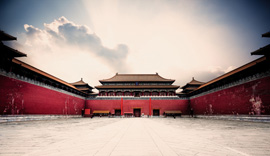
Once forbidden and now permitted. It was an amazing experience visiting a huge palace once build by the Ming and Qing Dynasties. The cultural richness of china is truly reflected at this historical palace.
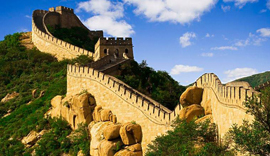
Badaling Great Wall is very popular among both domestic and foreign travelers because it is not only can be reached from Beijing easily, but also it is the best representative section of all Great Wall of China.
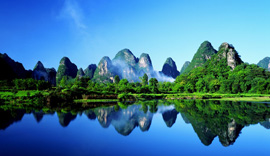
Li River features in typical karst landform, thousands of limestone mountains stick out of the ground along the river bank. Cruising on Li River is just like being part of the magical world.
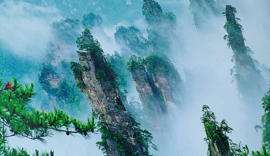
Zhangjiajie National Forest Park was the first national forest park in China, listed as UNESCO World Heritage Site in 1992. It is also famous for the inspiration for the movie AVATAR, the Hallelujah Mountain.
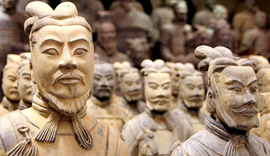
They call it the eighth wonder of the world, and they're right. Discovered in 1974, Terracotta Warriors and Horses is one of the greatest archeological finds in the 20th century, and it definitely should be on your bucket list.
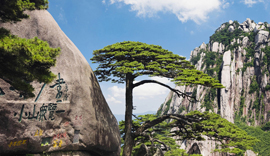
Yellow Mountain, also Mt. Huangshan was listed as World Heritage Site in 1992. It is famous for the five wonders – odd-shaped pines, spectacular rocky peaks, sea of clouds, hot spring and winter snow.
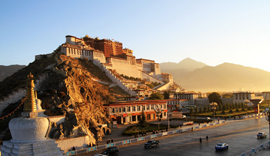
Potala Palace - Masterpiece of Tibetan Architecture. Even a short glimpse is enough to leaven a forever imprint on one’s bottom of heart, and drive him from faraway on the globe to witness this magnificent wonder.

Jiuzhaigou Valley, an amazing fairy land features the awesome sceneries of multi-level waterfalls, crystal waters and colorful lakes. The water presents various color patterns of white, blue, green, turquoise and emerald.
Find China Attractions Full List 2024
No matter for the first time trip in China, or the tenth, you can always get an exciting adventure because China boasts too many things to do. But you may find it difficult to browse among such numerous attractions. Don’t worry, we have already made it easy for you. Here we have list outed more than 100 destinations which offer unique attractions to visit. You only need to locate in the center destination, or just find the attraction you are interested in the attraction A~Z index.
- By Destination
- 798 Art District
- Amne Machin Snow Mountain
- Ancient Koguryo Kingdom
- Ancient Zhuang Rice Terraces
- Anren Ancient Town
- Arxan UNESCO Global Geopark
- Badaling Great Wall
- Bada Rice Terraces
- Badain Jaran Desert
- Baofeng Lake
- Bao Family's Garden
- Baotu Spring
- Baoguang Temple
- Barkhor Street
- Bashang Grassland
- Beidahu Ski Resort
- Beijing Hutong
- Beijing Olympic Park
- Bezeklik Caves
- Bipenggou Valley
- Bishan Village
- Cangshan Mountain
- Canton Tower
- Changbaishan
- Changbaishan Ski Resort
- Chagan Lake
- Chaka Salt Lake
- Chen Clan Ancestral Hall
- Chengde Mountain Resort
- Chengdu Chunxi Road
- Chengdu Panda Base
- Chengdu Renmin Park
- Chengdu Shu Brocade and Embroidery Museume
- Chengdu Tianfu Square
- Chengkan Ancient Village
- Chengyang Bridge
- China National Silk Museum
- China National Tea Museum
- China Snow Town
- Ciqikou Old Town
- City God Temple Shanghai
- Dadonghai Bay
- Dagu Glacier
- Dali Old Town
- Daocheng Yading
- Daxu Ancient Town
- Dazhao Temple
- Dazu Rock Carvings
- Dege Parkhang Sutra-Printing House
- Detian Waterfall
- Dongchuan Red Land
- Dongguan Mosque
- Dufu Thatched Cottage
- Drepung Monastery
- Dujiangyan Confucius Temple
- Dujiangyan Irrigation System
- Dujiangyan Panda Base
- Duoyishu Rice Terraces
- Ejina Populus Euphratica Forest
- Elephant Trunk Hill
- Fenghuang Ancient Town
- Flaming Mountain
- Forbidden City
- Fujian Tulou
- Furong Ancient Town
- Gegentala Grassland
- Giant Wild Goose Pagoda
- Grand Tang Dynasty Ever Bright City
- Grand Canal
- Guanlu Village
- Gubei Water Town
- Gulangyu Island
- Guoliangcun Village
- Hailuogou Glacier Park
- Haitang Bay
- Hanging Temple
- Hangzhou Hu Qing Yu Tang
- Hanshan Temple
- Harbin Ice and Snow Festival
- Harbin Ice and Snow World
- Harbin Ice Lantern Show
- Hefang Street
- Helan Mountain
- Henan Museum
- Hemu Village
- Hong Kong Skyline
- Hongcun Ancient Village
- Hongya Cave
- Huangguoshu Waterfall
- Huanghuacheng Lakeside Great Wall
- Huanglong National Park
- Huanglongxi Ancient Town
- Huangluo Yao Village
- Huangshizhai
- Huaqing Pool
- Huitengxile Grassland
- Huizhou Ancient City
- Hu Kaiwen Ink Facktory
- Hukou Waterfall
- Hulunbuir Grassland
- Humble Administrator's Garden
- Impression Sanjie Liu
- Inner Mongolia Museum
- Jade Buddha Temple
- Jade Dragon Snow Mountain
- Jiankou Great Wall
- Jianmen Pass
- Jiaju Tibetan Village
- Jiayuguan Pass
- Jiezi Ancient Town
- Jinci Temple
- Jingkeng Rice Terraces
- Jingmai Mountain
- Jingshan Park
- Jinli Old Street
- Jinsha Site Museum
- Jinshanling Great Wall
- Jiuzhaigou Valley
- Jokhang Temple
- Juyongguan Great Wall
- Kaiping Diaolou and Villages
- Karajun Grassland
- Karakul Lake
- Karez System
- Kashgar Century-old Teahouse
- Kashgar Old City
- Kizil Caves
- Kuanzhai Alley
- Kubuqi Desert
- Kumbum Monastery
- Kunming Bird and Flower Market
- Kunming Green Lake
- Lama Temple
- Liangzhu Ancient City
- Langzhong Ancient City
- Lantau Island
- Laohuzui Rice Terraces
- Laoshan Mountain
- Leshan Giant Buddha
- Lingering Garden
- Lingshan Grand Buddha
- Lingqu Canal
- Lingyin Temple
- Lijiang Old Town
- Lion Grove Garden
- Liuhe Pagoda
- Longji Rice Terrace
- Longjing Tea Plantations
- Longmen Grottoes
- Lucun Village
- Luodai Ancient Town
- Luoyang Museum
- Luoyang Peony Festival
- Luzhi Water Town
- Master of the Nets Garden
- Mausoleum of Genghis Khan
- Matisi Temple
- Meili Snow Mountain
- Mingsha Mountain & Crescent Lake
- Mogao Caves
- Mukeng Bamboo Forest
- Mukden Palace
- Muslim Quarter
- Mutianyu Great Wall
- Mount Everest
- Mount Gongga
- Mount Huashan
- Mount Jiuhua
- Mount Kailash
- Mount Qingcheng
- Mount Siguniang
- Mount Wutai
- Namtso Lake
- Nanjing Massacre Memorial Hall
- Nanjing Museum
- Nanjing Road
- Nanjing Tulou
- Nanluoguxiang
- Nanshan Pasture
- Nanshan Temple
- Nanping Village
- Nanxun Old Town
- Nanyue King Mausoleum
- National Museum of China
- Norbulingka
- Oriental Pearl Tower
- Palcho Monastery
- Panda Valley
- Ping An Rice Terraces
- Pingjiang Road
- Pingyao Ancient City
- Potala Palace
- Pudacuo National Park
- Qiandao Lake
- Qiantang River Tidal Bore
- Qiao's Family Compound
- Qingdao Beer Museum
- Qinghai Lake
- Qingyang Palace
- Reed Flute Cave
- Rongwo Monastery
- Sanxingdui Museum
- Sera Monastery
- Sertar Larung Gar Buddhist Academy
- Shaanxi History Museum
- Shanxi Museum
- Sayram Lake
- Shanghai Circus World
- Shanghai Disney Resort
- Shanghai Wukang Road
- Shanghai Museum
- Shanghai Oriental Pearl Tower
- Shanghai Tower
- Shanghai Urban Planning Exhibition Center
- Shanghai World Financial Center
- Shanghai Xintiandi
- Shangli Ancient Town
- Shantang Street
- Shaolin Temple
- Shaxi Ancient Town
- Shazhou Night Market
- Shuanglin Temple
- Shunan Bamboo Forest
- Sichuan Cuisine Museum
- Sichuan Museum
- Simatai Great Wall
- Site of Xanadu
- Songzanlin Monastery
- South Putuo Temple
- Splendid China Folk Village
- Stone Forest
- Summer Palace
- Sun Yat Sen Mausoleum
- Sun Yat Sen Memorial Hall (Guangzhou)
- Suzhou Museum
- Suzhou No.1 Silk Factory
- Suzhou Silk Museum
- Tachuan Village
- Tangmo Ancient Village
- Tangyue Memorial Archways
- Taklamakan Desert
- Taoping Qiang Village
- Tashilhunpo Monastery
- Tengger Desert
- Temple of Confucius
- Temple of Heaven
- Temple of the Six Banyan Trees
- Terracotta Warriors
- Three Gorges Museum
- Three Pagodas
- Tiananmen Square
- Tianchi Lake
- Tianmen Mountain
- Tianyi Pavilion
- Tiger Leaping Gorge
- Tongli Water Town
- Tunxi Ancient Street
- Ulan Butong Grassland
- Universal Studios Beijing
- Upper Langde Miao Village
- Victoria Peak
- Wangxian Valley
- Wangjianglou Park
- Wang's Family Compound
- Weifang Kite Festival
- Weizhou Island
- Wenshu Temple
- West Street
- Western Hill
- Western Xia Imperial Tombs
- White Horse Temple
- Window of the World
- Wolong Panda Reserve
- Wong Tai Sin Temple
- Wuhou Temple
- Wudang Mountain
- Wugong Mountain
- Wulanhada Volcano Geopark
- Wulong Karst Landscape
- Wusong Island
- Wuyi Mountain
- Wuzhen Water Town
- Wuzhizhou Island
- Xi'an Ancient City Wall
- Xi'an Banpo Village
- Xi'an Bell Tower
- Xi'an Drum Tower
- Xianggong Mountain
- Xiapu Mudflat
- Xidi Ancient Village
- Xijiang Miao Village
- Xilamuren Grassland
- Xiling Snow Mountain
- Xilingol Grassland
- Xinan River Landscape Gallery
- Xingping Ancient Town
- Xitang Water Town
- Xixi National Wetland Park
- Xumishan Grottoes
- Yabuli Ski Resort
- Yadan Geopark
- Yandaixie Street
- Yangshuo Town
- Yalong Bay Tropical Forest Park
- Yellow Dragon Cave
- Yellow Mountain
- Yao Mountain
- Yingxian Wooden Pagoda
- Yuexiu Park
- Yongding Tulou
- Yongshun Laosicheng Tusi Site
- Yu Garden & Bazaar
- Yuantouzhu Scenic Area
- Yubeng Village
- Yulin Caves
- Yulong River
- Yungang Grottoes
- Yuntai Mountain
- Zhangjiajie Glass Bridge
- Zhangjiajie Grand Canyon
- Zhangjiajie National Park
- Zhangye Danxia Landform Geopark
- Zhaoling Mausoleum
- Zhenyuan Ancient Town
- Zhouzhuang Water Town
- Zhujiajiao Ancient Town
- Zoige Grassland
- Zuojiang Huashan Rock Art
- Aba (Ngawa)
- Dengfeng (Shaolin Temple)
- Zoige (Ruo'ergai)
Popular China Tour Packages
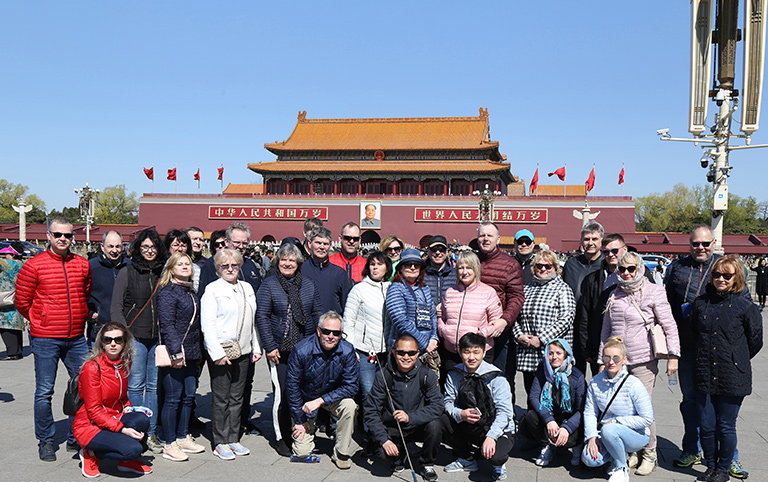
This itinerary covers two ancient capital cities of China – Beijing & Xian, as well as the most developed city – Shanghai. It’s not overstated to call it the most classic China tour, for China’s past, present and future are epitomized in the golden triangle cities.
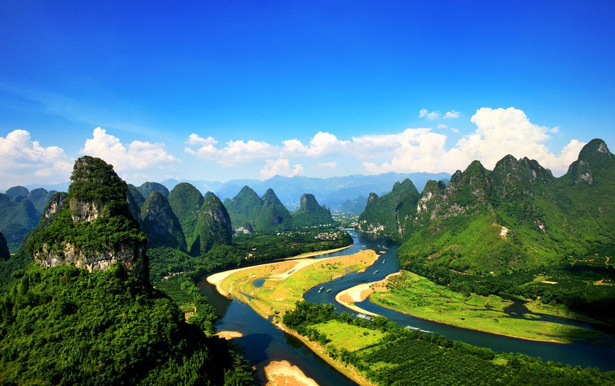
With the Golden Triangle Destinations (Beijing, Xian, Shanghai) plus the fabulous river and countryside views of Guilin, this tour leads you to top 4 destinations you can’t miss for your first time trip in China.
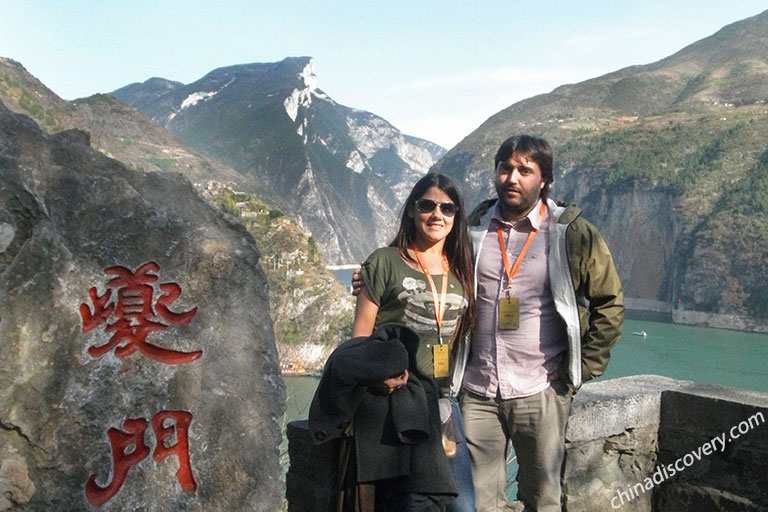
Want to explore the most recommended highlights of China in a leisure way? This is the ideal trip which takes you to some of the most impressive destinations in China, including Beijing, Xian, Guilin, Shanghai, plus Yangtze River region.
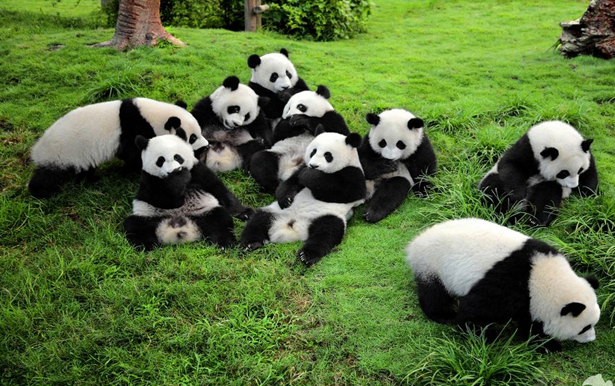
Get amazed by ancient wonders - the Great Wall and Terracotta Warriors. Make a close contact with the precious cute Giant Panda. Be awed by the holy Buddhism culture and magnificent Potala Palace in Lhasa. Enjoy the most beautiful hills and waters in Guilin.
Essential Travel Guide
Here we offer the most comprehensive and practical travel essentials, China travel FAQs & tips and the booking guide for you.
- >> Most popular China tourist destinations
- >> China visa, passport and permit
- >> Weather & Best time to visit China
- >> Transportation in China
- >> China High Speed Train travel
- >> Travel to Guangdong-Hong Kong-Macao Greater Bay Area
- >> Giant Panda Volunteer Programs
- >> Best hiking & trekking destinations in China
- >> Ethnic Groups in China
- >> Top 10 Water Towns in China
- >> Chinese food & cuisines
- >> Useful China travel maps
- >> Practical China travel faqs & tips
Start planning your tailor-made holiday to China by contacting one of our specialists. Once inquired, you’ll get a response within 0.5~23.5 hours.

- Affordable and valuable price
- 100% tailor-made packages
- Highly rated customers reviews
- Efficient customer support
China Tours
- Top 10 China Tours
- Classic China Tours
- China Tours from Beijing
- China Tours from Shanghai
- China Tours from Hong Kong
- China Tours from Chengdu
- Short China Trips
- Customize China Tour
- China Panda Tours
- Family Tour with Kids
- High-Speed Train Tour
- Silk Road Travel
- Yangtze River Cruise
- Hiking & Trekking Tours
- Photography Tours
- China Minority Travel
- Beijing Shanghai Tours
- Shanghai Yangtze Tours
- Chengdu Jiuzhaigou Tours
- Chengdu Lhasa Tours
- Suzhou Hangzhou Tours
- Guilin & Yangshuo
- Zhangjiajie
“Very good experience”
“WONDERFUL 25 DAYS IN CHINA - PRIVATE TOUR”
“Awesome China tour from northeast to southwest”
Any questions, please email us at: [email protected] or call us at: 86-19138970032 (Monday-Friday 9 a.m. to 6 p.m. GMT+8)
- Terms & Condition
- Privacy Policy
- Customer Support
Copyright © 2011-2024. All rights reserved.
Cookie policy
We use cookies to give you the best experience on our website. Continue using our website means you agree with our cookie policy. For more info, please read here .

34 Essential Things to Know Before Visiting China
C hina has been a destination that has been a country of intrigue for many travelers since it opened its borders to the world in the 70s. It’s a country with a unique culture, a place where modernity and ancient traditions seamlessly collide, and where nature really feels out of this world.
No seriously, they did base Avatar on Zhangjiajie.
These days, more and more tourists from around the world want to visit China to experience the thrill of this ancient country and to tap into its rich history, and perhaps catch a glimpse of its bright future.
While modernization has meant that many western amenities are now available, it’s not exactly designed for western visitors.
Those who visit without knowing the major tips for travelers to China will find their experience to be a long list of troubles and catastrophes. In many cities, the English level of the locals isn’t great, so there won’t be anyone to help you out on the ground.
To make sure you don’t face any unwanted obstacles and hurdles that might catch the unprepared unaware, we’ve prepared this China travel guide to things to know before you visit China.
After two and a half years living and working in China, plus being able to travel the country extensively, I’ve pretty much made every mistake so you don’t have to.
1. WeChat Pay or AliPay is preferred
2. china recognizes only one currency – its own, 3. exchange currency at atms in china.
- 4. Don't forget to tell your bank you're visiting China
5. Prepare for Language Barriers (Especially in Banks)
- 6. Don't tip in China
7. Use your haggling skills
8. visas for china, 9. booking hotels in china, 10. travel insurance for china, 11. drinking water in china, 13. pharmacies in china, 14. finding a doctor in china, 15. coping with air pollution in china, 16. bring toilet paper, 17. bring hand soap or hand sanitizer, 18. get to the airport early, 19. expect delays, 20. catching buses and trains in china, 21. bring your passport when making a booking, 22. make use of local booking sites, 23. driving in china, 24. catching taxis in china, 25. eating street food in china, 26. spitting in china, 27. personal space, 28. taking photos in china, 29. mailing things home from china, 30. beware of chinese knock-offs.
- 31. Don't be shy in restaurants
32. Get a local SIM card in China
33. get a vpn for china, 34. download wechat (weixin), best times to visit china, final thoughts, pin to share on pinterest, things to know before you visit china.
In this guide, I’ve compiled some top tips for going to China that I wish I’d had before I got there.
Hopefully, these will help you discover what a wonderfully challenging and beautiful country this is.
Although more and more businesses (particularly large hotel chains and upscale restaurants) now accept Visa and Mastercard, the most widely accepted card scheme is UnionPay.
However, no win 2024, for the most part, when you are traveling in China, most places do not accept cash in China, they preferred WeChat Pay or AliPay only.
The official currency of China is the yuan , otherwise known as RMB or colloquially as ‘quai’.
Notes are available for 1RMB, 10RMB, 20RMB, 50RMB, and 100RMB. There are also 1RMB coins available, as well as smaller fractions of known as ‘Mao’ for the Chinese leader who adorns them.
Chinese businesses do not accept any other currency, including the US dollar or Hong Kong dollar.
While many Chinese banks do not accept foreign cards, larger chains such as HSBC can be used to withdraw local currency from foreign bank accounts. This usually offers a far better exchange rate than services such as Travelex.
International ATMs are available in all major cities but may be harder to find in less tourist friendly areas.
4. Don’t forget to tell your bank you’re visiting China
Before you go to China, make sure your bank knows you’re going to be using your credit or debit card over there. You don’t want your card being canceled mid-trip for unusual transactions.
If you need to do your banking face to face, you may need to bring a local to help translate.
Chinese people don’t often speak very good English, and their grammar is different to English, so simply using Google Translate or another translation app isn’t going to work for important things.
Very few bank employees will have sufficient English to help you, although in larger cities such as Beijing or Shanghai should have an English speaker on staff.
6. Don’t tip in China
The Chinese do not tip, and you aren’t expected to either.
Outside of chain stores and boutiques, it’s totally possible to practice your haggling skills. Never accept the marked price or first price offered.
With shrewd negotiation, it’s possible to get souvenirs and such for a fraction of the quoted price.
Tours in China – The folks at Get Your Guide are the world’s largest online platform for booking tours, tourist attractions and activities. To see a list of all their tours click here .
One of the most important things to know when traveling to China is that they do not offer visas on arrival. So before you travel to China you’ll need to arrange your visa well in advance!
When applying for a tourist visa, you’ll need to provide either a letter of invitation from a Chinese friend or relative, or provide a detailed itinerary of your intended trip. This includes return flights and confirmed reservations for your hotel bookings.
Visas can be applied for in person at the Chinese consulate or can be ordered via post.
Interested in teaching English to Chinese students? You can from the comfort of your home (or wherever you are)
If you want some flexibility with your itinerary, make use of sites that do not require an upfront payment to make bookings.
Booking.com has over 50,000 properties in China including hotels, apartments, and hostels. You get free cancellation on most rooms. And their book now, pay later at check-in system allows you to lock in that rate with some flexibility. Check current hotel prices.
Chinese sites such as C-Trip require no deposit to book accommodation, and you can cancel without penalty once your visa is approved.
While China is a very safe country with relatively low crime, it pays to be prepared. So one of my top China travel tips is don’t leave home without travel insurance!
If something unexpected does happen and you are not insured, you can be up for a lot of money AND inconvenience. For a small price to pay you get peace of mind – if you can’t afford insurance, you can’t afford to travel.
For Americans, consider a big brand like Alliance Travel Insurance who are a world leader in the industry and trusted by millions (y TravelBlog are ambassadors).
Read More – 15 tips for buying the best travel insurance policy
One of the t hings NOT to do in China is drink the water.
For the most part, tap water in China is not drinkable. Bottled water can be purchased very cheaply at most restaurants and stores.
Chinese pharmacies offer both western and eastern medicine at very reasonable prices. Prescription medication can usually be purchased without a prescription (within reason) by simply providing the pharmacist with your identification.
Chinese hospitals can be crowded and daunting, but most major cities also have specialized hospitals catering to foreigners living and working in the country.
Even in the crowded public hospitals, in the large cities like Shanghai or Beijing many doctors will speak English. You may struggle in other areas of China, especially rural areas. Be sure to have a translator app on your phone. Allianz Travel Insurance has a handy Allyz app that can offer great assistance in these circumstances.
Larger cities in China have serious problems with air pollution, particularly in Beijing . Many locals swear by masks on days with hazardous air pollution, but it is safer to avoid exertion on days with particularly bad pollution.
One of the unusual things to know before going to China is that most Chinese toilets do not provide toilet paper. In fact, prepare yourself for the squat toilet, which if you haven’t seen before, is one of the biggest culture shocks!
Hotels and nicer restaurants, or even McDonalds (though not KFC), will have proper toilets with toilet paper available, but it’s always a good idea to carry a roll of toilet paper or a box of tissues!
Like toilet paper, hand soap is not standard in many Chinese bathrooms. Carry a small bottle of hand sanitizer with you just to be sure.
It is advisable to get to the airport three hours early for international flights to China and two hours early for domestic. Chinese airports can often be chaotic and overcrowded, so you’ll be grateful for that extra time.
In my two and a half years in China, I can count on one hand the number of flights that left on time. Be prepared to wait in the airport (or even on the plane) when flying from a Chinese airport.
China is serviced by a fantastic network of buses and trains, including the high-speed G-Trains that can whisk you across the country in a matter of hours.
Rates are extremely affordable by western standards. Train stations are usually very modern and have high security.
You can buy train tickets from machines which will usually have the function to translate to English, but if not, you may need to use Google Translate (or another translator app if you don’t get a VPN ) to help you communicate with the ticket officer.
I have had a Chinese reader tell me that people with passports (i.e. foreigners) can not buy train ticket from machine. And in Beijing, to buy a subway ticket you may need a passport. Have that translator app ready and ask!
Read More – 2 Week Itinerary for China. Best places to visit in China
You’ll need your passport when making a booking, and you can only book one ticket per passport.
Chinese booking sites such as C-Trip and eLong often offer better rates than western booking sites. Be sure to check both when planning your trip.
To drive a car in China, you will need to obtain a Chinese driver’s license. International Driving Permits or other foreign driver’s licenses are not recognized in China. Only foreigners with a valid residence permit can apply for a Chinese driver’s license .
Since Chinese roads can be rather chaotic anyway, so you’re saved dealing wtih this kind of trauma!
Taxis in China are cheap and plentiful. Most taxi drivers will not speak English, so it’s a good idea to get your destination address written in Chinese by somebody at your hotel.
Chinese street food is delicious and it is everywhere! When choosing which vendor to purchase from, check to see where the locals are dining.
If you see a queue, it’s likely to be a safer bet.
The Chinese do not use handkerchiefs and tissues to clear their noses, and instead spit. While this can be a bit confronting when you first visit China, they’re similarly affronted when they see us blowing our noses and keeping it.
China is a crowded place, and the locals have become accustomed to a much smaller personal space than we are accustomed to in the west.
Don’t be surprised if you’re jostled or shoved when queuing – it’s just part of Chinese culture.
The Chinese love to take photographs, and don’t be surprised if a local tries to snap a sneaky photo of you or even comes up to ask for a picture with you.
Like in most other countries, it always pays to ask permission before photographing a person or a government building.
Likewise, if someone takes a photo of you without your permission, try not to get too upset about it, they are just not used to seeing foreigners.
If you don’t want your photo taken, simply say “Bu Yao Pāi Zhào” which means “don’t take photos.” Or simply saying “Bu Yao” would be enough to show what you mean.
With cheap prices and a huge variety of products, it can be easy to go over your luggage limit while shopping in China.
Thankfully, it is very affordable to post things home using China Post’s surface (sea) mail.
This can take one to two months but is a very affordable way to get your belongings home.
Shopping streets such as Nanjing Road in Shanghai are a great place to find a bargain, but be aware that knockoffs of prominent brands can be seized at the airport upon your return home.
31. Don’t be shy in restaurants
Chinese waiters and waitresses aren’t as proactive as you may be used to, so don’t be afraid to throw your hands up and call for the fuyian if you want service.
Also be aware that conventional western service is hard to come by. Don’t be surprised if your starter, main, and dessert all arrive at once while your friend still waits for their first dish.
If you want to always have access to the internet, be sure to get a local sim card.
China’s major carriers include China Telecom and China Unicom . SIM cards can be purchased at the airport or at most corner stores, and credit is quite affordable.
Most Chinese SIMs are locked to the province in which they are purchased, so you’ll pay roaming charges when texting, calling, or using data outside of this province.
Even then, the rate is far cheaper than international roaming.
You can also get really cheap eSims from Airalo. You can set it up so it’s ready to go as soon as you arrive. That way you don’t have to worry about finding a local sim card. See prices and availability here.
When you visit China keep in mind that its ‘Great Firewall’ blocks sites such as Facebook, Whatsapp, Twitter, YouTube, Instagram, and most of the Google selection. That means no Gmail and no Google Maps.
If you want to access these while you’re visiting China, you’ll need to purchase a VPN (Virtual Private Network). Don’t worry, a VPN is totally legal and everyone does it.
When shopping for VPNs, check that they cover China – as many free options do not.
Get your vPN with NordVPN here . It’s what we use and is fantastic for China.
China’s premier messaging app is Weixin (WeChat in English) and everybody you meet – expats and locals alike – will have it. You even use it to pay for things, book a table in a restaurant and order food.
Without it, you simply cannot function in China. You can download the free app for free, but you need to have at least two friends already set up to be able to create an account. You can always ask your hotel accommodation to help you with this, if you don’t know anyone in China.
Once you’re all set up, it’s a great way to keep in touch with locals you meet along the way who may not have social media.
The best time to visit China is during the spring (April–May) and autumn (September–October).
These seasons offer comfortable weather and are considered tourism-friendly since they are not so overcrowded.
If you’re planning on visiting the countryside of China such as Yangshuo or the Karst Mountains, this time of year offers the perfect balance of mild temperatures and low rainfall.
Make sure you avoid Chinese New Year, which while is a huge cultural experience, it’s the busiest time of year and when the Chinese people from overseas return home to spend time with the family.
Most things are closed and the weather is cold since its always in January/February.
Chinese New Year may be a great time for locals but for tourists, it’s not the best time to visit China.
This is a massive country with a rich history, over thirty distinct cultural groups, and a huge variety of landscapes to explore – don’t limit yourself to the same few sites everybody else visits.
Most importantly, don’t be afraid to get off the beaten track. While Beijing , Shanghai , and Xi’an are worthy of their international fame, there is so much more to China than these cities and their cultural sites.
I hope my local insights and traveling to China tips help you have a memorable time.
More China Travel Tips
Need more tips for visiting China? Check out these other guides…
- What to Do in Beijing
- Things to Do in Shanghai
- Cycling Through Yangshuo Countryside China
- Climbing the Great Wall of China
- Hiking the Tiger Leaping Gorge in China
- 2 Week China Itinerary – Unmissable Places to Visit in China
- Incredible Things to do in Hong Kong
If you have already visited, do you have any tips for travel in China or other things to know before visiting China? Please share in the comments below!

- Share full article
Advertisement
Supported by
China Launches Spacecraft to the Far Side of the Moon
If successful, the Chang’e-6 mission will be the first in history to return a sample from a part of the moon that we never get to see from Earth.

By Katrina Miller
On Friday, China launched a second lander to the lunar far side. If the mission is successful, it will be the first in history to bring back a sample from the part of the moon that Earth never sees.
The mission is called Chang’e-6, named after the Chinese moon goddess and pronounced “chong-uh.” It lifted off on time at 5:27 p.m. local time under gloomy skies from the Wenchang space site on Hainan Island in southern China, carried to space by a Long March 5 rocket. About 32 minutes after the launch, the spacecraft separated from the rocket and the mission proceeded on a 5-day journey to the moon.
Why the far side of the moon?
Unlike Earth, whose erosion and shifting crust constantly renew its surface, the moon remains frozen in time. By studying samples from different parts of the lunar surface, scientists seek information about the origin and evolution of Earth’s satellite. But so far, the United States, the former Soviet Union and China have gathered samples only from the near side of the moon.
The far side of the moon — it is not actually the dark side of the moon — is distinct from the near side. It has a thicker crust, more craters and fewer maria, or plains where lava once flowed. But no one really knows why the two sides of the moon are so different.
“People want to know why this happened,” said Yi Xu, a professor at the Space Science Institute of Macau University of Science and Technology and a member of the Chang’e-6 science team. “If we can collect some samples on the far side, then we can maybe get some clues to these questions.”
What will Chang’e-6 do?
Chang’e-6 is the latest in a series of Chinese lunar missions designed to orbit or land on the moon. The mission will last 53 days.
The first to visit the far side of the moon, in 2019, was Chang’e-4, which included a rover to explore the moon’s Von Karman crater. China remains the only nation to send a lander to the other half of the moon.
“China has found its niche, to explore the lunar far side,” said Roberto Bugiolacchi, a planetary geologist also at Macau University of Science and Technology who has analyzed data from prior Chinese moon missions.
In 2020 another mission, Chang’e-5, gathered nearly four pounds of regolith from the moon’s near side and brought it to Earth. Scientists in other countries, including some in the United States, recently petitioned to study those samples.

Chang’e-6 will follow in Chang’e-5’s footsteps, but on the lunar far side. It will take five days after launch for the mission to reach the moon . There, it will orbit the moon for about 20 days. Then, after a brief stay on the surface of 48 hours, it will spend additional weeks in lunar orbit preparing for a five-day return trip to Earth.
The mission’s orbiter will circle the moon while its lander descends into the 1,616-mile-wide South Pole-Aitken basin on the lunar surface. The impact that created the basin — among the largest in the history of the solar system — is thought to have dug up material from the lunar mantle. If that material can be retrieved, scientists can learn more about the history of the moon’s insides.
“It’s very, very exciting,” said Jim Head, a planetary geologist at Brown University who collaborated with Chinese researchers to analyze the Chang’e-5 lunar sample. “Just like before the Apollo samples were returned. But now, it’s the other side of the moon.”
According to Yuqi Qian, a lunar geologist at the University of Hong Kong, the Chang’e-6 lander is equipped with a camera, spectrometer and radar to investigate its surroundings and pick a spot to collect a sample. It will gather soil from the surface using a mechanical arm and collect a subsurface sample from as far down as 6.5 feet with a drill.
A vehicle on the lander will then lift off from the moon, passing the sample on to the orbiter’s re-entry module for its return back to Earth.
Because the same side of the moon always faces Earth, it is impossible to directly establish communications with the lunar far side. In 2018, China sent the Queqiao satellite into lunar orbit to relay information from Chang’e-4 to Earth. In March, it launched a second satellite called Queqiao-2. The pair will be used in tandem to remain in contact with Chang’e-6 during sample collection.
How does Chang’e-6 fit into China’s broader space exploration goals?
China’s lunar exploration program is one facet of the nation’s growing presence in space, which includes missions to Mars and future visits to asteroids . The Chang’e mission series, designed in the 1990s, included three phases: orbiting, landing and sampling. So far, it has a 100 percent success rate.
With the return of the Chang’e-6 sample, Dr. Qian said, China’s lunar exploration will pivot to a new strategy: investigation, construction and utilization. Its next two missions are already in development.
Chang’e-7, expected to launch in 2026, will search for water near the lunar south pole. Chang’e-8 will survey material in the same region that could potentially be used to build future infrastructure, according to the China National Space Administration .
China hopes to send astronauts to the moon in 2030 and is also working on establishing a permanent, international lunar research base by the 2030s.
What other missions have been to the moon this year?
If the first leg of Chang’e-6’s journey is successful, the spacecraft will be the third to land on the moon in 2024.
Japan reached the moon with the Smart Lander for Investigating Moon, or SLIM, on Jan. 20. The small spacecraft ended up in an awkward configuration, with its engine nozzle pointed toward space . But it also made Japan the fifth country to reach the moon’s surface. Unexpectedly, the SLIM lander has continued to function on the lunar surface long after Japan’s space agency had expected to lose contact with the robotic vehicle.
The year’s second moon landing was the first by a privately operated spacecraft. Odysseus, built by Intuitive Machines of Houston, reached the lunar surface on Feb. 22 . But the spacecraft toppled over , limiting the amount of science it could finish before freezing during the lunar night. Intuitive Machines has plans for another mission soon.
Katrina Miller is a science reporting fellow for The Times. She recently earned her Ph.D. in particle physics from the University of Chicago. More about Katrina Miller
What’s Up in Space and Astronomy
Keep track of things going on in our solar system and all around the universe..
Never miss an eclipse, a meteor shower, a rocket launch or any other 2024 event that’s out of this world with our space and astronomy calendar .
A celestial image, an Impressionistic swirl of color in the center of the Milky Way, represents a first step toward understanding the role of magnetic fields in the cycle of stellar death and rebirth.
Scientists may have discovered a major flaw in their understanding of dark energy, a mysterious cosmic force . That could be good news for the fate of the universe.
A new set of computer simulations, which take into account the effects of stars moving past our solar system, has effectively made it harder to predict Earth’s future and reconstruct its past.
Dante Lauretta, the planetary scientist who led the OSIRIS-REx mission to retrieve a handful of space dust , discusses his next final frontier.
Is Pluto a planet? And what is a planet, anyway? Test your knowledge here .
- Election 2024
- Entertainment
- Newsletters
- Photography
- Personal Finance
- AP Investigations
- AP Buyline Personal Finance
- AP Buyline Shopping
- Press Releases
- Israel-Hamas War
- Russia-Ukraine War
- Global elections
- Asia Pacific
- Latin America
- Middle East
- Election Results
- Delegate Tracker
- AP & Elections
- Auto Racing
- 2024 Paris Olympic Games
- Movie reviews
- Book reviews
- Personal finance
- Financial Markets
- Business Highlights
- Financial wellness
- Artificial Intelligence
- Social Media
Senate passes bill forcing TikTok’s parent company to sell or face ban, sends to Biden for signature
The Senate passed legislation Tuesday that would force TikTok’s China-based parent company to sell the social media platform under the threat of a ban. Here’s what to know.
A TikTok content creator, speaks to reporters outside the U.S. Capitol, Tuesday, April 23, 2024, in Washington, as Senators prepare to consider legislation that would force TikTok’s China-based parent company to sell the social media platform under the threat of a ban, a contentious move by U.S. lawmakers. (AP Photo/Mariam Zuhaib)
- Copy Link copied
Jennifer Gay, a TikTok content creator, sits outside the U.S. Capitol, Tuesday, April 23, 2024, in Washington as Senators prepare to consider legislation that would force TikTok’s China-based parent company to sell the social media platform under the threat of a ban, a contentious move by U.S. lawmakers. (AP Photo/Mariam Zuhaib)
FILE - A TikTok content creator, sits outside the U.S. Capitol, April 23, 2024, in Washington. TikTok is gearing up for a legal fight against a U.S. law that would force the social media platform to break ties with its China-based parent company or face a ban. A battle in the courts will almost certainly be backed by Chinese authorities as the bitter U.S.-China rivalry threatens the future of a wildly popular way for young Americans to connect online. (AP Photo/Mariam Zuhaib, file)
Sen. Michael Bennet, D-Colo., center, speaks to reporters outside the U.S. Capitol, Tuesday, April 23, 2024, in Washington as Senators prepare to consider legislation that would force TikTok’s China-based parent company to sell the social media platform under the threat of a ban, a contentious move by U.S. lawmakers. (AP Photo/Mariam Zuhaib)
WASHINGTON (AP) — The Senate passed legislation Tuesday that would force TikTok’s China-based parent company to sell the social media platform under the threat of a ban, a contentious move by U.S. lawmakers that’s expected to face legal challenges and disrupt the lives of content creators who rely on the short-form video app for income.
The TikTok legislation was included as part of a larger $95 billion package that provides foreign aid to Ukraine and Israel and was passed 79-18. It now goes to President Joe Biden, who said in a statement immediately after passage that he will sign it Wednesday.
A decision made by House Republicans last week to attach the TikTok bill to the high-priority package helped expedite its passage in Congress and came after negotiations with the Senate, where an earlier version of the bill had stalled. That version had given TikTok’s parent company, ByteDance, six months to divest its stakes in the platform. But it drew skepticism from some key lawmakers concerned it was too short of a window for a complex deal that could be worth tens of billions of dollars.
The revised legislation extends the deadline, giving ByteDance nine months to sell TikTok, and a possible three-month extension if a sale is in progress. The bill would also bar the company from controlling TikTok’s secret sauce: the algorithm that feeds users videos based on their interests and has made the platform a trendsetting phenomenon.
TikTok did not immediately return a request for comment Tuesday night.
The passage of the legislation is a culmination of long-held bipartisan fears in Washington over Chinese threats and the ownership of TikTok, which is used by 170 million Americans. For years, lawmakers and administration officials have expressed concerns that Chinese authorities could force ByteDance to hand over U.S. user data, or influence Americans by suppressing or promoting certain content on TikTok.
“Congress is not acting to punish ByteDance, TikTok or any other individual company,” Senate Commerce Committee Chairwoman Maria Cantwell said. “Congress is acting to prevent foreign adversaries from conducting espionage, surveillance, maligned operations, harming vulnerable Americans, our servicemen and women, and our U.S. government personnel.”
Opponents of the bill say the Chinese government could easily get information on Americans in other ways, including through commercial data brokers that traffic in personal information. The foreign aid package includes a provision that makes it illegal for data brokers to sell or rent “personally identifiable sensitive data” to North Korea, China, Russia, Iran or entities in those countries. But it has encountered some pushback, including from the American Civil Liberties Union, which says the language is written too broadly and could sweep in journalists and others who publish personal information.
Many opponents of the TikTok measure argue the best way to protect U.S. consumers is through implementing a comprehensive federal data privacy law that targets all companies regardless of their origin. They also note the U.S. has not provided public evidence that shows TikTok sharing U.S. user information with Chinese authorities, or that Chinese officials have ever tinkered with its algorithm.
“Banning TikTok would be an extraordinary step that requires extraordinary justification,” said Becca Branum, a deputy director at the Washington-based Center for Democracy & Technology, which advocates for digital rights. “Extending the divestiture deadline neither justifies the urgency of the threat to the public nor addresses the legislation’s fundamental constitutional flaws.”
Sen. Ron Wyden, a Democrat who voted for the legislation, said he has concerns about TikTok, but he’s also worried the bill could have negative effects on free speech, doesn’t do enough to protect consumer privacy and could potentially be abused by a future administration to violate First Amendment rights.
“I plan to watchdog how this legislation is implemented,” Wyden said in a statement.
China has previously said it would oppose a forced sale of TikTok, and has signaled its opposition this time around. TikTok, which has long denied it’s a security threat, is also preparing a lawsuit to block the legislation.
“At the stage that the bill is signed, we will move to the courts for a legal challenge,” Michael Beckerman, TikTok’s head of public policy for the Americas, wrote in a memo sent to employees on Saturday and obtained by The Associated Press.
“This is the beginning, not the end of this long process,” Beckerman wrote.
The company has seen some success with court challenges in the past, but it has never sought to prevent federal legislation from going into effect.
In November, a federal judge blocked a Montana law that would ban TikTok use across the state after the company and five content creators who use the platform sued. Three years before that, federal courts blocked an executive order issued by then-President Donald Trump to ban TikTok after the company sued on the grounds that the order violated free speech and due process rights.
The Trump administration then brokered a deal that had U.S. corporations Oracle and Walmart take a large stake in TikTok. But the sale never went through.
Trump, who is running for president again this year, now says he opposes the potential ban.
Since then, TikTok has been in negotiations about its future with the secretive Committee on Foreign Investment in the United States, a little-known government agency tasked with investigating corporate deals for national security concerns.
On Sunday, Erich Andersen, a top attorney for ByteDance who led talks with the U.S. government for years, told his team that he was stepping down from his role.
“As I started to reflect some months ago on the stresses of the last few years and the new generation of challenges that lie ahead, I decided that the time was right to pass the baton to a new leader,” Andersen wrote in an internal memo that was obtained by the AP. He said the decision to step down was entirely his and was decided months ago in a discussion with the company’s senior leaders.
Meanwhile, TikTok content creators who rely on the app have been trying to make their voices heard . Earlier Tuesday, some creators congregated in front the Capitol building to speak out against the bill and carry signs that read “I’m 1 of the 170 million Americans on TikTok,” among other things.
Tiffany Cianci, a content creator who has more than 140,000 followers on the platform and had encouraged people to show up, said she spent Monday night picking up creators from airports in the D.C. area. Some came from as far as Nevada and California. Others drove overnight from South Carolina or took a bus from upstate New York.
Cianci says she believes TikTok is the safest platform for users right now because of Project Texas, TikTok’s $1.5 billion mitigation plan to store U.S. user data on servers owned and maintained by the tech giant Oracle.
“If our data is not safe on TikTok,” she said. “I would ask why the president is on TikTok .”
Associated Press writers Mary Clare Jalonick and Matt O’Brien contributed to this report.
- Skip to main content
- Keyboard shortcuts for audio player
Pop Culture Happy Hour
- Performing Arts
Pop Culture
You know it when you see it: here are some movies that got sex scenes right.

Linda Holmes

It is a happy coincidence that our "What makes a good sex scene?" episode came out in the same week as Challengers, a film about a romance triangle in the tennis world starring Josh O'Connor, Zendaya and (not pictured) Mike Faist. Niko Tavernise/Metro-Goldwyn-Mayer Pictures hide caption
It is a happy coincidence that our "What makes a good sex scene?" episode came out in the same week as Challengers, a film about a romance triangle in the tennis world starring Josh O'Connor, Zendaya and (not pictured) Mike Faist.
What makes a good sex scene? It can be easier spot bad sex, but Aisha Harris, Christina Tucker, Ronald Young, Jr. and I tried to focus on the good this week on Pop Culture Happy Hour. You can listen to our full conversation here. (We didn't originally plan for this episode to run the same week as our episode about Challengers , which is out in theaters now, but it's a happy coincidence, since that film has gotten a lot of attention — probably too much, relative to its other merits — for the sex scenes involving its three leads. It's really very good .)

Movie Reviews
Watch a tense romantic triangle play out on the tennis court in 'challengers'.
It's often very obvious when a sex scene is bad, just like when a sex scene in a book is bad. It can get so uncomfortable to watch that you have to leave the room (and not in a way that feels true to the story). One of my personal tells for a bad sex scene is when all I can think about is how hard the actors are trying to persuade me that the characters are having a good time. For example, there has been much good discussion in recent years about Showgirls being a more interesting and competent project than it originally got credit for, but in that one pool scene (if you know it, you know it), all I can see is the effort.

Lauren Bacall And The 'Sex? What Sex?' Kind Of Movie Sex
It's not always as clear which scenes are good . That's partly because they serve so many different functions, all of which look different, and all of which can be effective. Furthermore, you don't want to confuse whether a sex scene is used well in a film with whether it's hot to you personally, despite the fact that there is overlap between those considerations.

In the 'Last Dance,' Magic Mike leaves his thong-and-dance routine behind
Here's what I mean: When Aisha talks about the sequence near the beginning of Magic Mike's Last Dance , it's not irrelevant that the scene is, to her (and to me), hot. But it also makes sense in the context of the film and the franchise, partly because of the way it sets up the power dynamic between Mike (Channing Tatum) and Max (Salma Hayek Pinault). Mike is older now, he knows more, and the way he approaches a lap dance is actually different than in earlier movies.
And not all good sex scenes are hot in the same ways. The one I mentioned in the episode, from the romantic drama Love & Basketball , is sexy, yes. But it's also a scene between young adults (the talented basketball players Monica and Quincy, played by Sanaa Lathan and Omar Epps), and as such, it incorporates a tentativeness that's not present in Magic Mike's Last Dance , to say the least. As Ronald pointed out during our discussion, that sex scene is quite different from one that takes place later in Monica and Quincy's relationship, when they're older and know each other better. That certainly feels true to real life, but it's not always reflected in Hollywood films, where I would tentatively estimate that 90% of on-screen sex is more idealized and thus less intimate than real-life sex, in part because it isn't allowed to change over the course of a relationship.

Movie Interviews
'like it or not, we live in oppenheimer's world,' says director christopher nolan.
Even further from the hotness of the lap dance scene is Ronald's pick: the imagination of Kitty Oppenheimer (Emily Blunt) running wild in Oppenheimer. While her husband (Cillian Murphy) is being interrogated, she pictures him having sex with his mistress, Jean Tatlock (Florence Pugh). It goes by quickly enough that it might seem like a Christopher Nolan flourish for flourish's sake, but it serves the purpose of letting you feel her pain over her husband's affair. Her relationship with Robert doesn't look especially romantic in the film, let alone sexually charged; she finds herself consumed by the idea that he was having hot sex with this other woman, and she locks eyes with her vision of a naked Tatlock and finds herself tormented. It's not really the intent of the scene to titillate the audience, just to give specificity to the shape of Kitty's preoccupation with the affair.

What makes a good sex scene?
Christina raised another really important point, which is that sex scenes also collide with viewers at very specific moments. Her example from Bound , and the scenes between Violet (Jennifer Tilly) and Corky (Gina Gershon), touches on (among other things) her own history. It's an underappreciated aspect of the sex-in-movies discourse: representation matters in these scenes as much as anywhere else. I always wish I saw more sex scenes in movies that featured a broader variety of body types; it's still really rare to see ones that feature anybody who is even average sized. This is one of the reasons I'm curious about the upcoming season of Bridgerton , which places its focus on the gorgeous and curvaceous Penelope (Nicola Coughlan).

Looking for 'nomance': Study finds teens want less sex in their TV and movies
Good sex scenes are like any other kind of good filmmaking, honestly: it comes down to execution with purpose and care, done relative to whatever the function of the scene might be.
Whether that's spiciness or conflict or relationship growth or (as in the case of Bound ) setting up a steamy neo-noir story that wouldn't be the same if it weren't hot as heck, form follows function, ideally.
This piece also appeared in NPR's Pop Culture Happy Hour newsletter. Sign up for the newsletter so you don't miss the next one, plus get weekly recommendations about what's making us happy.
Listen to Pop Culture Happy Hour on Apple Podcasts and Spotify .

COMMENTS
14. The Yangtze River. 15. Inner Mongolia. 1. The Great Wall — Top Landmark of China. The Great Wall is an absolute must-see when visiting China, particularly for first-time travelers. This ancient and magnificent military defense project, spanning tens of thousands of kilometers, continues to emanate a distinct allure.
14. Forbidden City, Beijing. Among China's imperial sights, none can compare in size, grandeur or mystique to Beijing's Forbidden City. Built between 1406 and 1420, this sprawling palace was off-limits for 500 years until the overthrow of the last Qing emperor in 1911.
Guilin Li River. Chengdu Pandas. Lhasa Potala Palace. Silk Road. Best China Tours for Expats in China: ☛ 3 Days Classic Zhangjiajie Natural Wonders Tour. ☛ 2 Days Leisure Chengdu Private Tour with Panda Visit. ☛ 3 Days Beijing Essential Short Stay Tour. ☛ 4 Days Jiayuguan Dunhuang Tour (Silk Road Short Break)
China overflows with beautiful places to visit: Desert vistas. Lush gorges. Charming riverside towns. Epic statues and buildings. Let these pictures inspire your next vacation.
4. The Summer Palace, Beijing The Summer Palace. An easy 15-kilometer commute from Beijing, the sumptuous Imperial Summer Palace (Yíhé Yuán) is set amid more than 700 acres of beautiful parkland and is one of China's most visited attractions. While the palace itself was built in 1153, its large lake was added in the 14th century to enhance the Imperial Gardens.
1. Mutianyu Great Wall. 24,055. Ancient Ruins. Admission tickets from $32. In 1368 AD, Mutianyu Great Wall was built by Xu Da who is the main general for Zhuyuanzhang in the Great Wall ruins of Northern Qi Dynasty. Linked to Gubeikou in the east and Juyongguan in the west,the section of the Great Wall is the military hub defensing of the ...
Typically, rice and stir-fried dishes are more common in southern China, where rice is cultivated, while buns, dumplings and noodles are the staples in the wheat-growing north. Don't miss xiaolongbao, or soup dumplings - a favorite breakfast food in Shanghai - and crispy Beijing roast duck. For delicate dim sum, go to Guangdong province.
The Great Wall of China, The Forbidden City, Imperial Palace, The Terracotta Army, The Summer Palace, Li River, Guilin, Chengdu Research Base of Giant Panda Breeding, Yangtze River and the Three Gorges and many more. The China tourist places offer an overwhelming adventure taking the tourists back in the timelines to the cultural and heritage ...
14. Leshan. Located in Sichuan Province in southwest China, Leshan lies at the spot where the Dadu, Min and Qingyi rivers meet. The city is home to the largest stone-carved Buddha in the world and known for its proximity to the Mount Emei Scenic Area's lovely scenery and historical attractions.
Here are 12 of the best places to visit in China. Main photo: Zhengyang Gate in Beijing (Getty Images) The Jinshanling section of the Great Wall of China (Getty Images) 1. The Great Wall of China ...
1. Great Wall, Beijing - A Must-Do for Any Traveler in China. The Great Wall (长城), one of the world's most iconic landmarks, is a must-visit attraction when in Beijing. Spanning over 21,000 kilometers, this ancient wonder offers a glimpse into China's rich history and architectural marvels.
25. Dalian (from USD 73.0) Source: www.viator.com. Discover the most fascinating city in North China—often referred to as "the northern pearl" or "the football city" (due to the locals' love for football). It was named among the three major tourist cities in China in 2017, alongside Chengdu and Suzhou.
Foshan's Famous Buddhas. 14. Dunhuang and Jiayuguan. 15. The Gardens of Wuhan. 1. Beijing: Home of the Imperial Palace and Forbidden City. The Forbidden City in Beijing. China's second biggest city, Beijing has been the country's political center for more than 800 years.
Highlights: the political and cultural center of China, over 3,000 years' history, rich historical sites and royal remainings Top Attractions: Forbidden City, Great Wall, Temple of Heaven, Summer Palace, Hutongs Best Time to Visit: April-June, September-November Beijing, the capital of last two ancient dynasties in China, collecting many grand attractions showing the imperial lordliness ...
Places to Visit in China. Explore popular experiences. See what other travellers like to do, based on ratings and number of bookings. See All. Private Sightseeing Tours (7,162) Historical Tours (4,819) Theme Parks (413) Multi-day Tours (1,799) Nature and Wildlife Tours (1,314)
The Ultimate China Bucket List: 50 Must-See Places to Visit in China. China is a huge country. There's no ifs, buts, or coconuts about it. At 9,596,960 square kilometers - it weighs in behind only Russia, Canada, and the United States for sheer size.
Here is the list of top 30 China destinations or places to go for travel in China, including Beijing, Xian, Shanghai, Guilin, Lhasa, Chengdu, etc. Tailor-made Tour Package Refundable Quick Response 3,670+ comments (1,870+ reviews) Contact Us Form Email us: [email protected] Call us: +86-28-85227275 / 85223672 .
There are 38 World Cultural Heritage Sites in China, including the world-famous Forbidden City, Great Wall, Terra-cotta Warriors, Mogao Caves, Potala Palaces, etc. Water towns, ancient towns, ancient city, traditional gardens, royal palaces, museums, ethnic villages…there are much more to explore.
Huanglong National Scenic Reserve. Loosely called as "Fairy Land on Earth", this place is a sight to see and is one of the best places to visit in China. With light blue water cascading down over a series of pools stretching out as far as your eyes can see, this place is pretty unreal. During the summer months, expect to see the surrounding ...
Table Of Contents. Things to Know Before You Visit China. 1. WeChat Pay or AliPay is preferred. 2. China recognizes only one currency - its own. 3. Exchange currency at ATMs in China. 4.
Hong Kong CNN —. Multiple days of heavy rains have lashed southern China, unleashing deadly floods and threatening to upend the lives of tens of millions of people as rescuers rush to evacuate ...
Chang'e-6 is scheduled to launch on Friday at 5:27 a.m. Eastern time from the Wenchang space site on Hainan Island in southern China. A live broadcast of the launch is expected to be available ...
Hong Kong diners are spoiled for choice for new restaurants to try in May. Here are 10 must-visit places that serve Japanese favourites, Korean chicken, banh mi, Singaporean pizza and more.
Here's what to know. WASHINGTON (AP) — The Senate passed legislation Tuesday that would force TikTok's China-based parent company to sell the social media platform under the threat of a ban, a contentious move by U.S. lawmakers that's expected to face legal challenges and disrupt the lives of content creators who rely on the short-form ...
Her example from Bound, and the scenes between Violet (Jennifer Tilly) and Corky (Gina Gershon), touches on (among other things) her own history. It's an underappreciated aspect of the sex-in ...